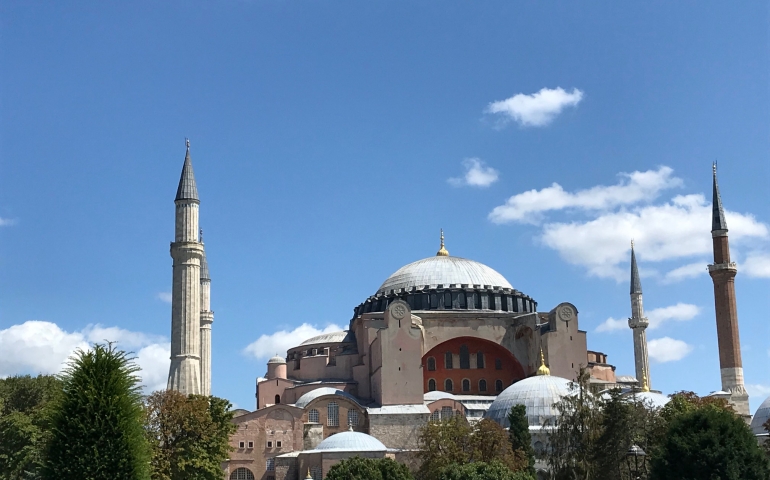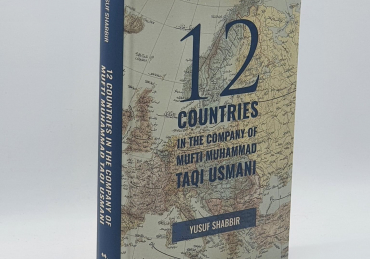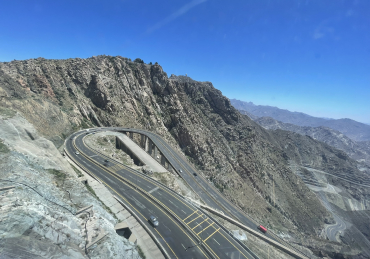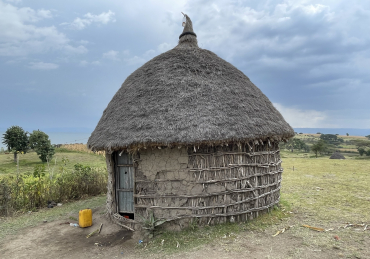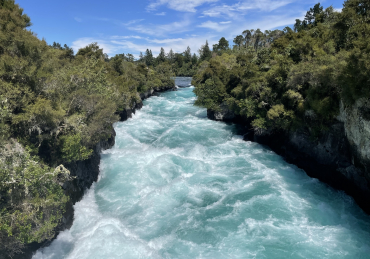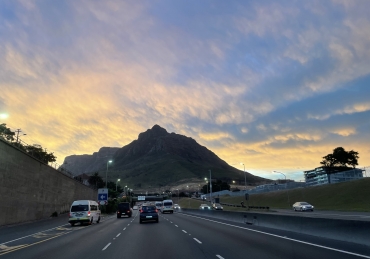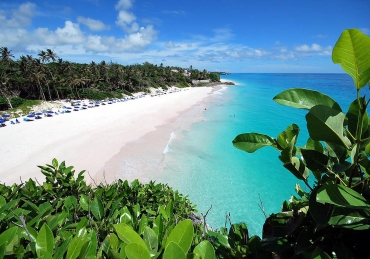One week in Istanbul (Aug 2020)
In the name of Allah, the Compassionate the Merciful
Introduction
Friday 10 July 2020 was a momentous day for the Muslim Ummah. Turkey’s highest administrative court, the Council of State, ruled unanimously to annul the 1934 cabinet decree which converted the 1500-year-old landmark in Istanbul, Aya Sofya from a mosque to a museum. Shortly thereafter, President Erdogan signed a presidential decree turning the hugely symbolic site back into a Masjid. Many western politicians and Christians started to criticise this decision. I tweeted the following on 11 July:
The famous Turkish historian, Dr. Halil Inalcık, said:
“The West has never forgotten the Conquest of Istanbul and the conversion of the Hagia Sophia.”
President Erdogan said:
“The resurrection of the Hagia Sophia has paved the way for the liberation of al-Masjid Al-Aqsa.”
He also said:
“Reverting the Aya Sofya to a Masjid was my childhood dream.”
Two weeks later, on Friday 24 July 2020, the first Jumuʿah Salah was performed here after 86 years. Although the western media did not give this much prominence, some 350,000 people participated in the prayer within the complex and out on the roads and gardens. President Erdogan himself was present and recited from the Quran. The President of the Turkish Diyanet (Directorate of Religious Affairs), Professor Dr. Ali Erbas delivered the sermon and revived the Ottoman tradition of holding the sword whilst doing so.
Earlier in the year, we had planned as a family to travel to Saudi Arabia for ʿUmrah during the blessed month of Ramadan. However, these plans were postponed due to Covid-19. Subsequently, we were thinking of travelling to somewhere in Europe as the travel restrictions started to ease. When the Friday prayers were live streamed from Istanbul, it was clear that the country to travel to at the moment was Turkey, enabling us to visit Aya Sofya and also meet with some local scholars and old acquaintances. We therefore booked tickets for our family of five including my three children: Muhammad (6), Ahmad (4) and Fatimah (2).
Day 1 – Saturday 15 August 2020
From Blackburn to Istanbul
We depart from Blackburn at 7am and arrive at London Stanstead Airport at 11am. We park our car at the Airport, check in and board the 1.25pm Pegasus Airlines flight to Istanbul. Masks are mandatory at the Airport and also on the flight including for children above the age of two. Due to Covid-19, flights to many countries remain closed. Turkey has since become a popular destination and the flight is nearly full. Hand luggage is also checked in and our temperature is checked as we board the plane. We perform Dhuhr and ʿAṣr Ṣalāh before boarding as we are expected to arrive Istanbul shortly before sunset.
We arrive into Sabiha Gokcen International Airport at 7.15pm. The airport is one of Istanbul’s international airports, located some 20 miles southeast of the centre in the Asian side of the city. The entry process is straightforward and quick. British passport holders do not require visa.
Turkey
As we come out of the Airport, the beautiful sound of the Adhān from multiple directions can be heard. This reminds us of the time not too long ago in which it was prohibited for the Adhān to be called in Arabic.
Turkey has undergone significant change over the past century. Historically, it was the Headquarters of the Ottoman Empire between the 14th and early 20th centuries during which time it controlled much of South-eastern Europe, the Middle East and parts of Western Asia and Northern Africa. The Ottoman Caliphate was dissolved in the early 20th century and its countries were divided. The Republic of Turkey was established as a secular state.
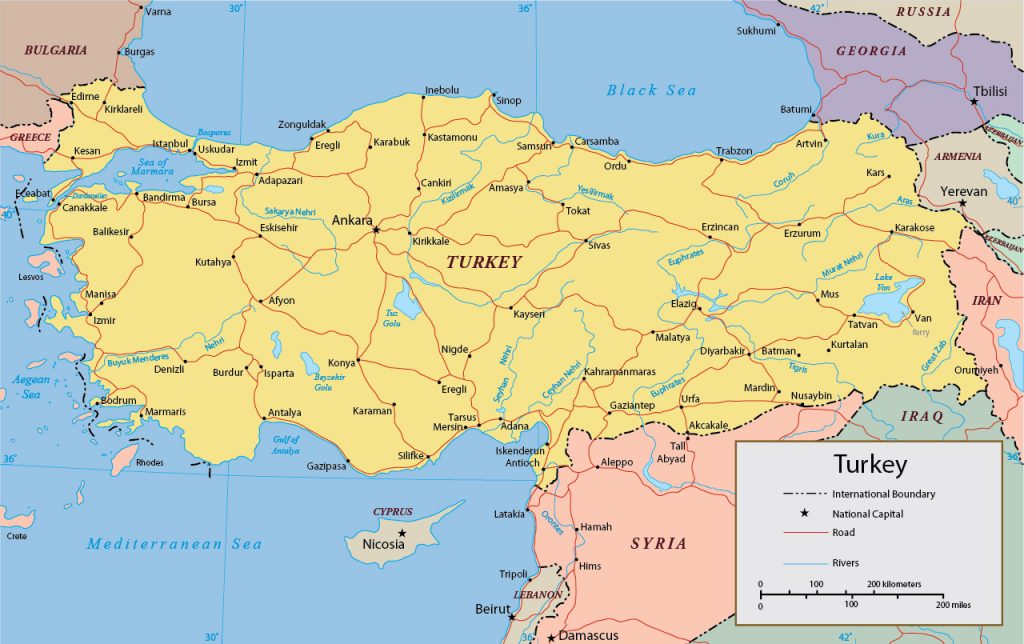
Turkey is strategically located at the crossroads of the Balkans, Caucasus, Middle East, and eastern Mediterranean. It is among the larger countries of the region in terms of population which exceeds 84 million (the majority of whom are Sunni Muslims) and also in terms of territory; its land area is greater than that of any European state. Nearly all of the country is in Asia, comprising the oblong peninsula of Asia Minor – also known as Anatolia (Anadolu) – and, in the east, part of the highland mountainous region. The remainder – Turkish Thrace (Trakya) – lies in the south-eastern part of Europe, a tiny remnant of an empire that once extended over much of the Balkans.
Istanbul
We travel from the airport in a pre-arranged taxi that cost 200 Turkish Liras (£21) to our hotel, Novotel Istanbul Bosphorus, which is located on the European side of Istanbul. The weather is ideal, 25 degrees Celsius, this is the perfect time of the year to visit Istanbul, unlike Southern Turkey which is extremely hot during this time of the year.
Istanbul is a unique city that straddles Europe and Asia across the Bosphorus Strait. It reflects the cultural influences of the empires that once ruled here. It served as the capital for the Ottoman Empire as well as the Byzantine Empire prior to this and it is the largest city and principal seaport of the country. Formerly known as Constantinople (Qusṭunṭīniyyah in Arabic), the city was conquered in 1453 during the reign of Sultan Mehmet (Muḥammad) II (d. 886/1481), who assumed the title “al-Fātiḥ” (the conqueror). The Byzantine Empire fell and the Ottoman Empire entered into an era of rapid development which continued until the end of the 16th century.
All the major landmarks of the city are on the European side of the city; therefore, this is the preferred side to stay. We arrive at the hotel at 9.30pm after a 90-minute drive. Our taxi driver is critical of President Erdogan and opposes the decision to revert Aya Sofya to a Masjid. We check in and rest for the evening.
Previous visits to Istanbul and Turkey
Istanbul is from among those cities which one does not get bored of, despite repeated visits.
- My first visit to Istanbul was in 1995 as a young child. During this visit, we also visited Bursa and Izmir.
- My second visit to Istanbul was in 2003. During this visit, we also visited Izmir, Çanakkale and Edirne.
- My third visit to Istanbul was in October 2013 with Shaykh Fazlurrehman. During this visit, we also visited South Turkey and Syria.
Apart from this, I have transited in Istanbul many times. This includes the four times when I visited Antakya and Reyhanli in South Turkey in May 2013, Sep 2013, Dec 2013 and Nov 2014. During the first two of these visits, I also visited North Syria for charity.
Thus, this is my fourth visit to Istanbul and eighth visit to Turkey, al-Ḥamdulillāh. Therefore, we decide to spend our time in Istanbul.
Day 2 – Sunday 16 August 2020
Maghrib Ṣalāh in Aya Sofya
The Tram and Currency
In the morning, we have breakfast in our hotel room. Generally, hotels in Turkey are avoiding buffet breakfasts due to Covid-19. It is therefore not worth paying substantially more for some basic breakfast that is delivered to the room. Wearing a mask is also necessary in hotels and also outdoors, although it is not strictly enforced outdoors.
Our hotel is located a few minutes from the Tophane tram stop. The Istanbul Tram is a modern tram system on the European side of the city. It is the most cost effective and efficient mode of transport within this area. The cost for a single journey is 3.5 liras (40 pence) and children travel for free. As soon as one arrives in Istanbul, the contactless ‘Istanbul Kart’ (similar to the Oyster card) should be purchased. It can be topped up at stations and used for travelling on the tram, the metro, the bus and the ferry. Generally, the cost of a single journey is 3.5 liras.
The Turkish Lira has weakened in recent weeks. The current rate is approximately 9.5-9.6 Liras to a pound. Whilst this is disadvantageous to locals, it is advantageous for travellers. The best rates for currency transfers are around the gold shops within the Grand Bazaar, which can be accessed via the Beyazit tram stop.
Sultanahmet Mosque (Blue Mosque)
We board the tram from Tophane and within a few minutes arrive at the Sultanahmet tram stop. This is the stop for the Sultanahmet mosque.
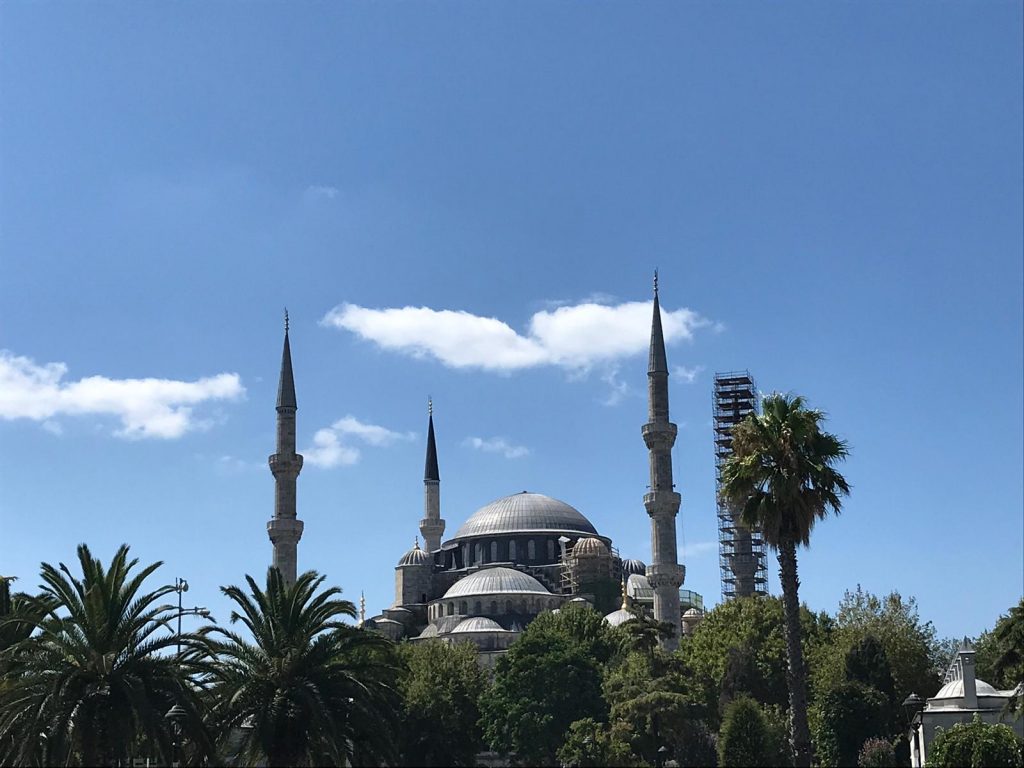
The mosque was constructed between 1609 and 1617. It was commissioned by Sultan Ahmet I (d. 1026/1617), and the idea was to build a monument that would surpass Aya Sofya. It is also known as the Blue Mosque because hand-painted blue tiles adorn its interior walls. At night, the mosque is bathed in blue as lights frame the mosque’s five main domes, six minarets and eight secondary domes. It incorporates many Byzantine elements of the neighbouring Aya Sofya along with traditional Ottoman architecture.
Currently, the mosque is undergoing major renovations.
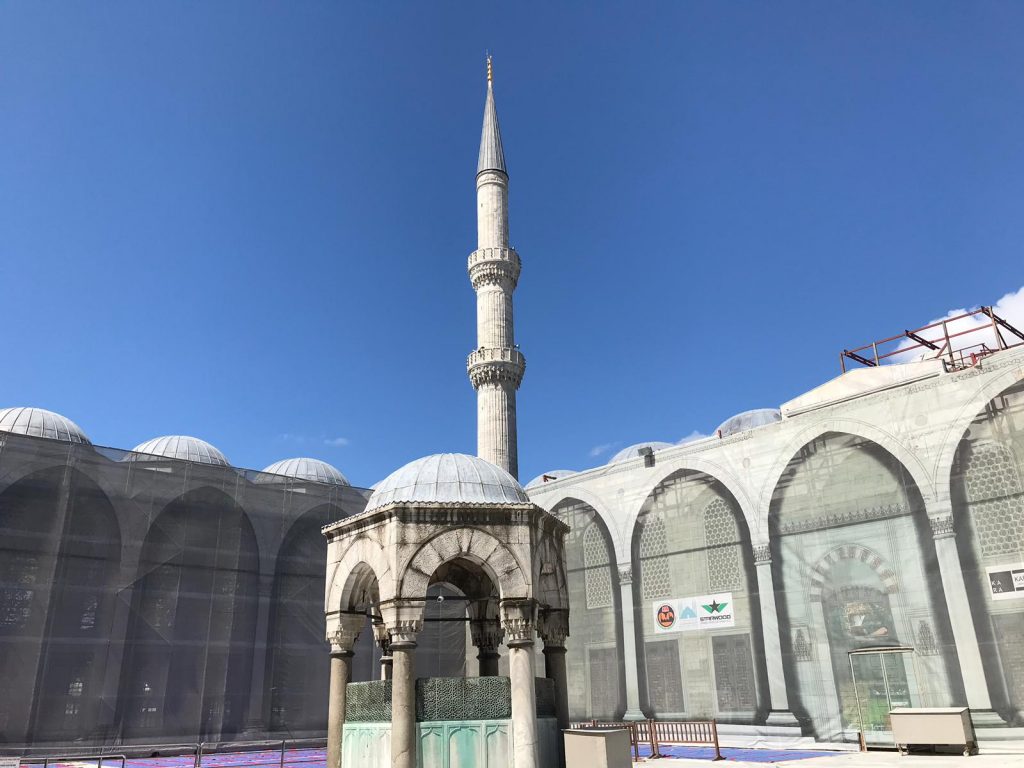
We enter and perform Taḥiyyat al-Masjid therein.
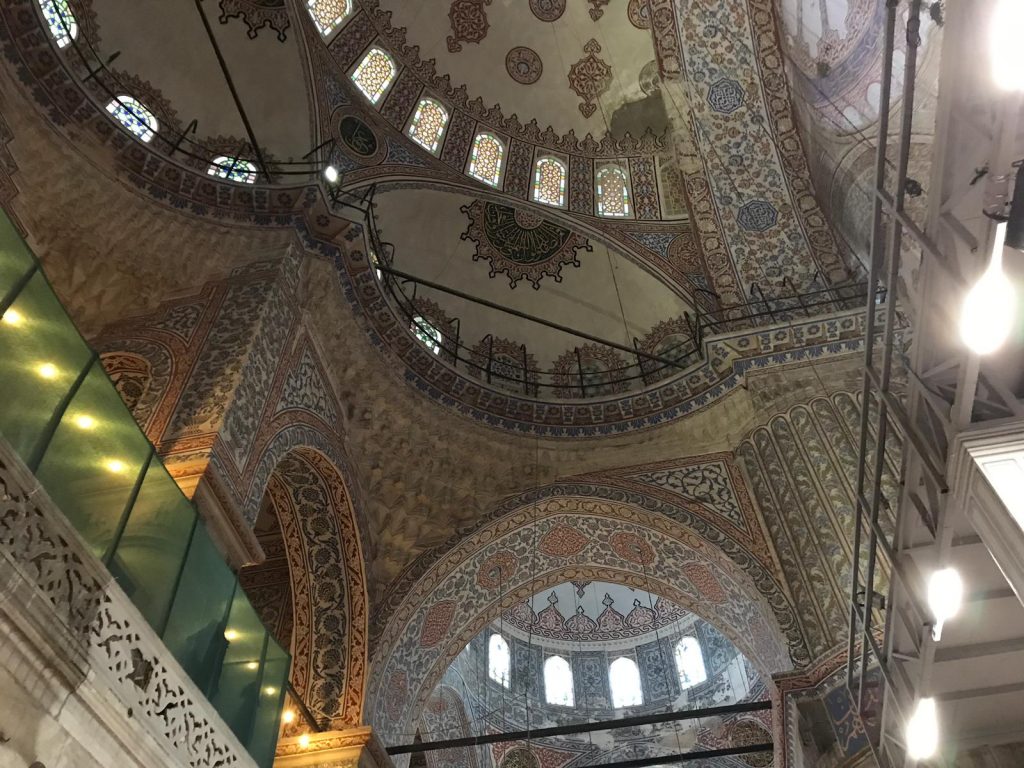
There are some tourists, however, overall the number of tourists is low. Many shop owners mention the impact of this on their businesses. Hotels are also relatively empty.
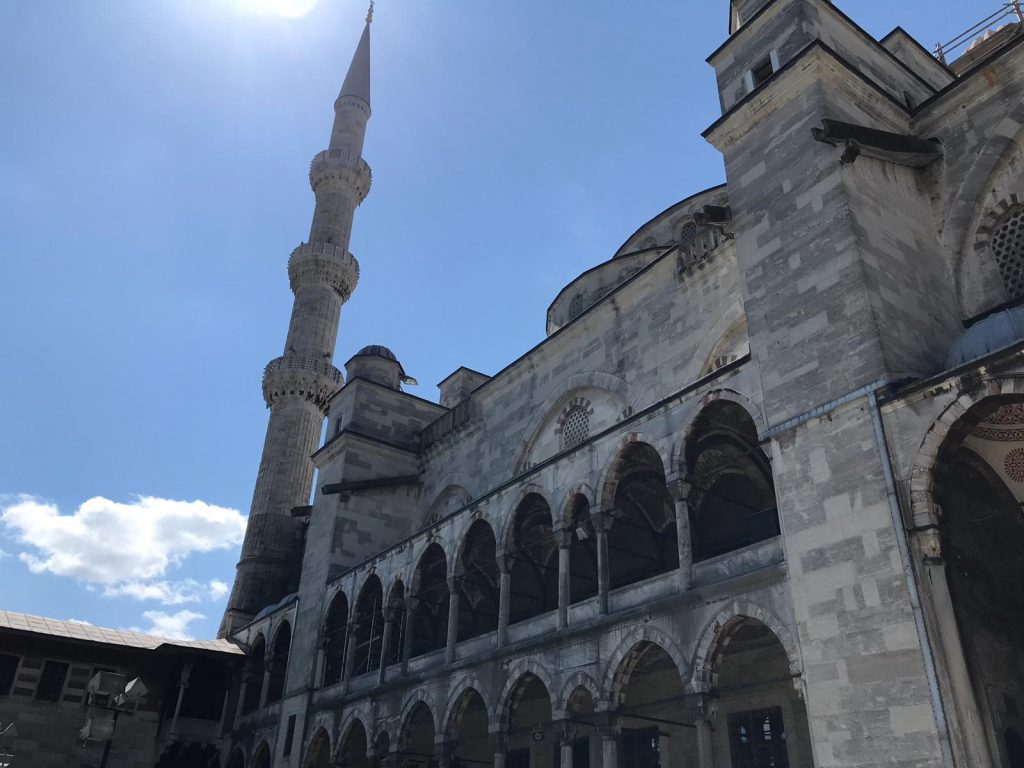
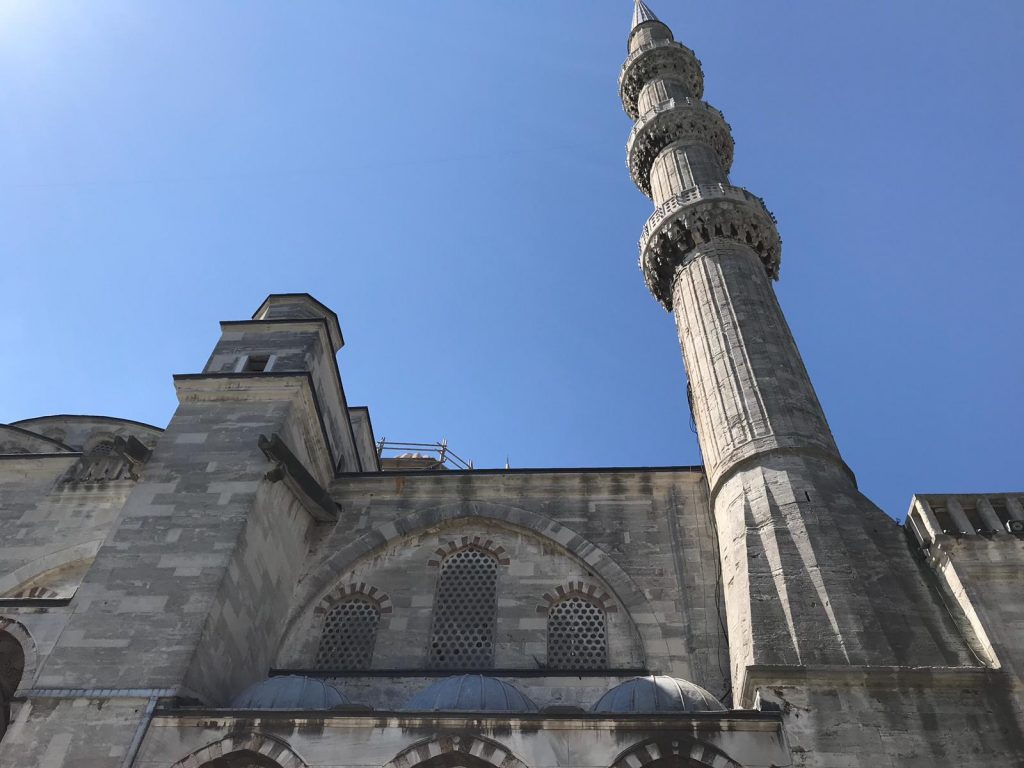
We leave the blue mosque and head to Aya Sofya.
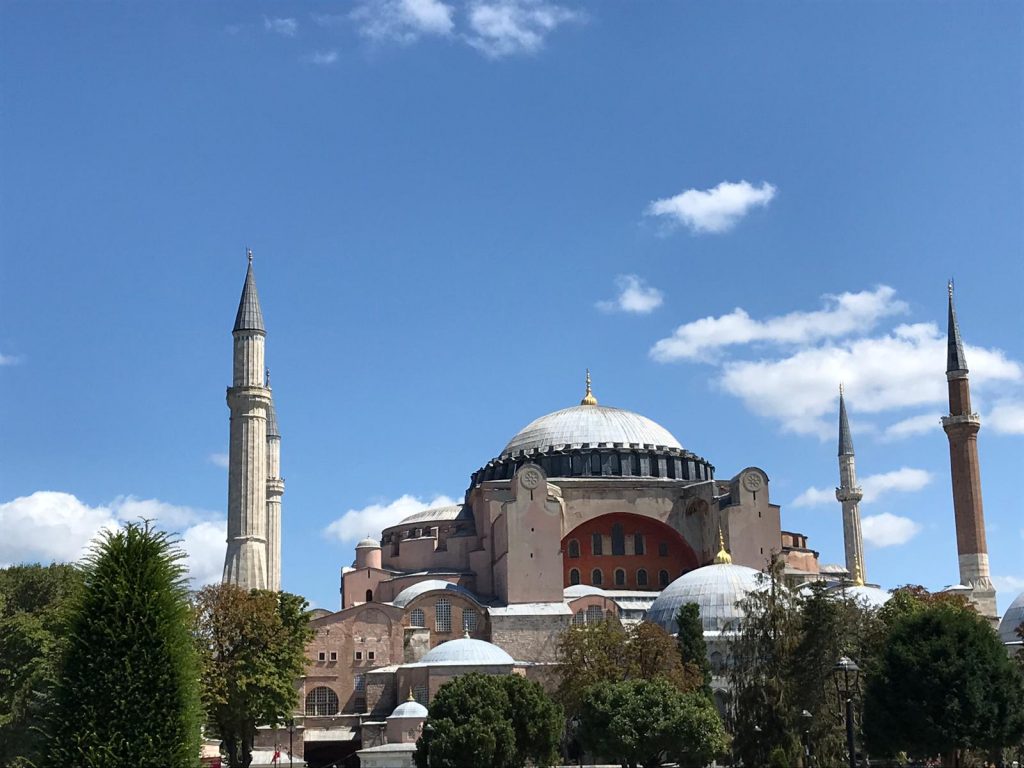
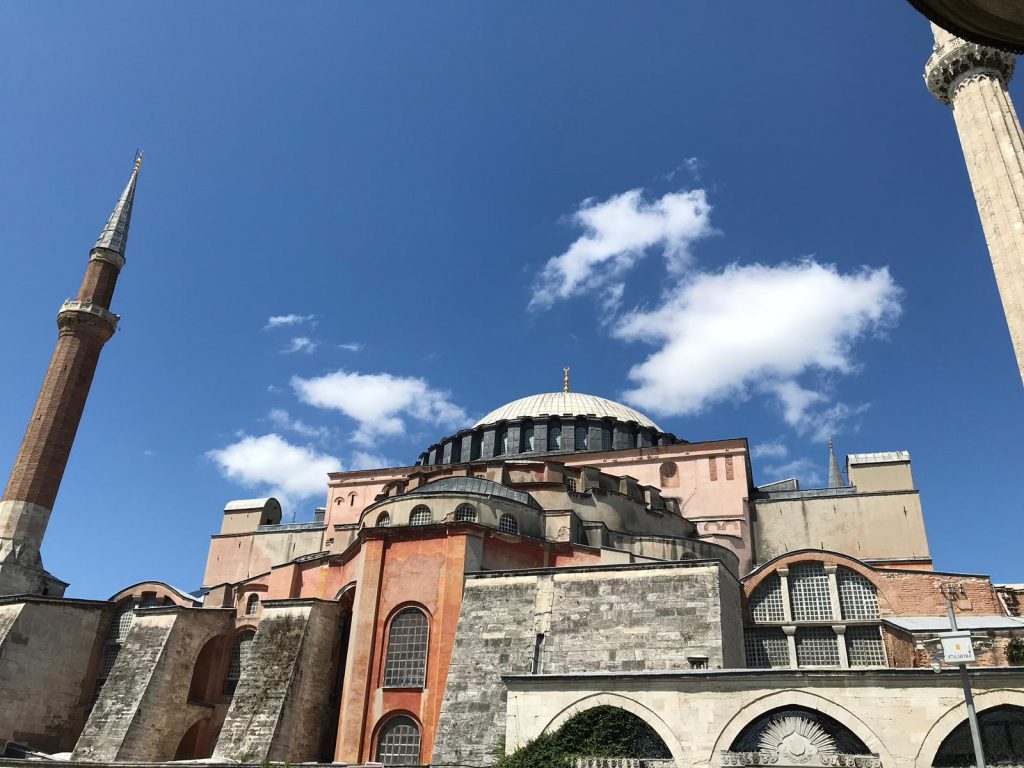
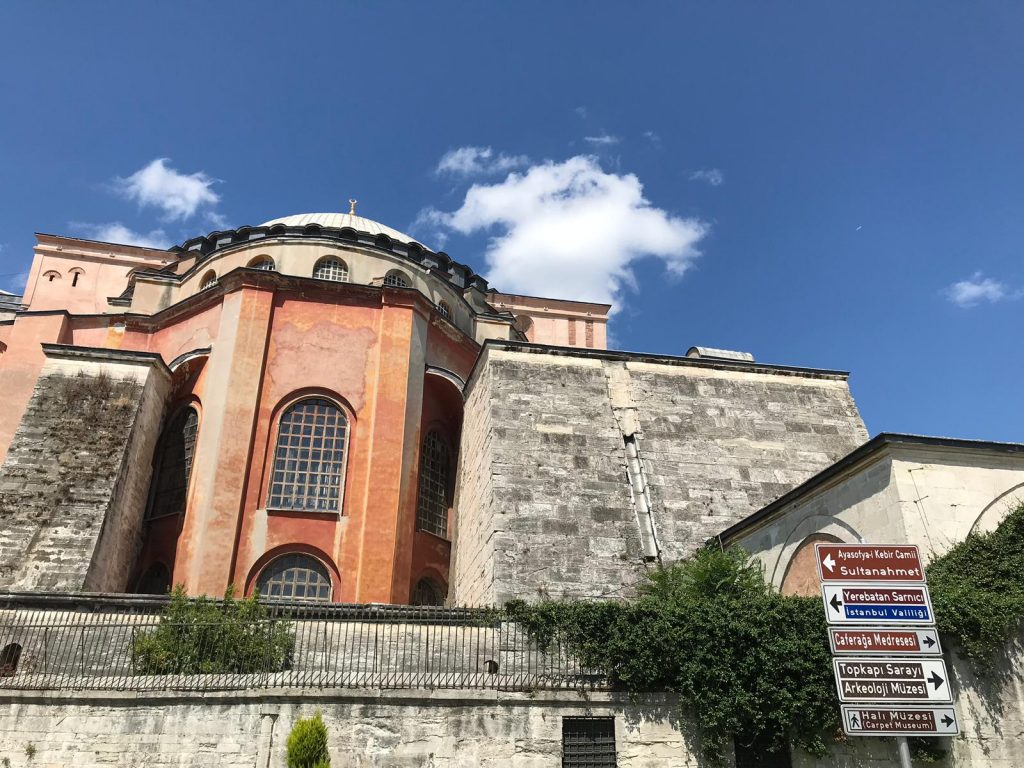
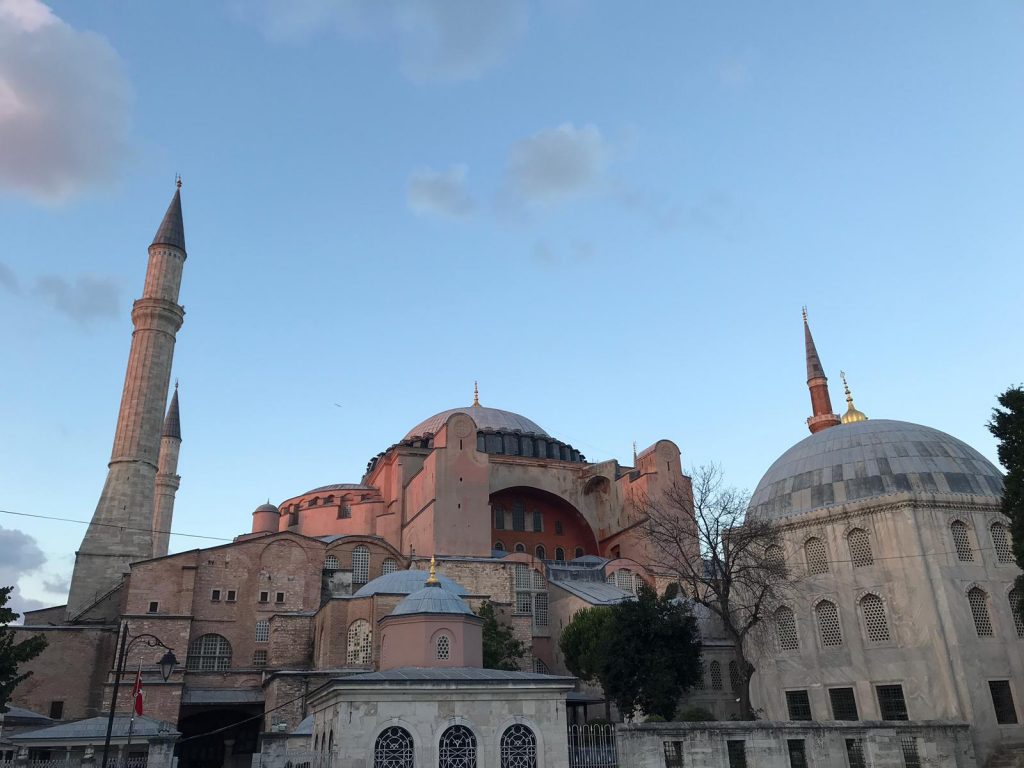
There is a long queue outside. We understand that due to Covid-19, only a limited number of people are permitted to enter at any one time. Prior to reverting it to a mosque, there was an entrance fee for tourists. The fee has since been removed. We decide to return later.
Topkapi Palace Museum
Another famous landmark neighbouring the Aya Sofya is the Topkapi Palace Museum. The Encyclopaedia Britannica states:
“Topkapi Palace Museum in Istanbul that exhibits the imperial collections of the Ottoman Empire and maintains an extensive collection of books and manuscripts in its library. It is housed in a palace complex that served as the administrative centre and residence of the imperial Ottoman court from about 1478 to 1856. It opened as a museum in 1924, a year after the establishment of the Republic of Turkey. The Topkapi Palace Museum is notable not only for its architecture and collections but also for the history and culture of the Ottoman Empire that it recalls.”
The museum is home to many Islamic relics, including the mantle, sword, and bow of our beloved Prophet Muhammad ﷺ, all of which were obtained when Selim I conquered the Mamluk dynasty in Egypt in 1517. Whilst these relics are to be respected, it is difficult to say with certainty that the descriptions and attributions of all the relics are authentic.
As we had visited the museum on previous trips, we suffice with a visit to the garden. There are very few visitors. Unlike Aya Sofya, there is a charge to enter the museum which perhaps explains this.
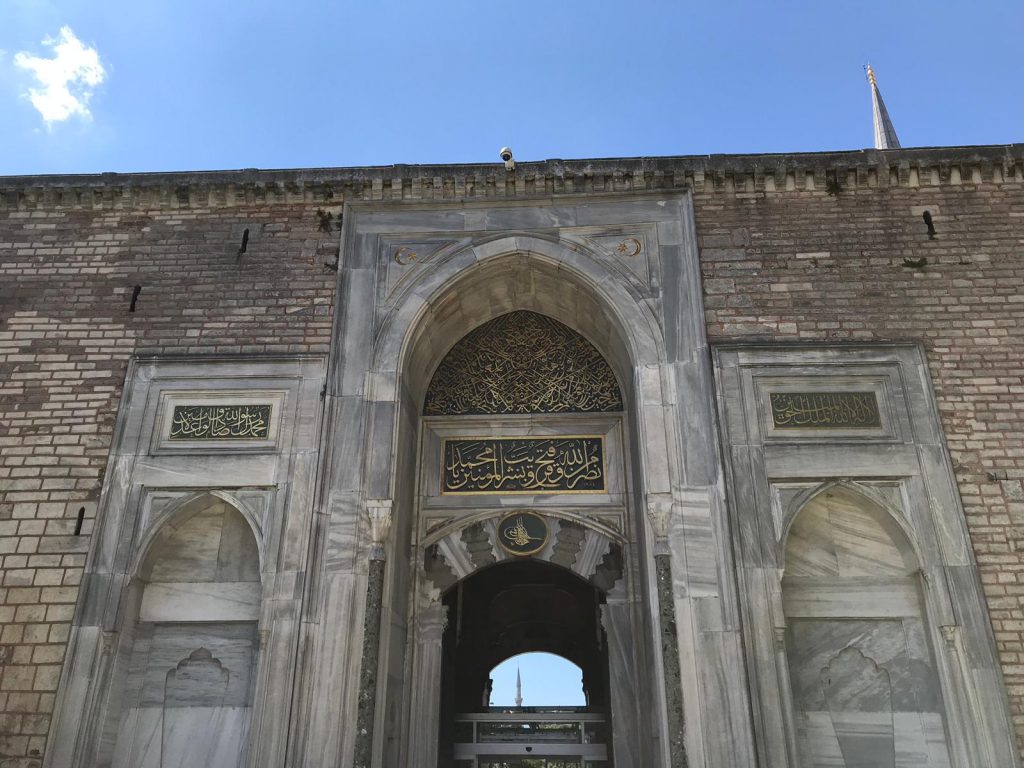
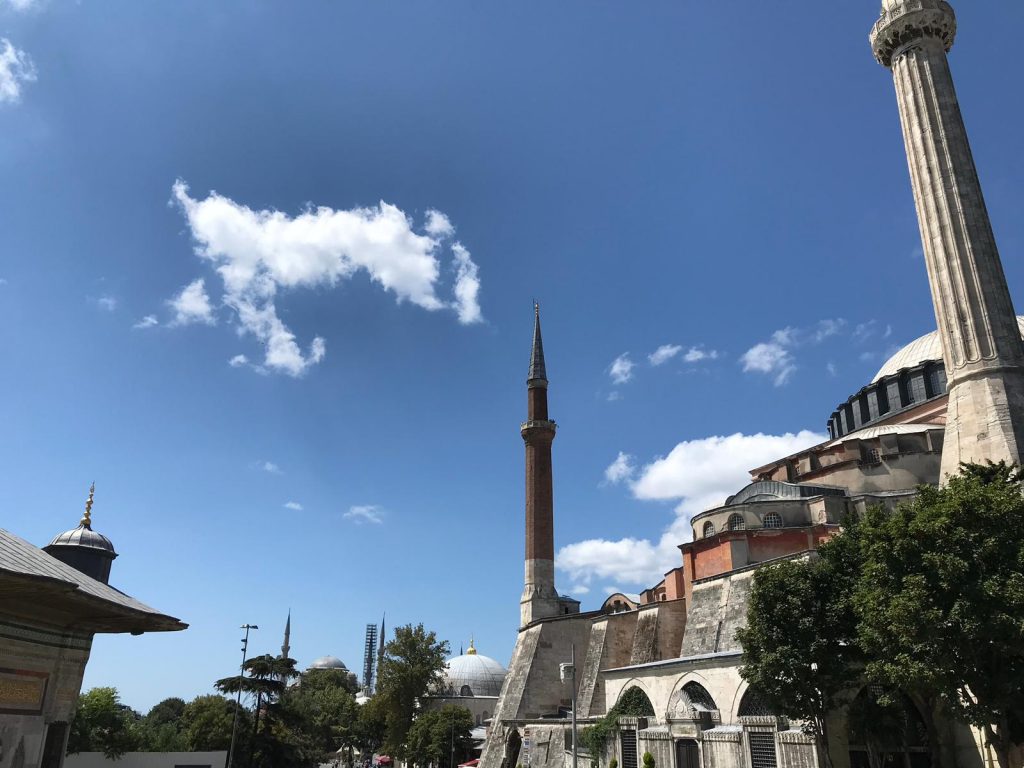
Aya Sofya (Hagia Sophia)
Later in the evening, we return to Aya Sofya. There are security checks when entering the area of the Blue Mosque and Aya Sofya. Aya Sofya is an important monument with historical significance. The Encyclopaedia Britannica states:
“Hagia Sophia, Turkish Ayasofya, Latin Sancta Sophia, also called Church of the Holy Wisdom or Church of the Divine Wisdom, an important Byzantine structure in Istanbul and one of the world’s great monuments. It was built as a Christian church in the 6th century CE (532–537) under the direction of the Byzantine emperor Justinian I. In subsequent centuries it became a mosque, a museum, and a mosque again. The building reflects the religious changes that have played out in the region over the centuries, with the minarets and inscriptions of Islam as well as the lavish mosaics of Christianity.”
For more than a millennium, it was the Cathedral of the Ecumenical Patriarchate of Constantinople. After the Ottoman conquest of the city in 1453, Sultan Muḥammad al-Fātiḥ (d. 886/1481) had it repurposed as a mosque. In 1934, Kemal Ataturk (d. 1357/1938) secularised the building, and in 1935 it was made into a museum. In 1985, it was designated a component of a UNESCO World Heritage site called the Historic Areas of Istanbul, which includes the city’s other major historic buildings and locations. A few weeks ago, it was reverted back into a mosque as mentioned in the introduction and this is in accordance with its waqf status, as affirmed by the court. However, it remains open to non-Muslim tourists who can now visit the mosque for free. We understand that it is open 24 hours of the day.
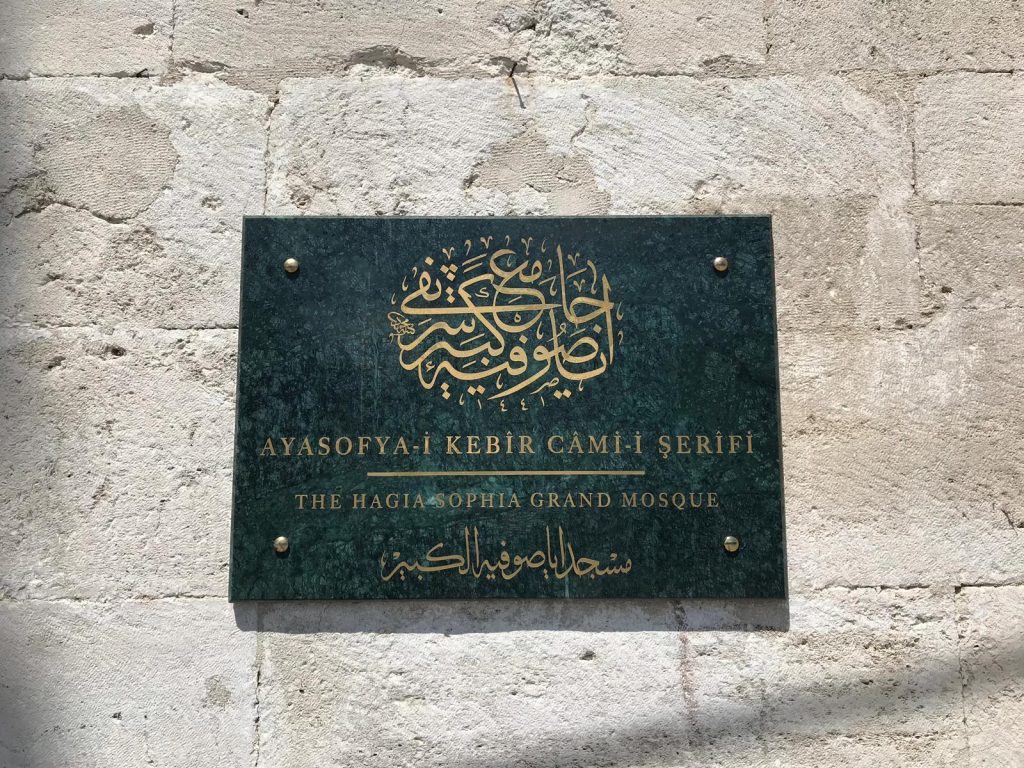
As we enter the compound, we observe the following ḥadīth written on a pillar, with the date 1109 Hijrī (1697) written thereafter:
قال النبي عليه السلام: لتفتحن القسطنطينية، فلنعم الأمير أميرها ولنعم الجيش ذلك الجيش
The Turkish and English translation appears to have been added recently. The English translation reads:
‘Al-Hadith al-Sharif of Prophet Muhammed (peace be upon him) about the conquest of Istanbul “Constantinople [Istanbul] shall be surely conquered; how blessed the commander who will conquer it, how blessed his army.”’
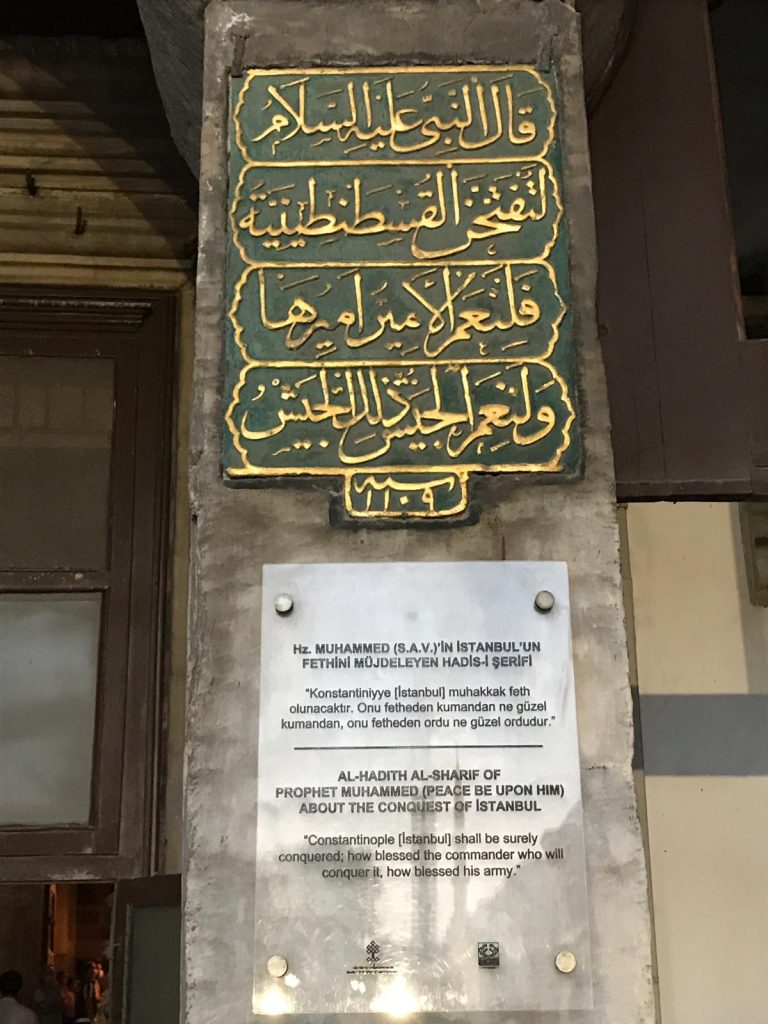
This ḥadīth has been transmitted in Musnad Aḥmad (18957), al-Tārīkh al-Kabīr (2:81), al-Mustadrak (8300) and other ḥadīth books, and there are two possibilities regarding it. The first possibility is that it refers to the conquest of Istanbul at the hands of Sultan Muḥammad al-Fātiḥ (d. 886/1481), whilst the second possibility is that it refers to its conquest before the emergence of Dajjāl towards the end of time.
The Masjid itself is full with worshippers who are sat, socially distanced, with face masks. There are no temperature checks upon entry and there is no requirement to bring your own prayer mat or shoe bag. This is the standard across the Masjids of Istanbul. The Maghrib Adhān is given.
This is followed by Ṣalāh and the recitation of the Quran thereafter.
The atmosphere is electric. The feeling is overwhelming. Two decades ago, who would have thought that Aya Sofya would revert to a Masjid.

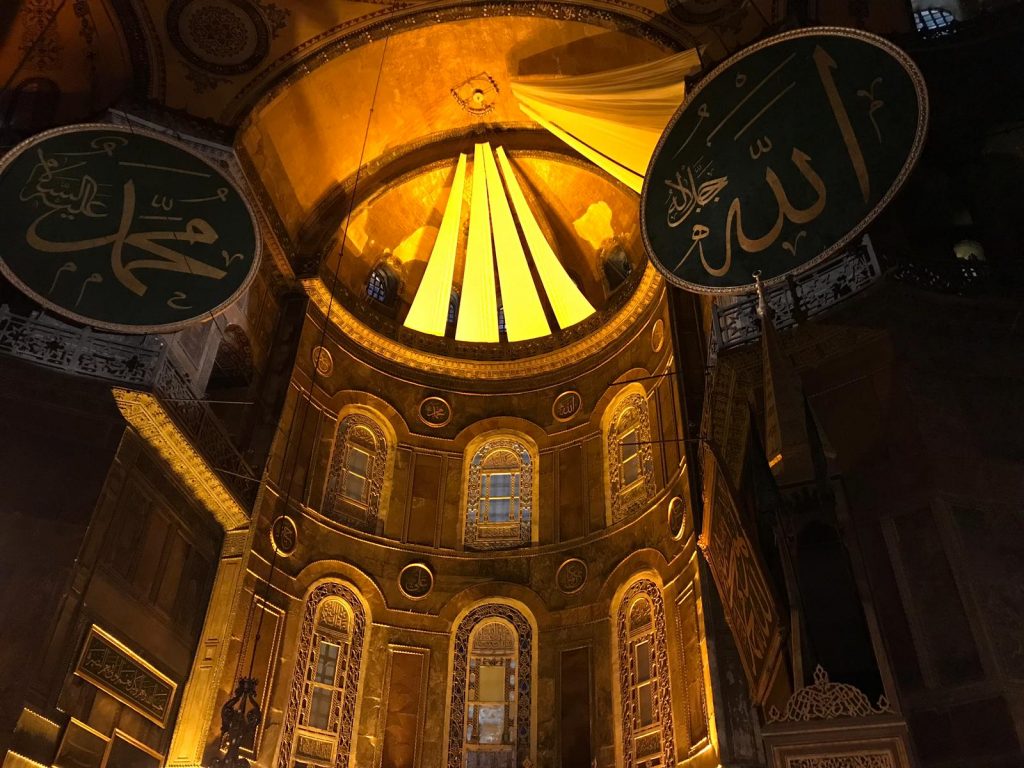
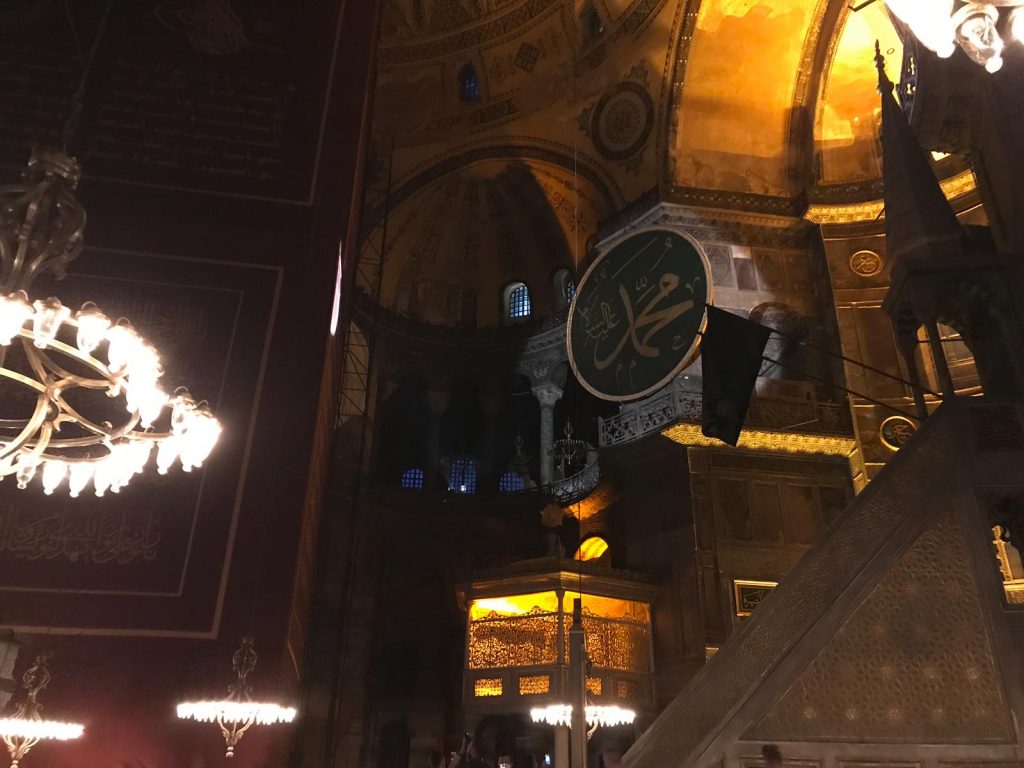
During the day, we also met my aunt and uncle Mawlānā Ahmad Desai of Bradford who is visiting Turkey. They are residing in Miss Istanbul Hotel, where the swimming pool and sauna facilities are open unlike our hotel. The hotel is 2-3 minutes from Aya Sofya.
Day 3 – Monday 17 August 2020
Tomb of Abū Ayyūb al-Anṣārī (may Allah be pleased with him)
Hotel transfer
We decide today to move to Holiday Inn in the Fatih district near the Sehzade Mosque. This is a more central location and more appropriate compared to our current location.
Meeting with Dar al-Samman
In the afternoon, I meet with Ahmad al-Samman, the young Syrian founder of the publishing house Dar al-Samman, currently based here in Fatih, Istanbul. The publishing house was established three years ago and has already published 50 titles. It focuses on publishing classical works not published before, particularly ḥanafī fiqh texts. Our recent Arabic book ‘Tadhkirat al-Aʿlām al-Sūd’ featuring the profiles of 101 black Muslims was published by them. Our forthcoming title ‘al-ʿIqd al-Thamīn fī Ḥubb al-Nabī al-Amīn Ṣallāllāhu ʿalayhi wa Sallam’ will also be published by them soon, inshāʾ Allah. Future publications and potential areas of collaboration are discussed.
Eyup Sultan Mosque
At 5.30pm, we take the bus from outside Sehzade Mosque to Eyup Sultan Mosque, located in the Eyup district of Istanbul. The 3.5 lira fare per adult is paid by the contactless Istanbul Kart. The mosque was originally constructed in 1458, five years after the conquest of Istanbul. However, in 1798, Sultan Selim III (d. 1223/1808) ordered the mosque be rebuilt because of the damage to the structure which was most probably caused by an earthquake.
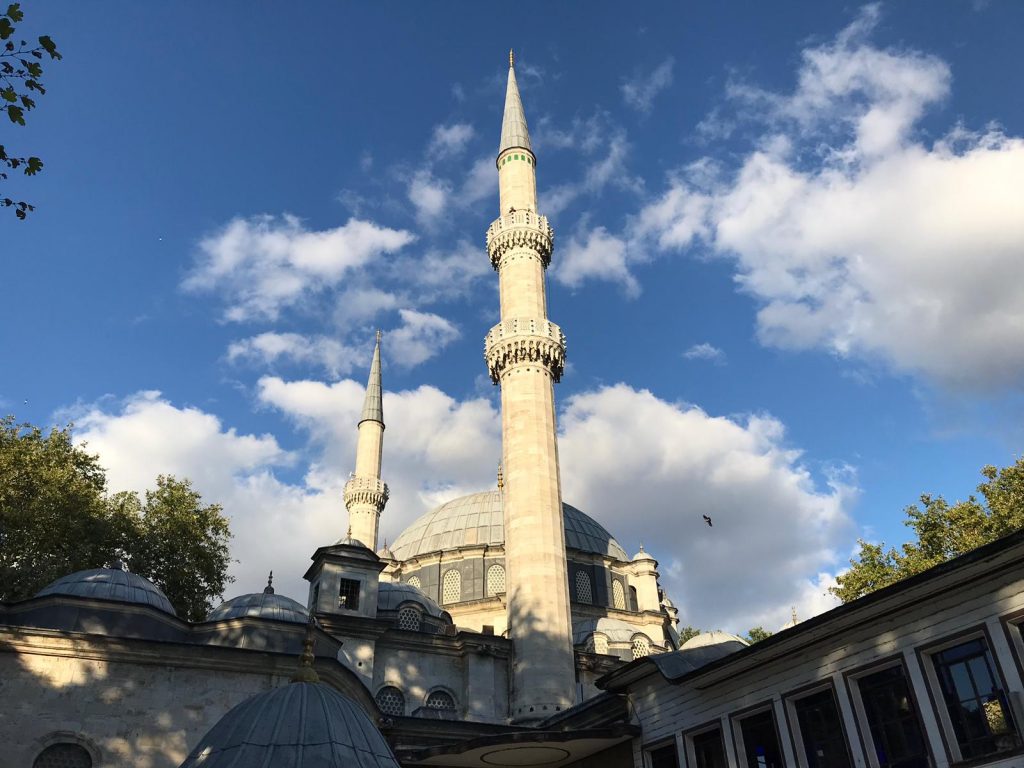
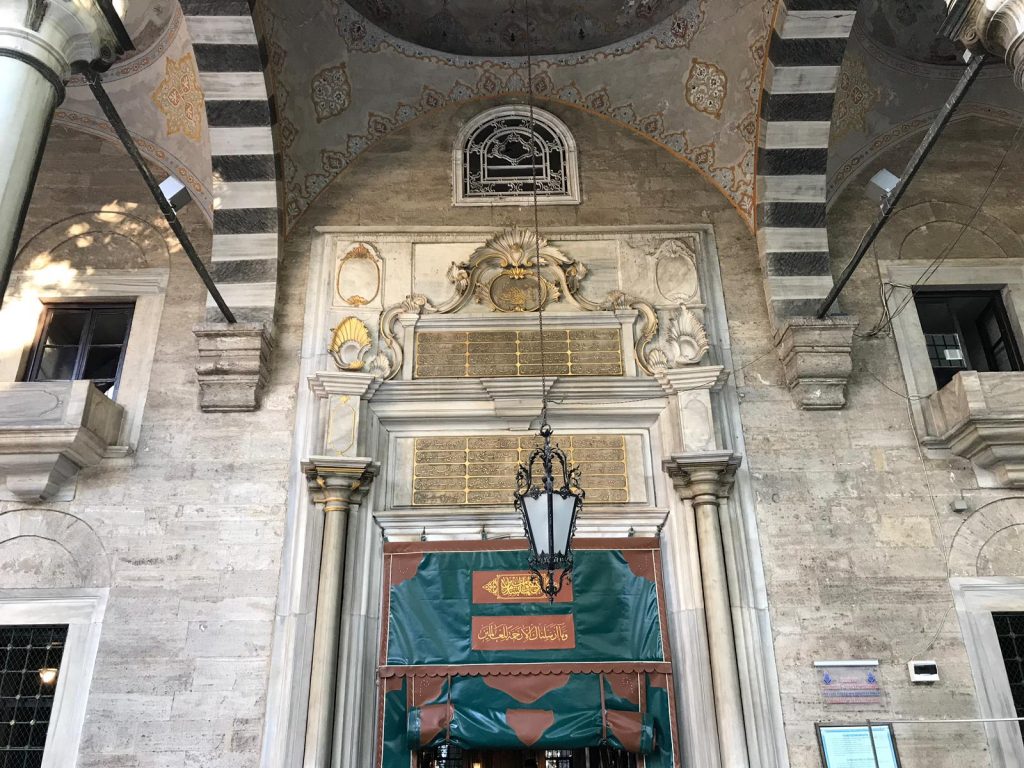
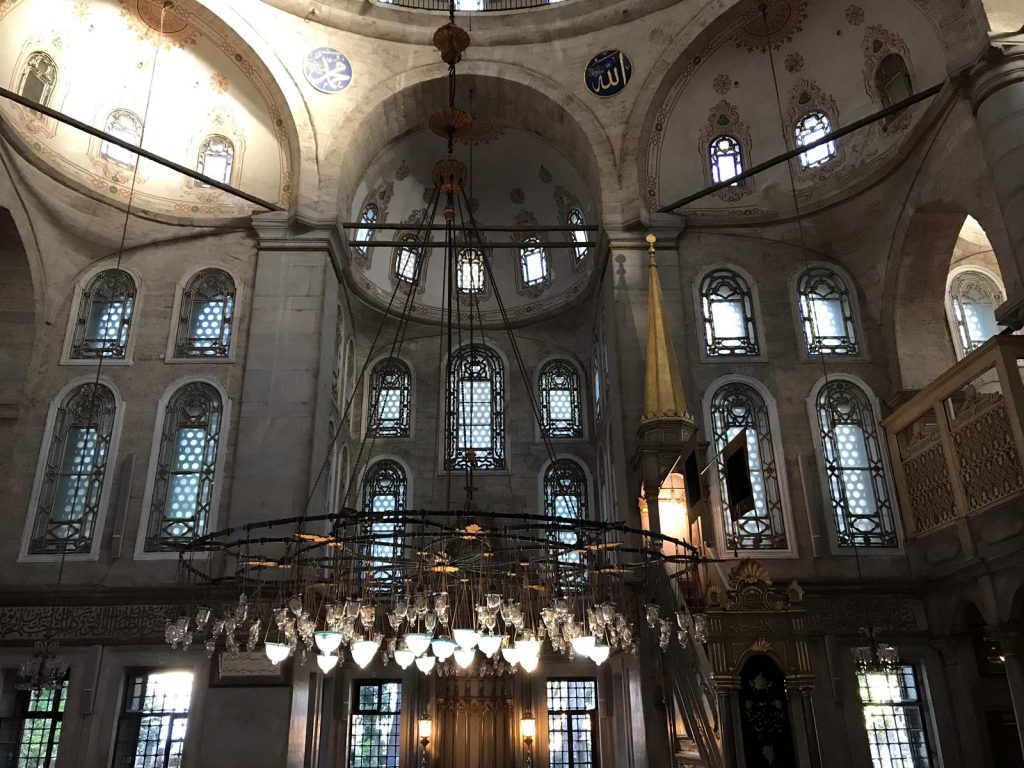
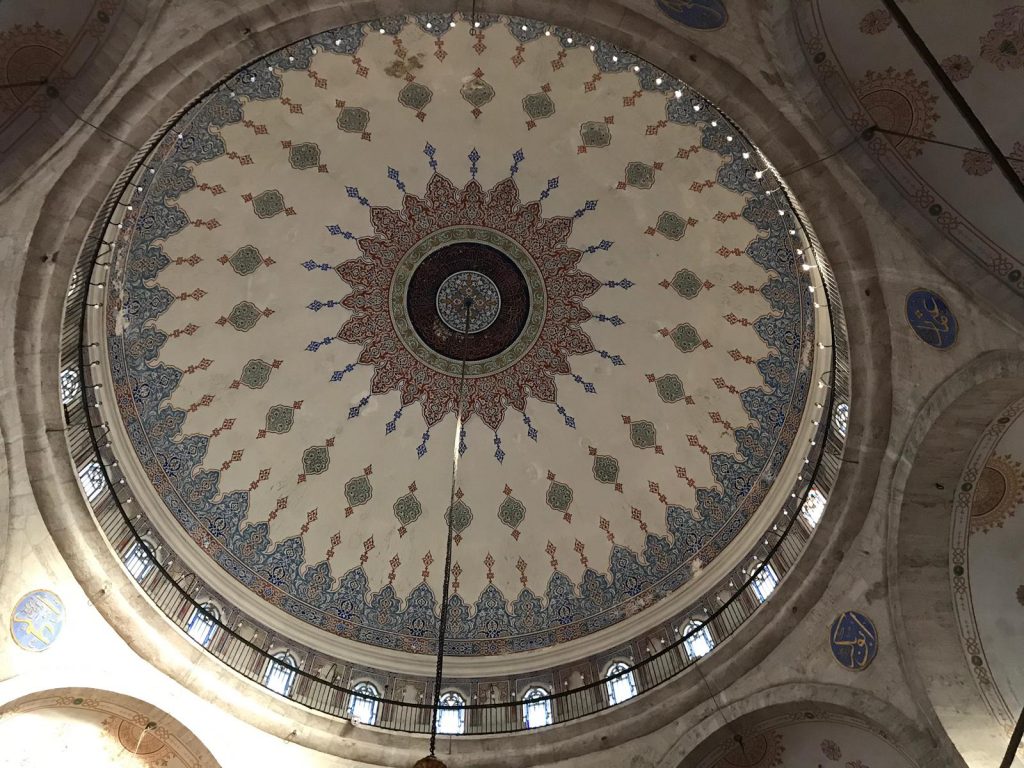
This mosque is home to the tomb of the companion of the Prophet ﷺ, Abū Ayyūb al-Anṣārī (may Allah be pleased with him), who passed away in Istanbul in 52 AH/672 CE during the first siege of Istanbul. Abū Ayyūb al-Anṣārī (may Allah be pleased with him) is the companion who hosted the Prophet ﷺ upon his arrival to the blessed city of Madīnah. His name is Khalid ibn Zayd. He participated in all the battles during the Prophetic era and finally participated in the battle of Istanbul during the reign of Muʿāwiyah (d. 60/680, may Allah be pleased with him) and passed away there. Following a peace treaty with the non-Muslims, it is suggested that the Christians looked after his tomb and would supplicate by it for rain during droughts (al-Ṭabaqāt al-Kubrā, 3:370; Tārīkh Dimashq, 16:61; Siyar, 2:405). It is also suggested that he was buried in the fort of Istanbul. Some reports suggest that he was buried near Istanbul (Usd al-Gābah, 2:121).
Many centuries later, the Ottoman saint who tutored Sultan Muḥammad al-Fātiḥ, Akshamsaddin (Muhammad Shams al-Din bin Hamzah) (d. 863/1459) discovered the lost grave of Abū Ayyūb al-Anṣārī (may Allah be pleased with him) via a dream. This is somewhat similar to the tomb of Umm Ḥarām bint Milḥān (d. 28/648-9, may Allah be pleased with her) in Cyprus which we visited last year. It was also discovered many centuries later. It is therefore difficult to say with certainty that these are the precise locations of the graves, and Allah knows best.
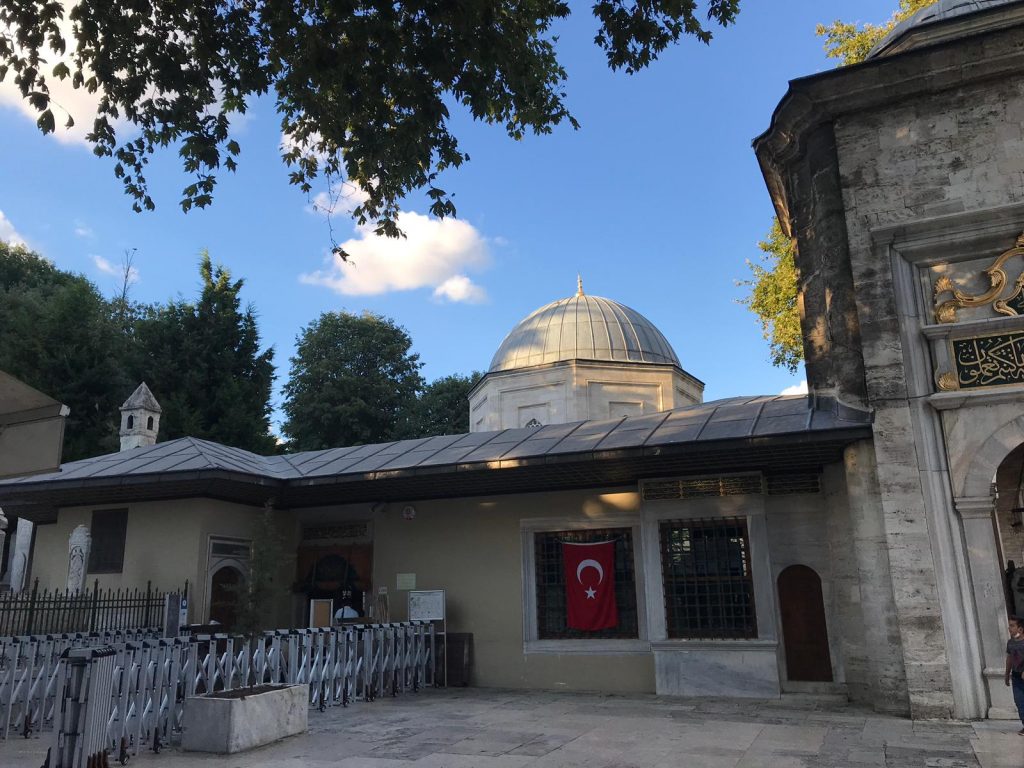
We enter the mausoleum which is on the north side of a courtyard opposite the main entrance to the prayer hall of the mosque and pay our respects.
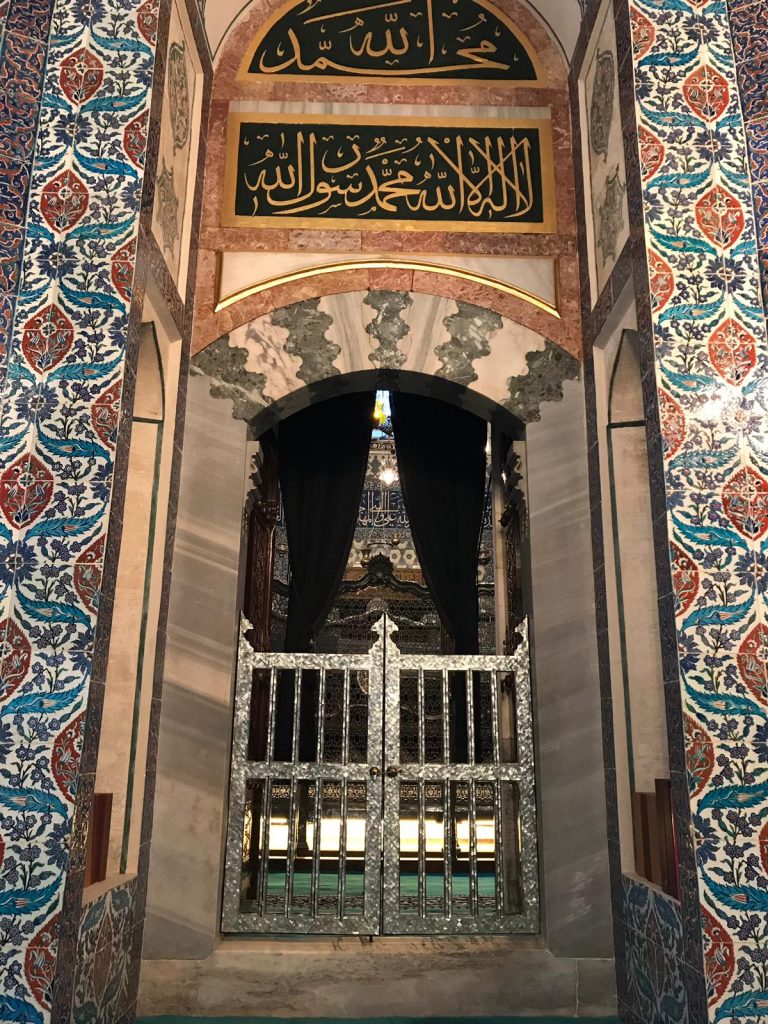
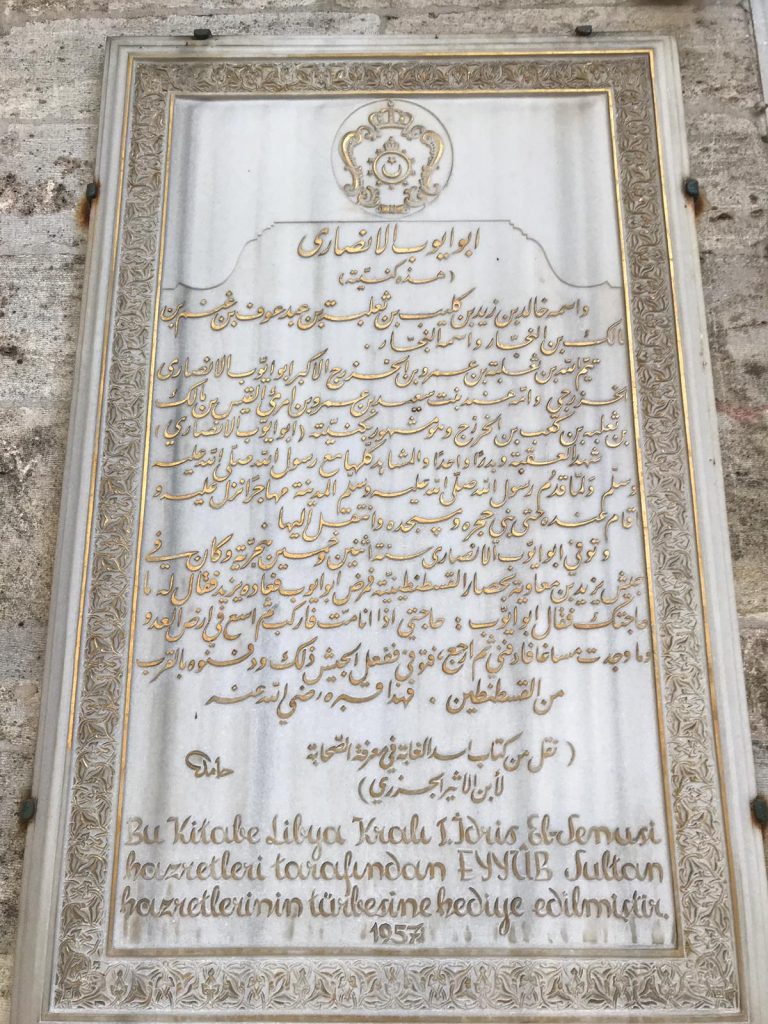
The mosque and the mausoleum are greatly venerated by the local people. People come here to seek blessings and make supplications. Newly wedded couples come here for blessings on the day of their marriage. Historically, it was the traditional site for the coronation ceremony of the Ottoman Sultans. There are also some relics here, some of which are attributed to the Prophet ﷺ.
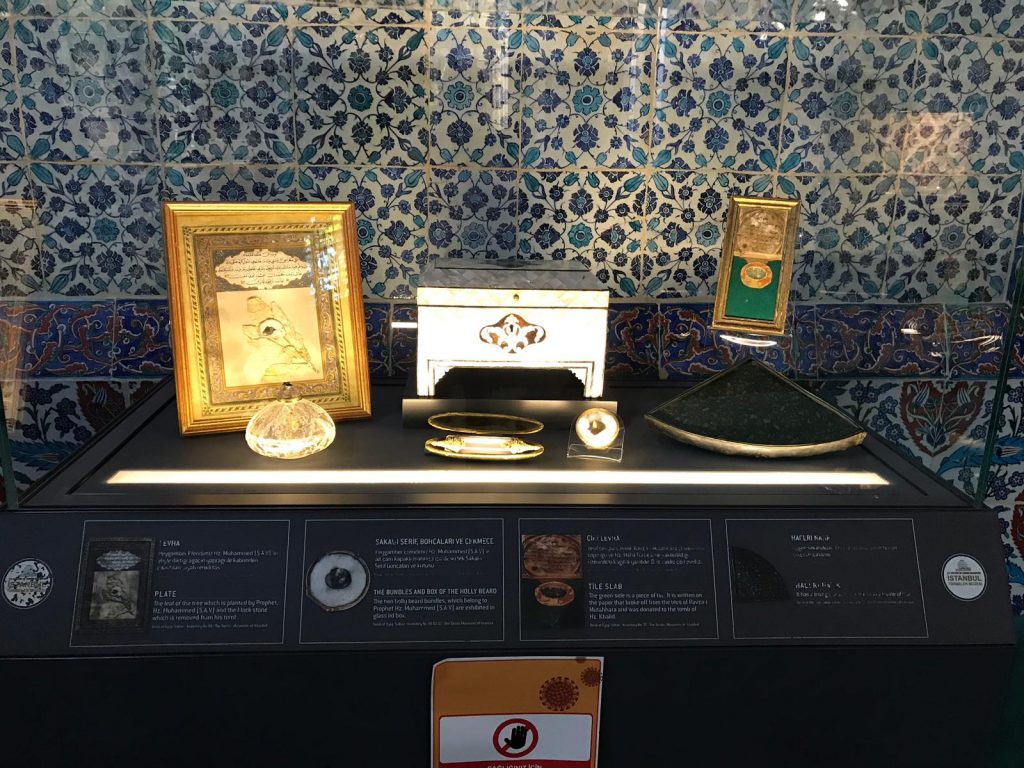
Outside the mausoleum, people are supplicating with their hands raised facing the grave, with their backs to the Qiblah. This should be avoided, especially if the hands are raised. Instead, one should supplicate facing the Qiblah. This not least because many people seek direct assistance from the deceased.
Eyup Cable Car
There is a cable car nearby which enables riders to visit the Piyerloti Hill. This was established a few years ago. We do not have time to use it.
Return from Eyup via ferry
At 7.45pm, we take the ferry from Eyup to Karakoy, which again only costs 3.5 Liras per adult. Karakoy lies on the other side of the Bosphorus opposite Eminonu. As far as I am aware, there is no ferry between Eminonu and Eyup. This is why some people assume that it is not possible to travel to Eyup via ferry. This is incorrect. Karakoy is the next tram stop after Eminonu, and one can also walk to it from Eminonu over the bridge.
The journey from Eyup to Karakoy takes 45 minutes due to the various stops in between. As it is sunset time, the journey provides some breath-taking scenic views of the Suleymaniye Mosque and other landmarks with the sound of Adhān reverberating from across both sides of the Golden Horn. The Golden Horn, also known by its modern Turkish name, Haliç, is a major urban waterway and the primary inlet of the Bosphorus in Istanbul.
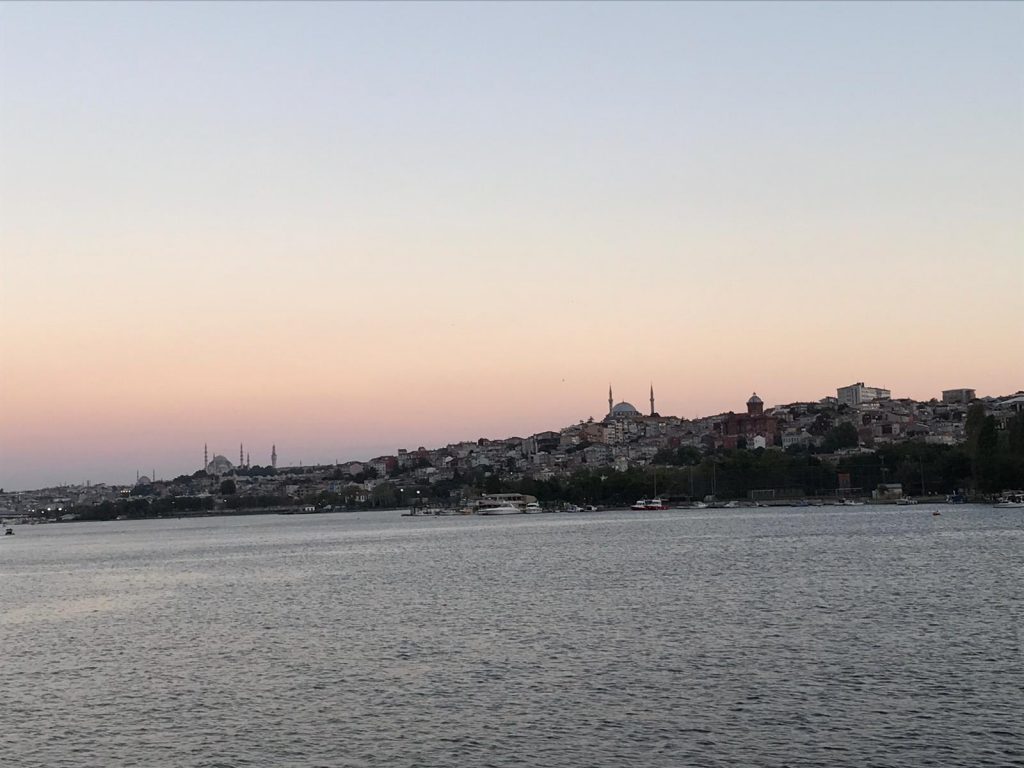
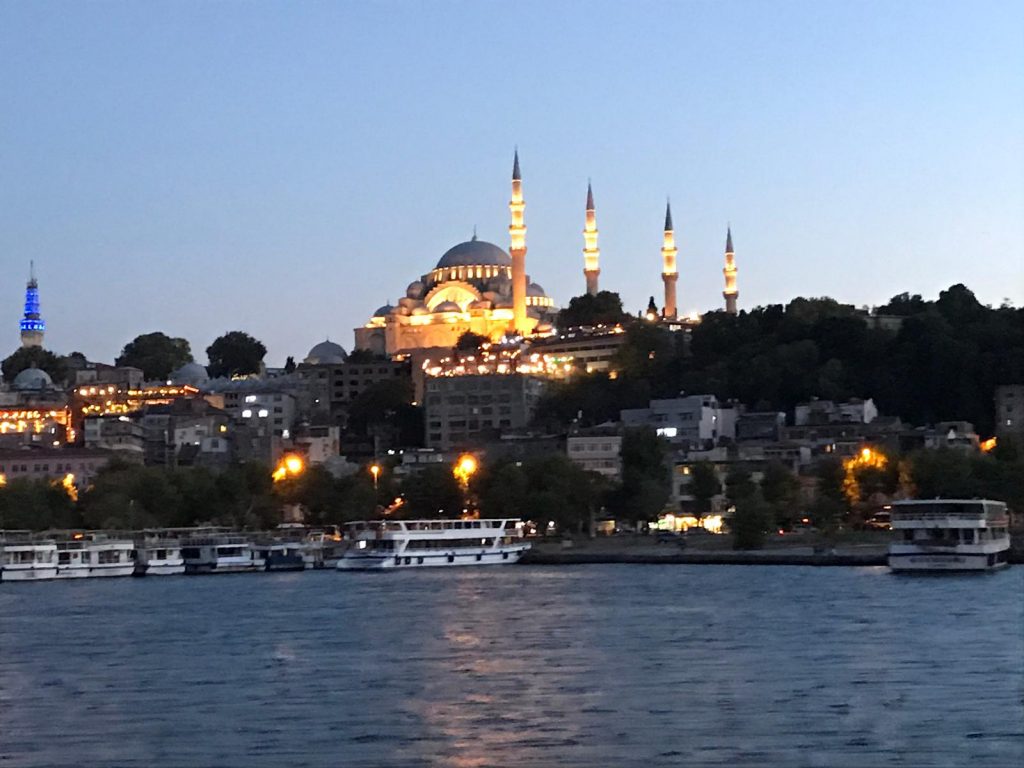
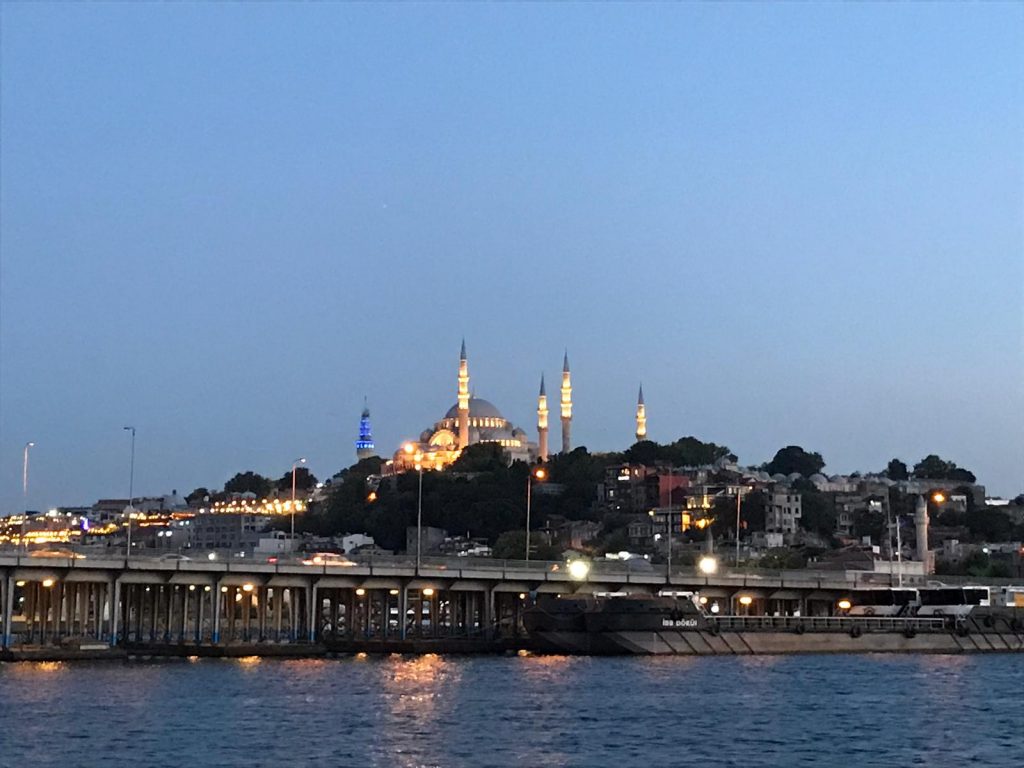
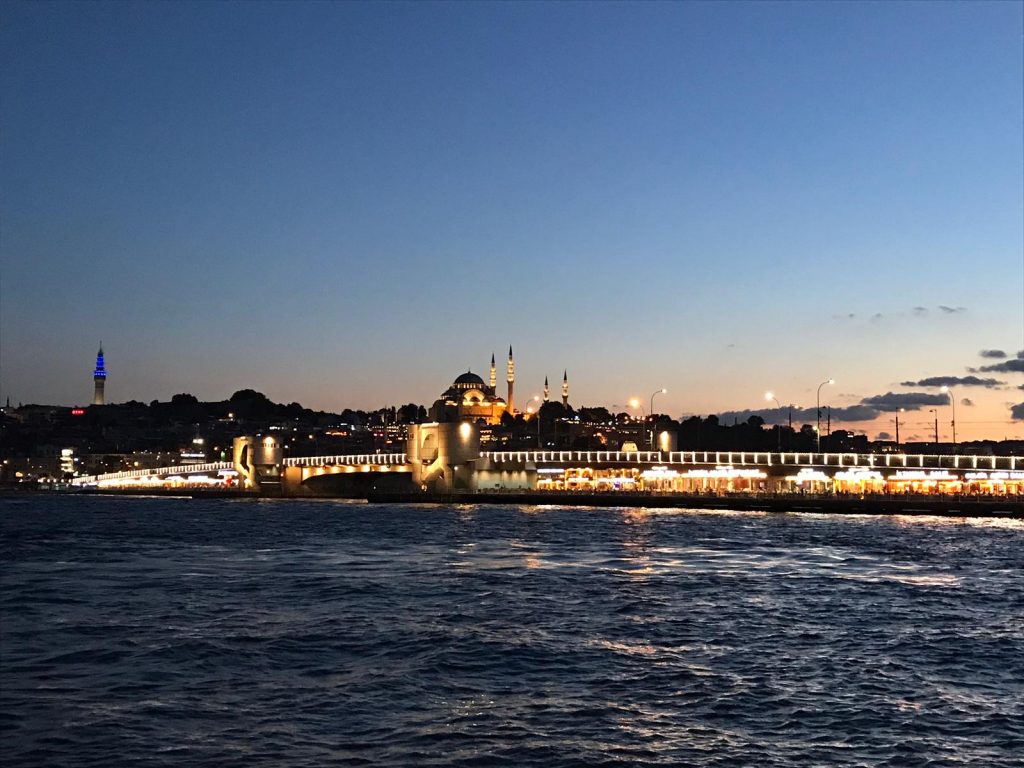
From Karakoy, we take the tram to Aksaray, the closest tram stop to our hotel.
The Sehzade Mosque
After dinner, we perform ʿIshāʾ Ṣalāh at the Sehzade Mosque. The mosque was commissioned by Suleiman the Magnificent (d. 974/1566) as a memorial to his son Şehzade Mehmed who passed away in 950/1543 at the age of 21. The construction was completed in 1548. The number of participants in ʿIshāʾ Salah is approximately 20. We are informed later that this is because it is a tourist area.
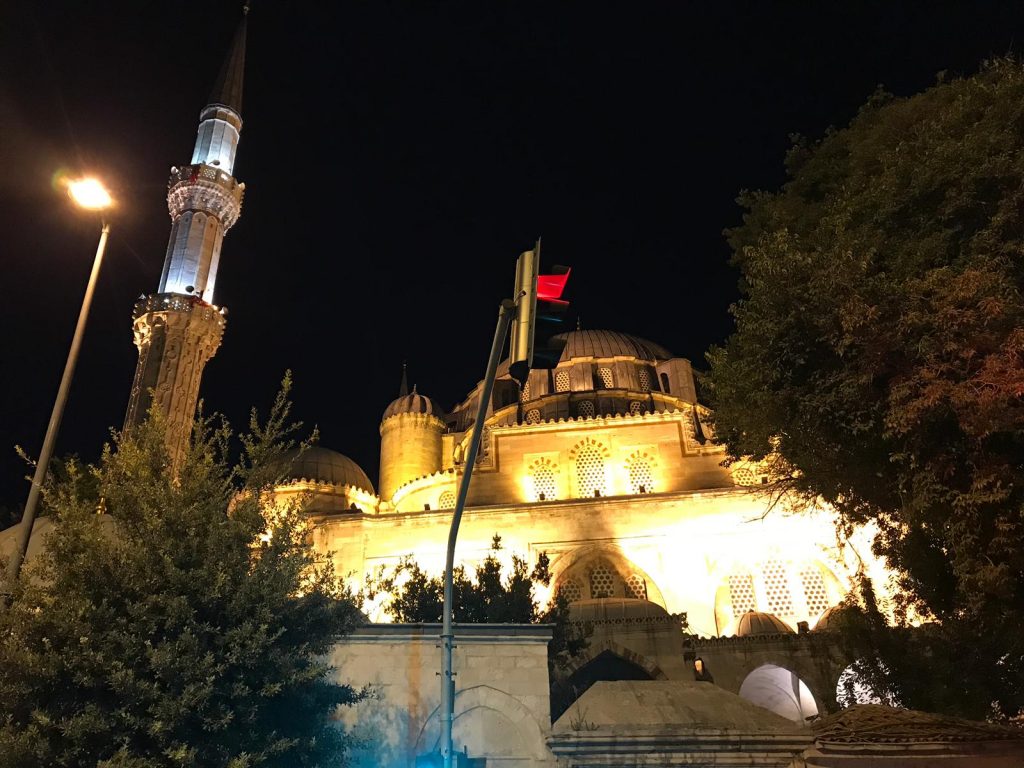
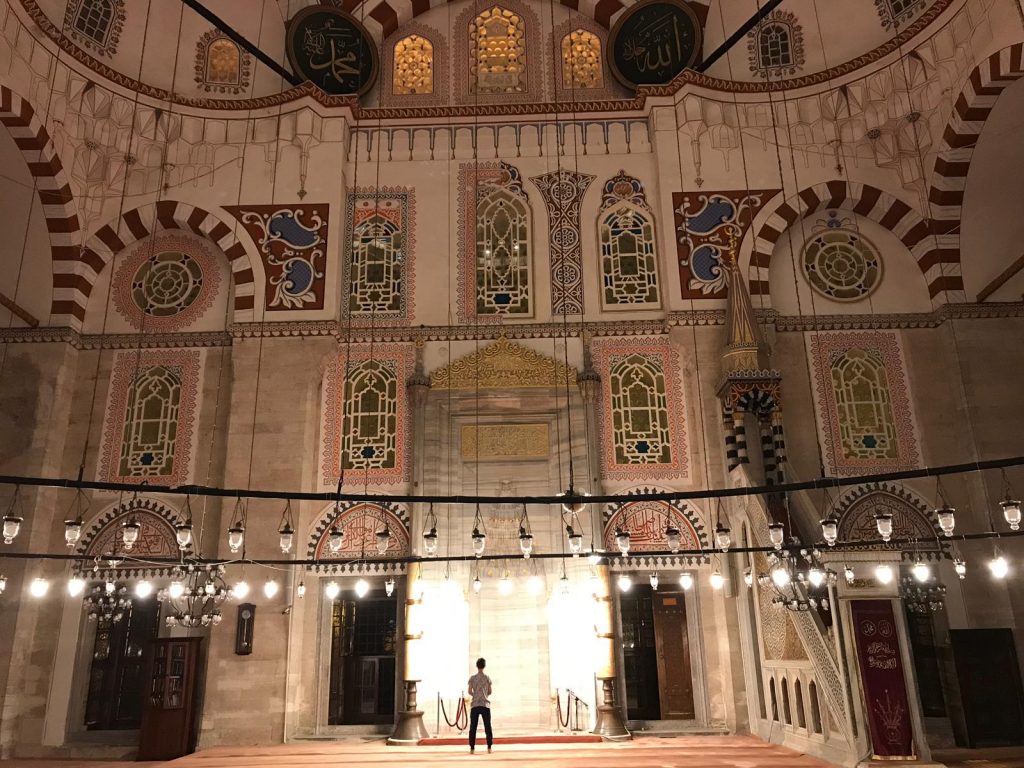
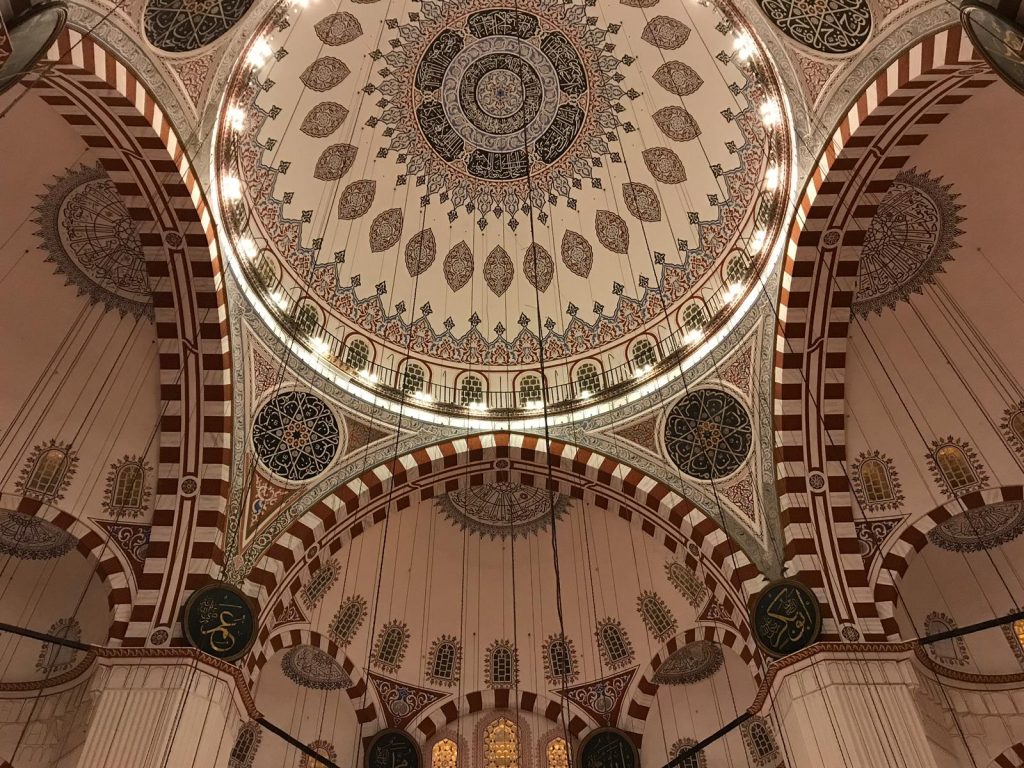
It is interesting to note that there is a green marble pillar located in the southern corner of the exterior walls of the mosque. This denotes the centre of Istanbul in the past. It is suggested that the architect Mimar Sinan (d. 996/1588) determined the centre as he wished to construct this mosque in the centre of the city. (Later, our dear family friend Dr. Mahmut Salihoglu informs me that when he was young, the green pillar could be turned around. However, this is not possible now due to the elevation of the street level).
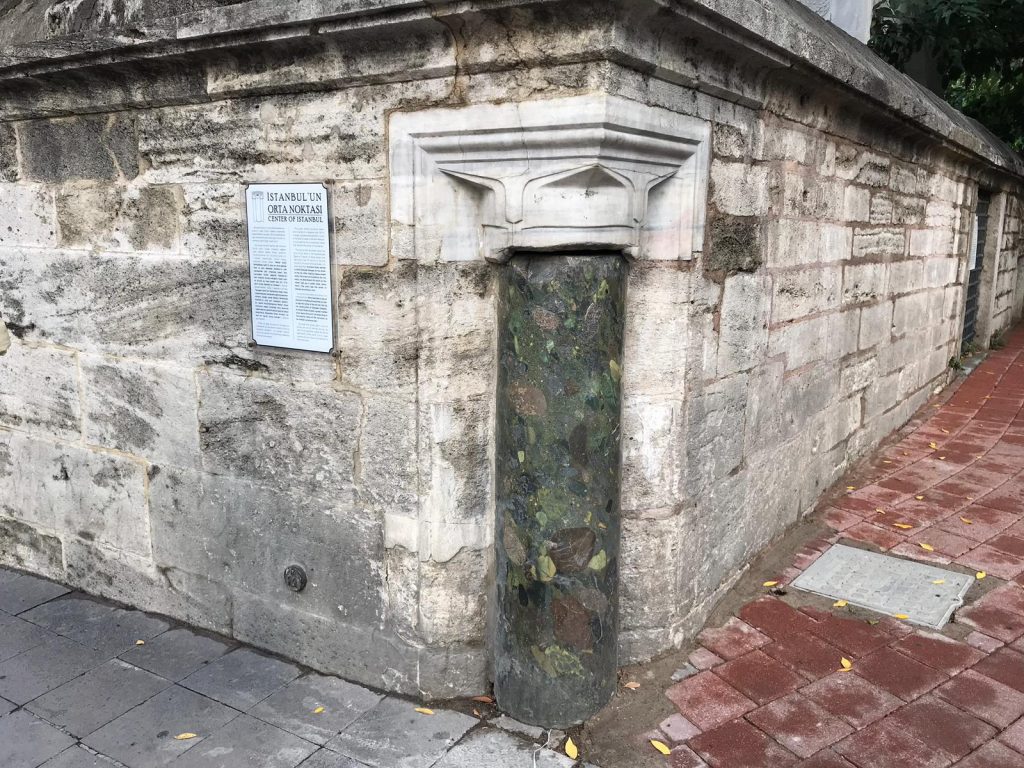
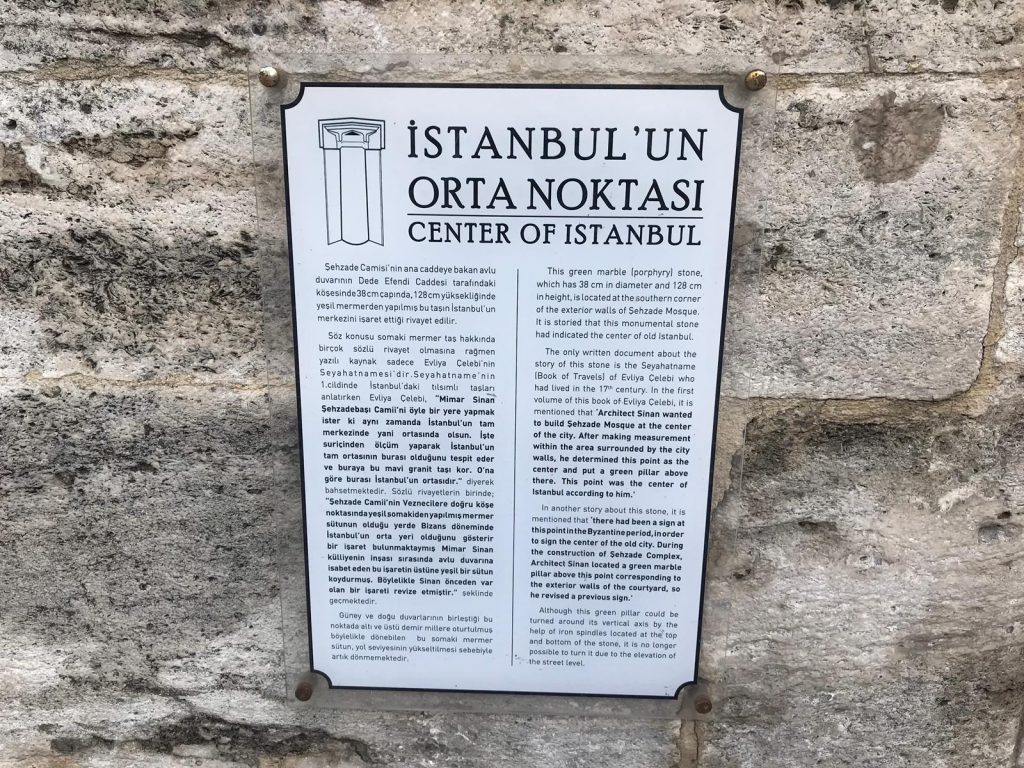
There is also alongside this wall, the Ottoman sadaka tasi (charity stone). These charity stone pillars were a very simple idea that served a great purpose. They were approximately the size of a person and had a hollow area at the top. The system was simple: A rich person would donate money by reaching up to the top of the pillar and would leave their charity in the niche. Later, a person in need would come to the pillar, reach up and take just enough money for what they needed, leaving the rest behind for the next needy person. The rich and the poor were thus treated gracefully.
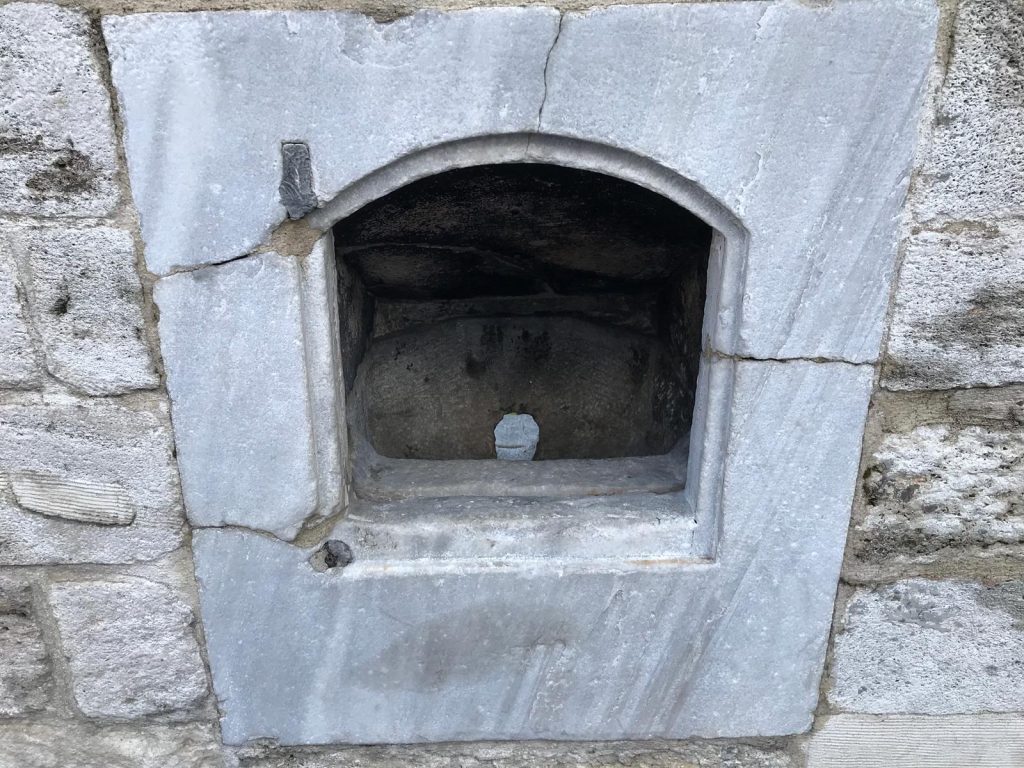
Day 4 – Tuesday 18 August 2020
Meeting academics and visit to Suleymaniye Mosque
Dr. Mahmut Salihoglu
We begin the day by meeting our old family friend, Dr. Mahmut Salihoglu, who is currently a lecturer at Istanbul University, the first and most established university in the country. Dr. Mahmut resided in Manchester during the 1990s and acquired his PhD in Judaism from the University of Manchester. During his seven year stay in Manchester, he would visit our home and established a close connection with my respected father and our family. Thus, whenever we visit Turkey, he hosts us and leaves no stone unturned in making our stay comfortable and assisting in every way possible.
A few days ago, I requested him to arrange meetings with some academics within the Islamic studies departments of some of the universities of Istanbul. Given his established connections, he arranged these at short notice.
Professor Dr. Mehmet Ozsenel
Our first stop is the Faculty of Theology of Marmara University which is renowned to be the best faculty of theology in Turkey. The university is located on the Asian side, we take the underground metro to reach there.
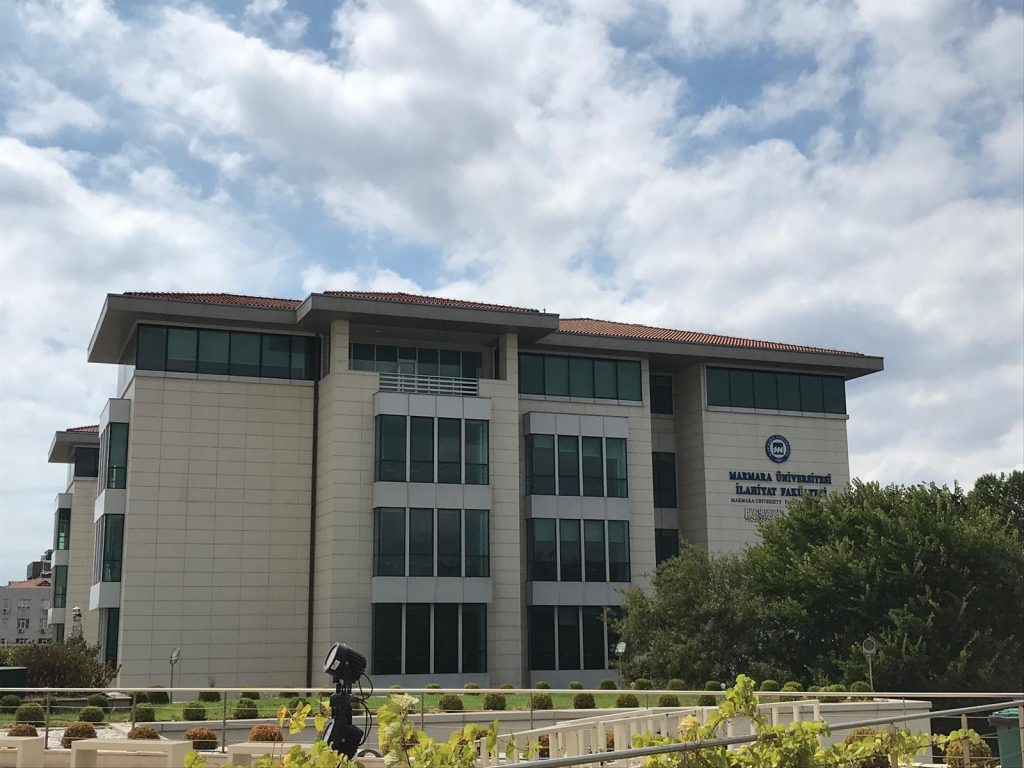
Our first meeting here at 1pm is with Professor Dr. Mehmet Ozsenel, the Head of the Islamic Studies Department within the Faculty and the author of several books. Interestingly, he resided in Pakistan for 18 months for his masters on the subject of Ḥadīth studies in Pakistan which was also published in Turkish. I suggest to him to translate it into Urdu and also English for wider benefit. During his stay in Pakistan, he benefited from Mawlānā ʿAbd al-Rashīd Nuʿmānī (d. 1420/1999). He also acquired a copy of Mufti Muḥammad Taqī Usmānī’s (b. 1362/1943) ‘The authority of the Sunnah’ and translated it into Turkish. He kindly gifts this book and other books. He explains that the university is one of the few universities in Turkey wherein it is possible to study Masters and PhD in Islamic Studies in Arabic.
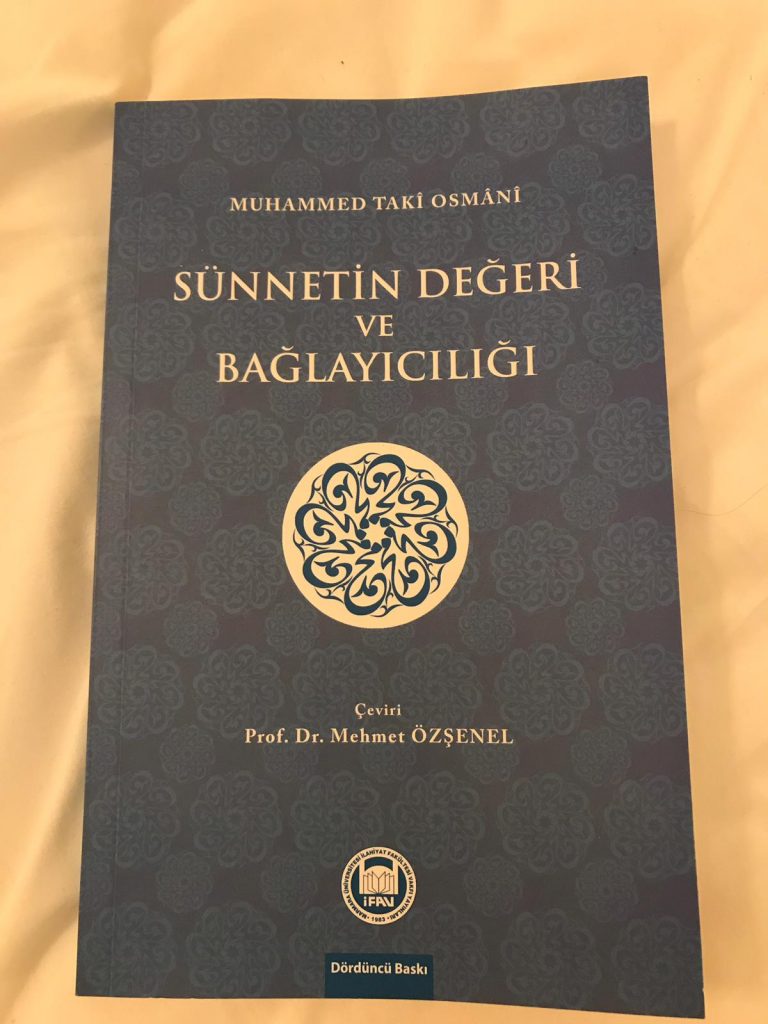
I gift him some of my books and discuss with him my ongoing work on the garīb (unidentified) ḥadīths of Hidāyah. He provides some useful suggestions.
The Abdullah Tivnikli Tatbikat Mosque
We perform Dhuhr Ṣalāh at the Marmara University Faculty of Theology Abdullah Tivnikli Tatbikat Mosque, which opened in 2015. It is a beautiful modern mosque.
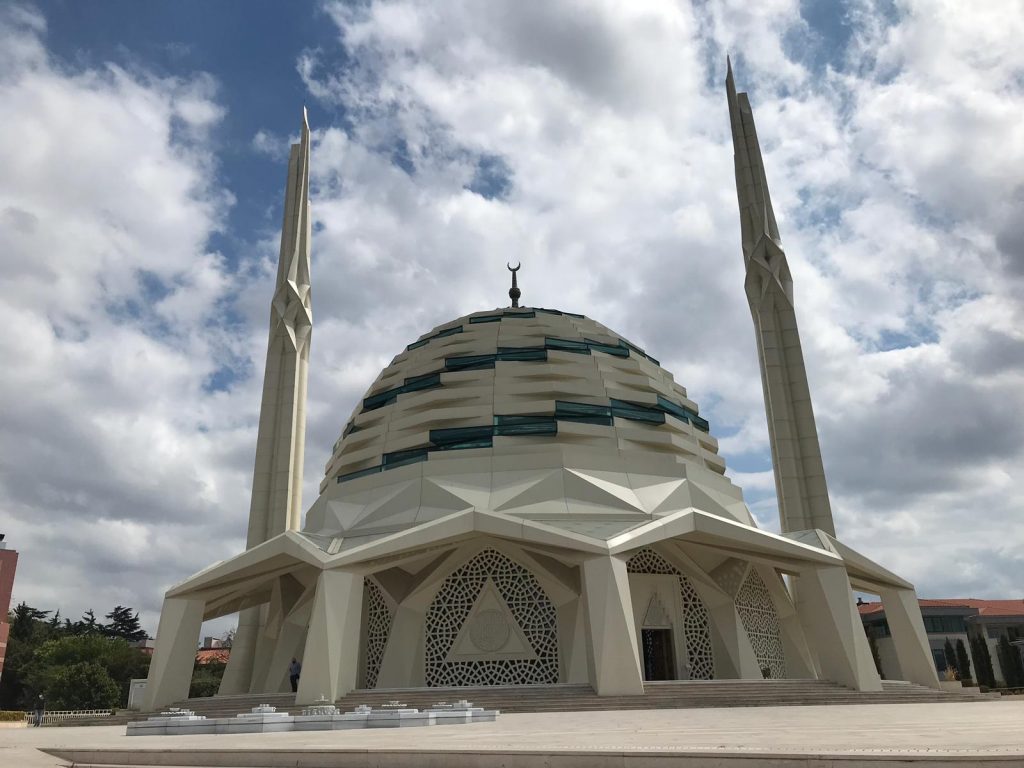
The university’s website describes it as follows:
“Faculty of Theology Abdullah Tivnikli Tatbikat Mosque is designed as our architectural tradition’s interpretation of today’s vernacular. Being inspired by the rotational movement that takes part in the whole universe from macrocasmos to microcosmos, the mosque is in the pursuit of a new horizon in the mosque architecture by uniting “the part in the whole” and “the whole in the part” notion with the fractal character of the nautilus form and the inspiration of millenarian traditional ceiling technic.”
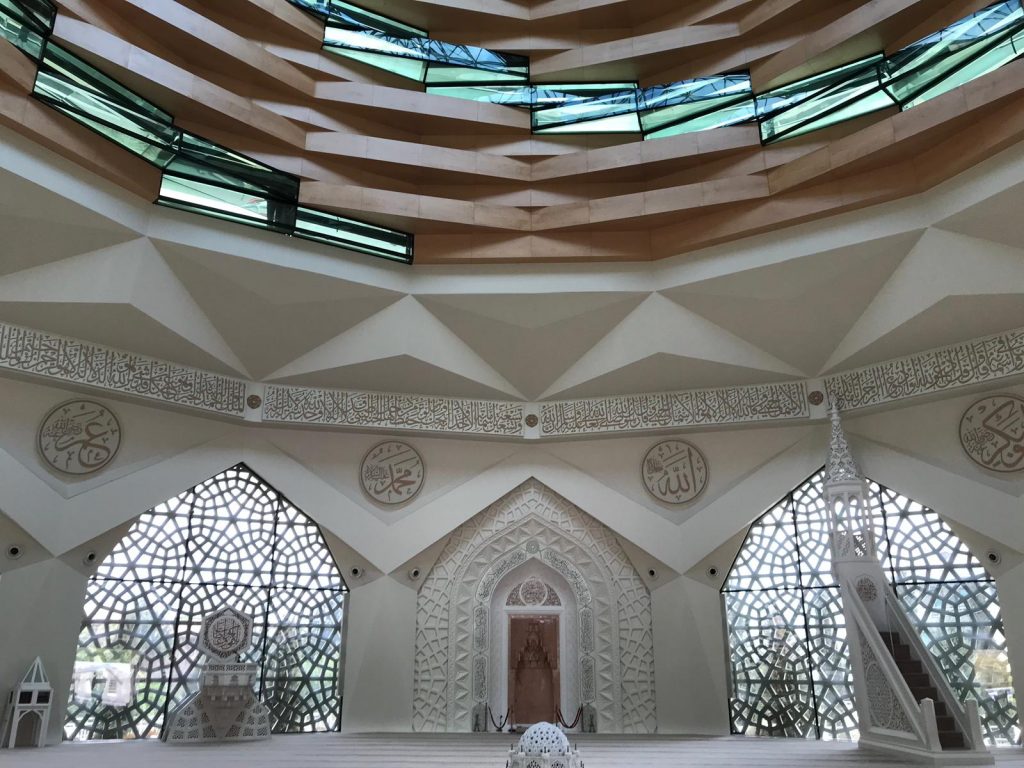
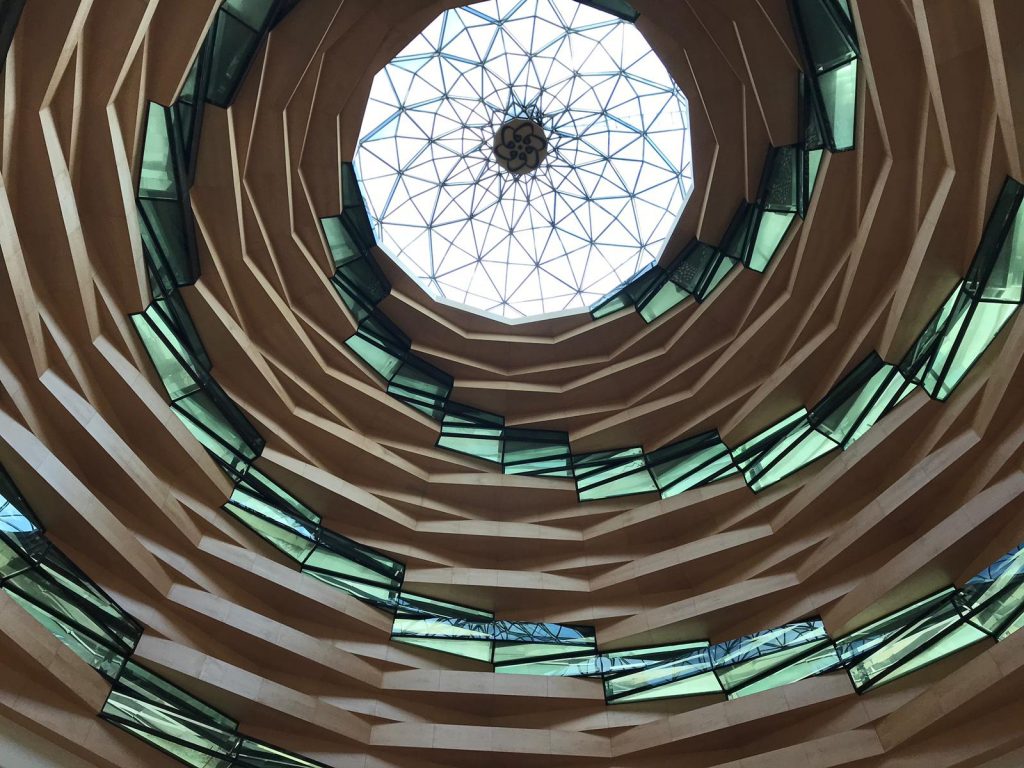
Within the ground floor of the mosque complex, we visit the university bookshop. Dr. Mahmut mentions that Turks love translating books and shows me a range of Turkish translations of ḥadīth and fiqh books, such as Majmaʿ al-Zawāʾid, Majmaʿ al-Anhur and others.
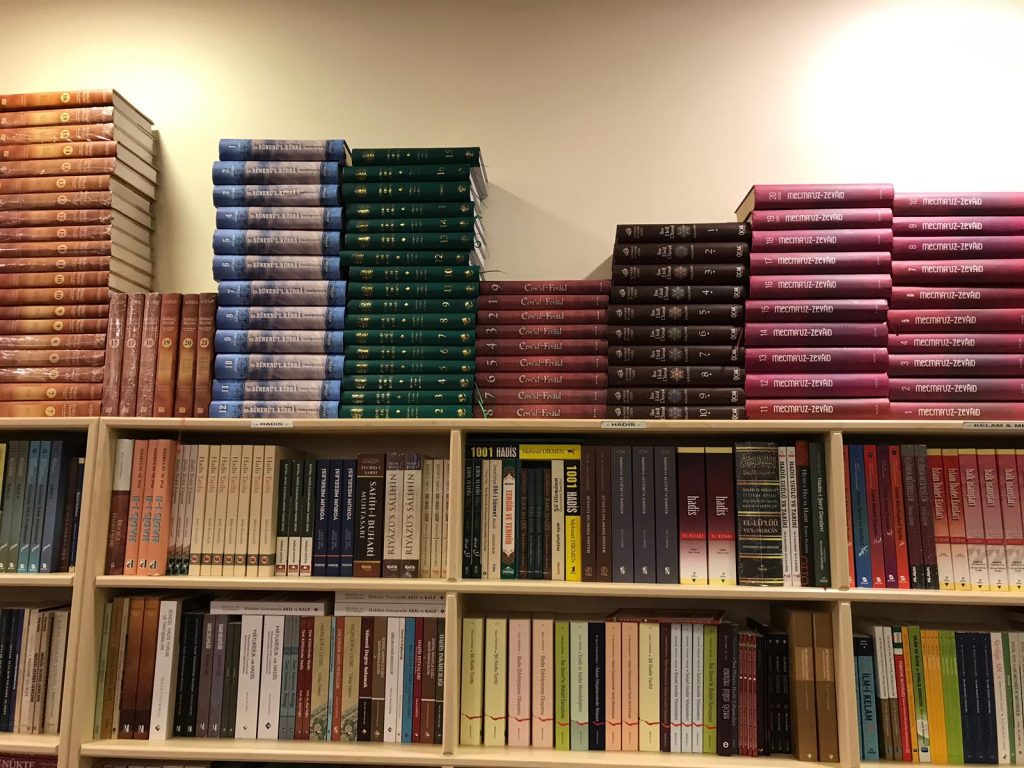
Professor Dr. Mehmet Boynukalin, Chief Imam of Aya Sofya
At 3pm, we meet with Professor Dr. Mehmet Boynukalin, who I was very eager to meet for two reasons; firstly because he researched and published the most complete version of al-Aṣl of Imam Muḥammad ibn al-Ḥasan al-Shaybānī (d. 189/805) preceded with a critical introduction, which I benefit from on almost a daily basis, and secondly, he was recently appointed as the Chief Imam of Aya Sofya. He also published a critical edition of Imam Muḥammad’s al-Jāmiʿ al-Ṣaghīr with a very beneficial introduction.
We meet him at the same Faculty of Theology of Marmara University. He warmly welcomes us and explains that he resided in Manchester between 2001 and 2005. He is of Turkish origin and studied in Egypt and Turkey. We extend our congratulations on his appointment as the Chief Imam of Aya Sofya. He mentions that he was appointed to Marmara University two months ago and a few weeks later he was appointed Chief Imam of Aya Sofya. He is, thus, new to both roles.
I also extend my profound gratitude to him for his work on al-Aṣl, which in reality is a monumental work. He explains that he worked tirelessly for ten years on this book and used various manuscripts, the oldest one was the manuscript of Murād Mullā in Fatih from the seventh century. He mentions that Mawlāna Abū al-Wafāʾ Afghānī (d. 1395/1975) published four volumes covering the chapters of worship and some other chapters. A Christian by the name of Shafīq Shaḥatah worked on the chapters of Buyūʿ and Salam and this is now published as the fifth volume, however, his name is omitted. This five-volume collection remained incomplete. Further details can be found in his detailed introduction (p.174) which is a full volume featuring extremely beneficial information.
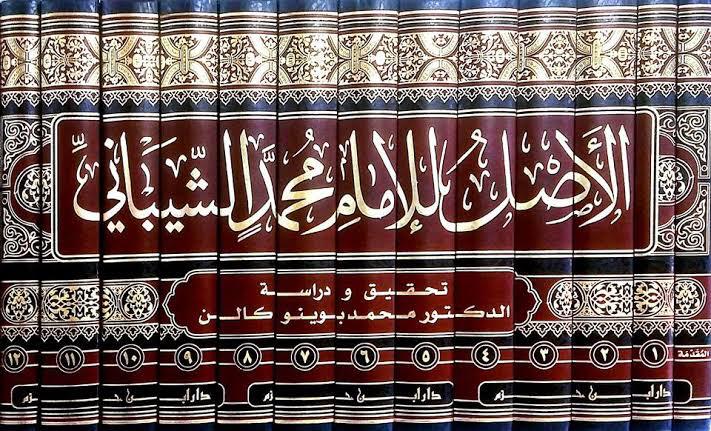
I ask Dr. Boynukalin if he has since located the missing chapters from Kitab al-Aṣl such as Kitab al-Manāsik, Kitab Adab al-Qāḍī and the other chapters which he has mentioned in his detailed introduction (p.115). He replies in the negative adding that it is possible they exist because sometimes manuscripts are incorrectly labelled and sometimes, they are not labelled or indexed. I mention that Imam Khaṣṣāf (d. 261/874-5) in his recently published Adab al-Qāḍī quotes from Kitāb Adab al-Qāḍī of al-Aṣl.
In relation to Kitāb al-Manāsik, he mentions that Mawlānā Abū al-Wafāʾ included Kitab al-Manāsik from the abridgement of al-Aṣl, al-Kāfī of Imam Ḥākim Shahīd (d. 334/945). Despite Mawlānā mentioning this, many people continue to think that this is the original Kitāb al-Manāsik of al-Aṣl. In relation to al-Kāfī, he mentions that he used it along with its commentary, al-Mabsūṭ of ʿAllāmah Sarakhsī (d.ca.490/1097) whilst working on al-Aṣl. Sometimes, he recollects that, all the manuscripts of al-Aṣl would have an error, probably because their source was one, and he would find the correct wording in al-Kāfī or its commentary, al-Mabsūṭ. He is currently working on publishing al-Kāfī which remains unpublished and highlights that the order within al-Kāfī is the same as al-Aṣl. (This affirms that al-Kāfī is an abridgement of al-Aṣl only and not the other four ẓāhir al-riwāyah books, as outlined in our article: Number of Ẓāhir al-Riwāyah books and al-Kāfī, however, it would have been good to ascertain his definitive position on this).
I ask Dr. Boynukalin if he came across specific issues or scenarios in al-Aṣl that are not explicitly mentioned in later Fiqh books. He explains that his focus was to publish the book without delving into comparative analysis because this is a huge task which later researchers can focus on. However, he explained difficult words and referenced the ḥadīths. I suggest that sometimes I have experienced that an issue is mentioned in al-Aṣl and I am unable to find it explicitly in subsequent texts. One such example is the issue of a revert girl making her non-Muslim father wakīl (representative) for her marriage, as outlined in an answer. Dr. Boynukalin comments that sometimes abridgements lose relevant information which could prove to be invaluable later.
(Note: There is ongoing debate regarding the famous principle, ‘there is no consideration for Ikhtilāf al-Maṭāliʿ’ and whether it is from the ẓāhir al-riwāyah or not. In my article, Pearls of Mufti Muhammad Taqi Usmani (2019), I mentioned Mufti Ṣāḥib’s comment that “it is difficult to negate its existence in the ẓāhir al-riwāyah altogether. It has been relied upon by later scholars and Imam Qāḍīkhān (d. 592/1196) is a very senior jurist. At best, one should say that he was unable to locate it. The published versions of the ẓāhir al-riwāyah books are incomplete, there could be several versions and sometimes issues are found in the not so obvious chapters.” The reason for mentioning this at this juncture is that one of the arguments of those who claim it is not from the ẓāhir al-riwāyah is that it is not mentioned in subsequent texts. Whilst this is a very strong indicator, it is not conclusive because it appears that some issues mentioned in al-Aṣl are not found in the later books, although an issue of such importance would have been mentioned in subsequent texts, and Allah knows best).
After an discussing al-Aṣl, we discuss the gharīb (unidentified) ḥadīths of Hidāyah which I have been working on in recent months. He concurs with my assessment that just because a ḥadīth was not located by an earlier scholar does not mean it is fabricated. I share with him the number of ḥadīths I have located thus far, which are approximately 70. This is in addition to the ḥadīths found by scholars after Ḥāfiẓ Jamāl al-Dīn al-Zaylaʿī (d. 762/1360). Reflecting on the status of Hidāyah and its acceptance, Dr Boynukalin comments:
الهداية أصبحت أصلا بعد “الأصل”
Hidāyah has become an Aṣl (primary source) after ‘al-Aṣl’.
He explains that Hidāyah provides a very succinct summary of what is written before him which is why people started to rely on it.
An interesting discussion follows regarding the efforts of Indian scholars on ḥadīth. Dr. Boynukalin is of the view that Indian scholars over the past few centuries have worked on ḥadīth sciences much more than their Turkish counterparts. Over here, he suggests, not much has been added to what is in ʿUmdat al-Qārī. However, many commentaries exist on Mishkāt al-Maṣābīḥ, because this was taught here.
I gift Dr. Boynukalin some of my books, he is extremely appreciative. He is extremely humble and comes to the lift to bid us farewell. It has been an honour and privilege to meet him.
The Headscarf for Girls
As we depart from Marmara University, my dear friend Dr. Mahmut mentions that he studied at Marmara University and recalls that girls with headscarf were not permitted to enter the campus. These restrictions have been removed over the past decade. The headscarf is now a common sight in Turkey. I recall in 2003 when we travelled with our family to Çanakkale and some other cities, some people would stare at us.
Professor Dr. Murteza Bedir
We return via Metro to the European side of the city and meet with Professor Dr. Murteza Bedir at a local cafe near our hotel in Fatih. Dr. Bedir is a Professor in Fiqh at Istanbul University and also served as the Dean of the faculty in the past. He studied with Dr. Mahmut Salihoglu at Manchester University during which time they also visited Darul Uloom Bury.
As we sit down and discuss our earlier meetings, he mentions that the appointment of Dr. Boynukalin as Imam of Aya Sofya was an unusual appointment because academics are not normally appointed.
Dr. Bedir is a member of the International Islamic Fiqh Academy of Jeddah and knows Mufti Muhammad Taqi Usmani. An interesting discussion follows regarding Islamic Finance and whether it has become ‘Islamic Capitalism’. I gift him some of my books. Whilst discussing my work on the ḥadīths of Hidāyah, he recommends that I refer to Shiite sources for the ḥadīths that remain unidentified. This is because he worked on volume 13 of Taʾwīlāt al-Quran of Imam Abū Manṣūr al-Māturīdī (d. 333/944) and found that some ḥadīths that could not be identified in Sunni sources that have reached us were present in Shiite sources.
Suleymaniye Mosque
Our next stop is the Suleymaniye Mosque. The mosque was commissioned by Suleiman the Magnificent (d. 974/1566) and designed by the famous architect Mimar Sinan (d. 996/1588). Both are buried within the complex. An inscription specifies the foundation date as 1550 and the inauguration date as 1557. It is reported that one night, Sultan Suleiman saw the Prophet ﷺ in a dream. The Prophet ﷺ instructed him to construct a large mosque and indicated its location and specified the location of the pulpit and the miḥrāb. Mimar Sinan was invited in the morning and instructed to build a Masjid. Mimar Sinan started to explain the location and the shape of the mosque including the location of the pulpit and the miḥrāb. Sultan Suleiman was surprised and asked Mimar Sinan how he knew this. He replied: “I was just behind you last night”. Some reports suggest that it was only Mimar Sinan who saw the dream, Allah knows best.

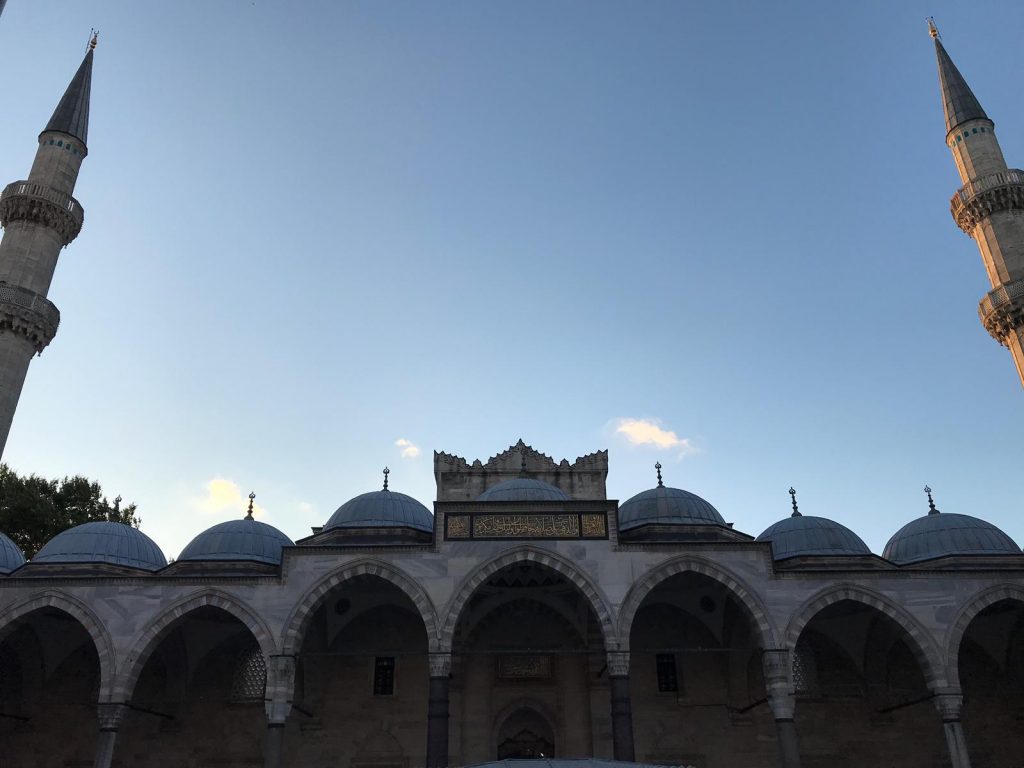
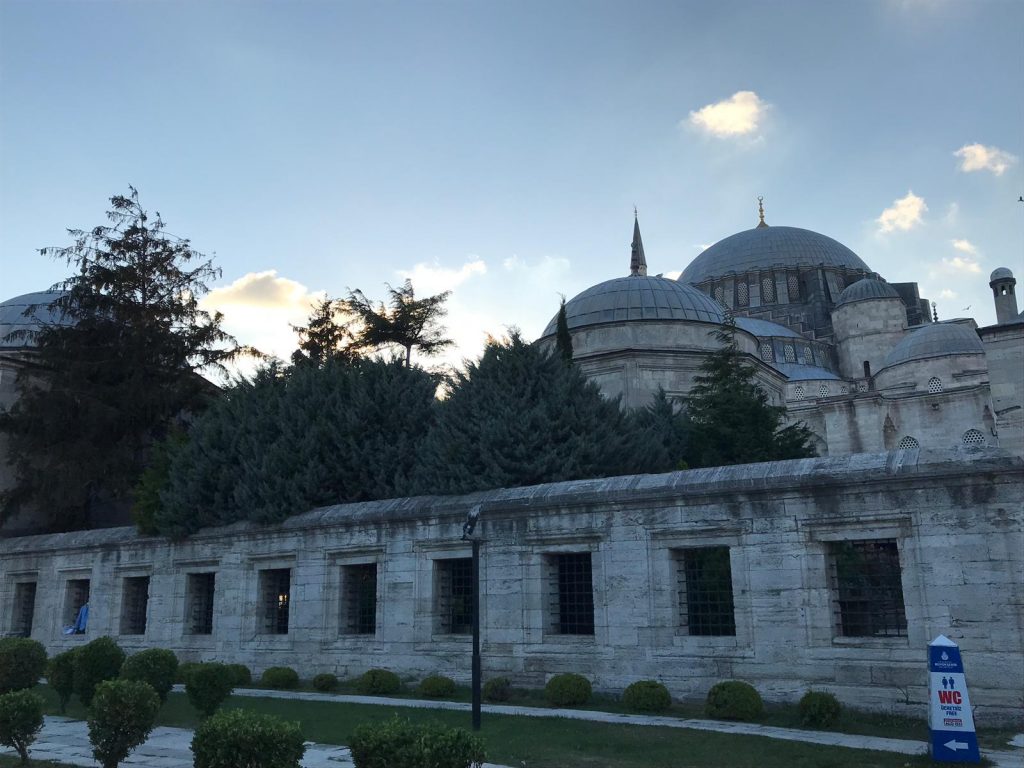
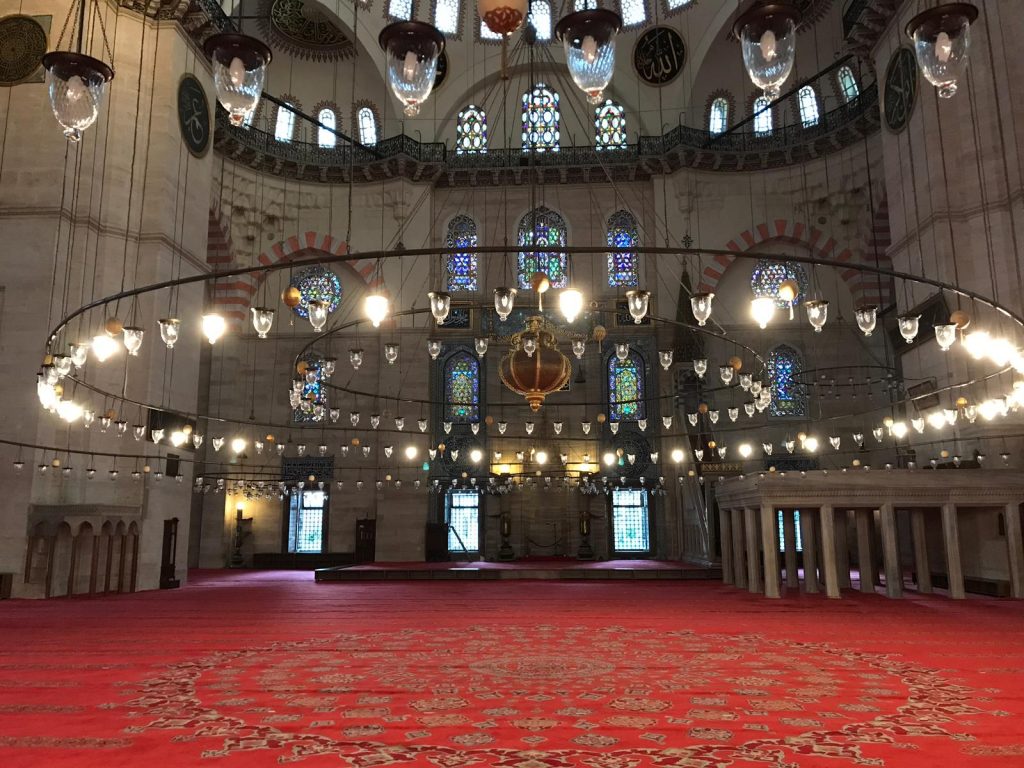
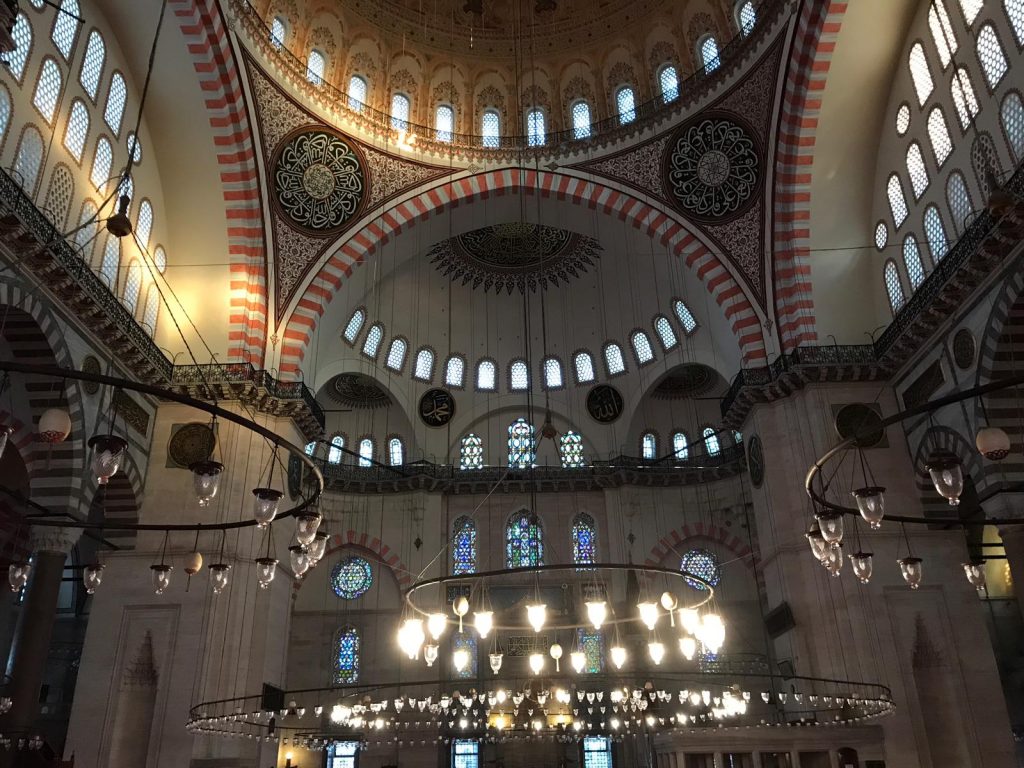
The mosque is one of the best-known sights of Istanbul and is from among its largest mosques. The garden behind the mosque provides some of the most scenic views of the Golden Horn.
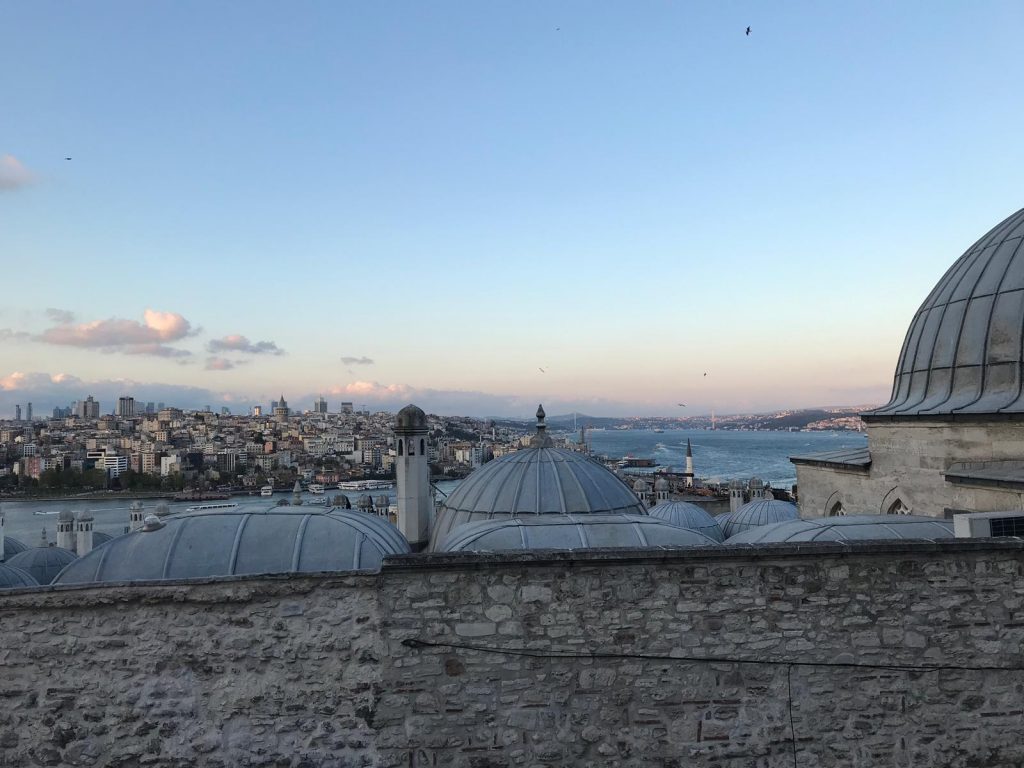
To the south of the mosque, there is the famous Suleymaniye library, which is the largest manuscript library in Turkey and preserves one of the world’s most extensive collections of Islamic manuscripts. Since its establishment in 1918, the library’s vast collection of manuscripts has made it one of the most important centres for researchers. Between 2002 and 2011, the library digitised its entire collection of manuscripts, which are now all accessible from computer stations in the reading room. I visited this library in October 2013.
Dr. Hamza el-Bekri
Whilst visiting Suleymaniye Mosque, we had pre-arranged to meet with Dr. Hamza el-Bekri, a lecturer at Ibn Haldun (Khaldun) University and a student of Shaykh Muḥammad ʿAwwāmah (b. 1358/1940). Dr. Hamza is of Palestinian origin and has published several works.
Ibn Haldun University is situated in Başakşehir, 25km from the Suleymaniye Mosque. However, the post-graduate section of the Islamic Studies faculty is located within the Ottoman era Darul Hadis (Dār al-Ḥadīth) block within the Suleymaniye mosque complex. The Suleymaniye mosque did not just serve as a mosque, it had many purposes including Quranic and Ḥadīth schools. A few years ago, the Government decided to give the Darul Hadis block to Ibn Haldun University so that it is used regularly for the teaching of ḥadīth and other sciences. The structure of the Darul Hadis block with its small rooms remains the same, although they have been refurbished. The small domes above the rooms were damaged, so there is a new roof. However, the original structure of the building and the rooms remain the same.
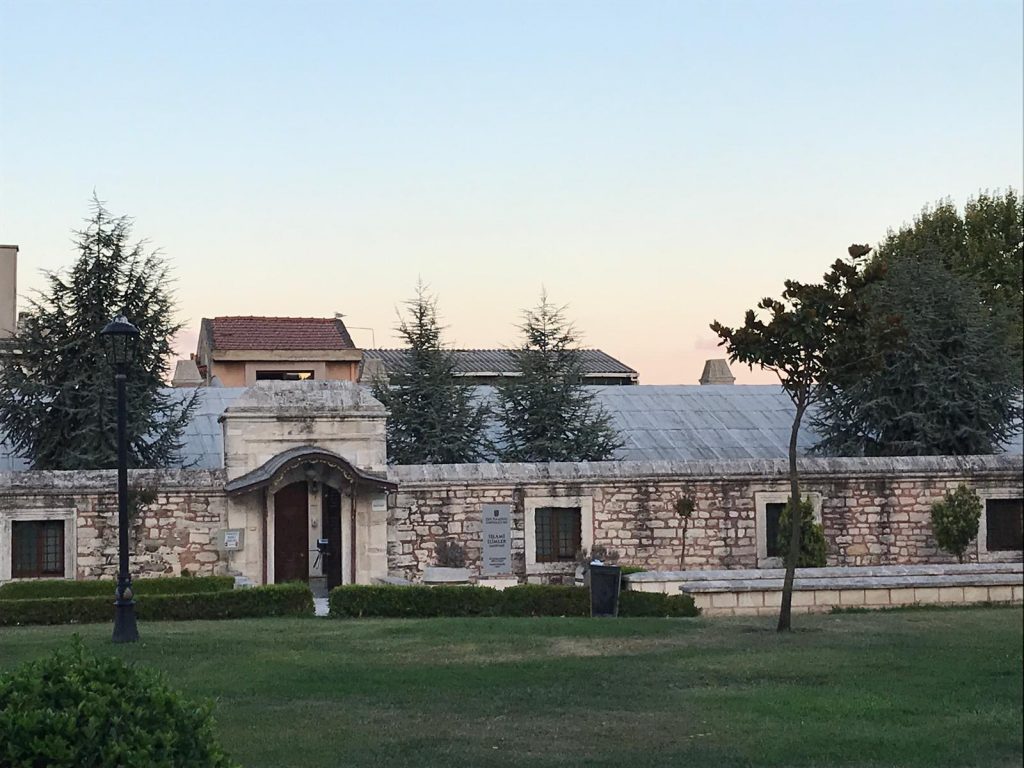
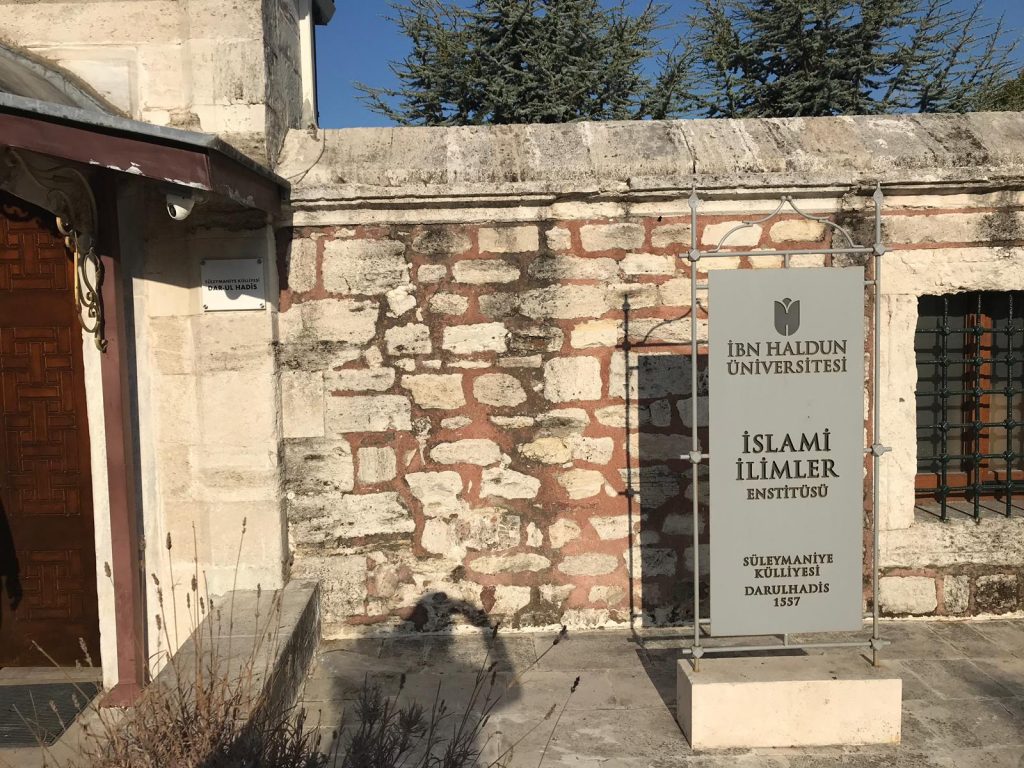
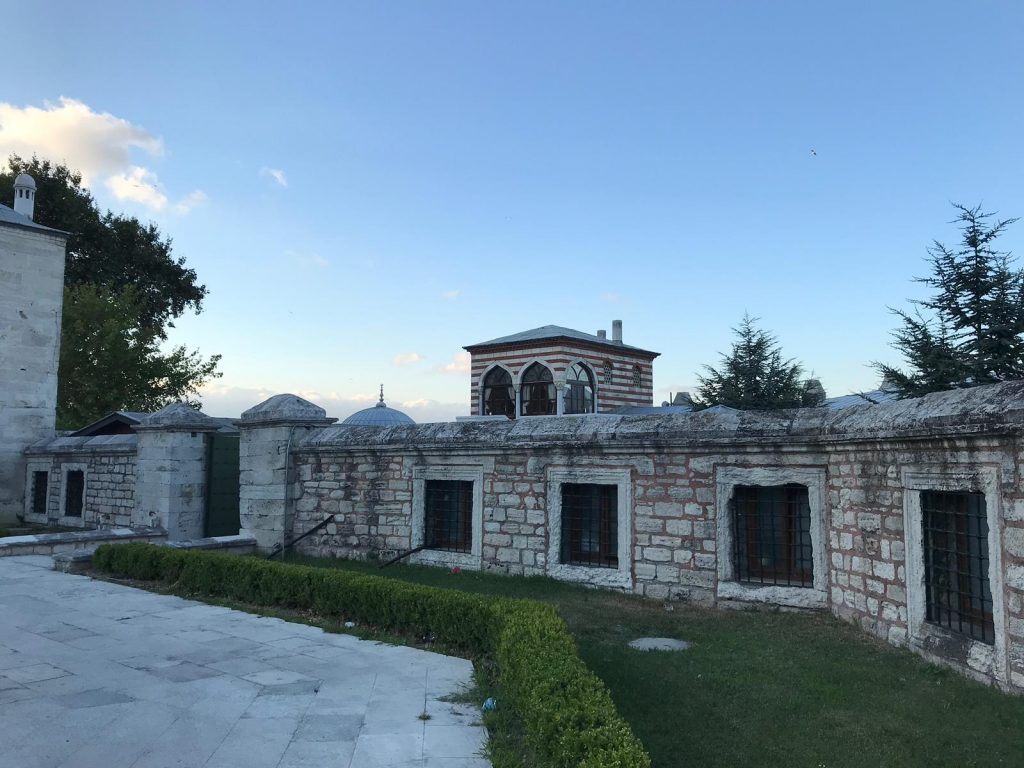
We meet Dr. Hamza el-Bakri here in a room in the Darul Hadis block, the room was one of the rooms of the student dormitory during the Ottoman era. He explains that prior to Ibn Haldun University using this complex for its teaching, it was used occasionally for lectures. An interesting discussion follows regarding the various Islamic Studies faculties in Istanbul. Dr. Hamza suggests that Istanbul has now become an international hub for Islamic learning with students travelling here from all over the world. At the Ibn Haldun University, a generous bursary is given to all students to cover tuition fees and expenses. However, for Masters and PhD programmes within the Islamic Studies faculty, students must be proficient in Arabic, English and Turkish, otherwise a one-year language course must be taken prior to admission.
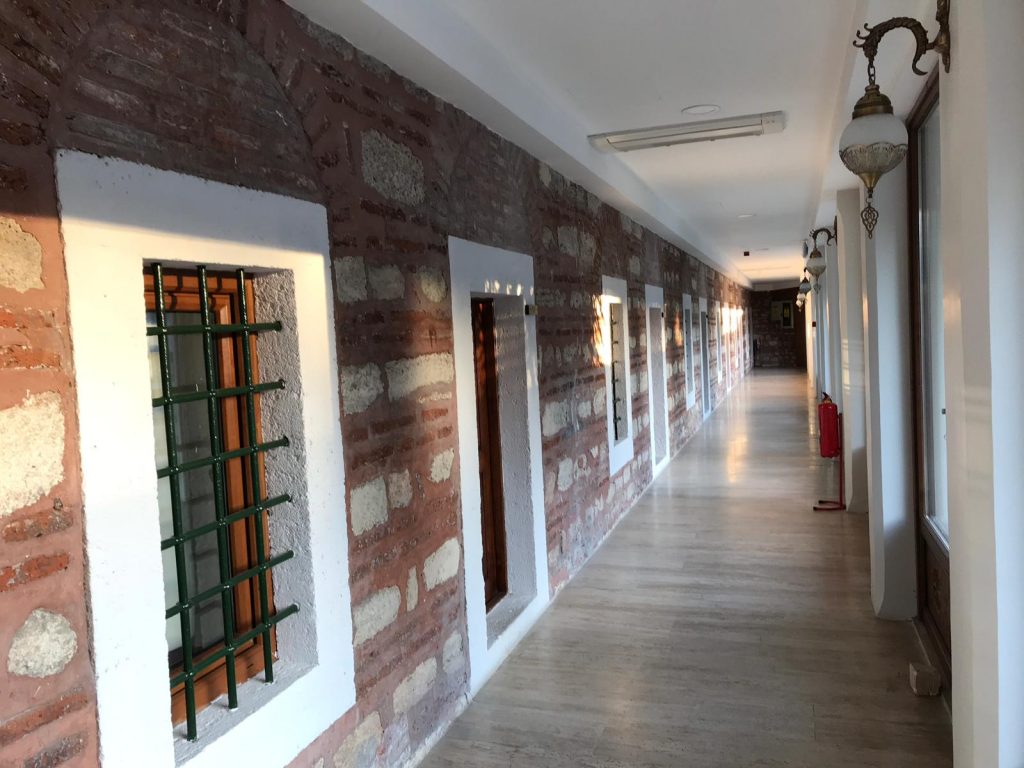
I gift Dr. Hamza some of my works and he gifts me the 850-page book ‘al-Nukat al-Ṭarīfah’ of Shaykh Zāhid al-Kawtharī (d. 1371/1952) published with his annotations. Whilst discussing my project on the gharīb ḥadīths of Hidāyah, he provides some invaluable suggestions and mentions that his teacher Shaykh Muḥammad ʿAwwāmah is currently working on six Takhrīj books including Naṣb al-Rāyah, al-Khulāṣah, Munyat al-Almaʿī, Takhrīj al-Ikhtiyār and two other books. The last time he met him, Shaykh had reached somewhere in Kitāb al-Ṣalāh. Dr. Hamza mentions that according to Shaykh Muḥammad ʿAwwāmah, the principal source of Hidayah’s ḥadīths is al-Tajrīd of Imam Qudūrī (d. 428/1037). I suggest to Dr. Hamza that my incomplete analysis of the gharīb (unidentified) ḥadīths indicates that it is al-Mabsūṭ of ʿAllāmah Sarakhsī (d.ca.490/1097). Dr. Hamza mentions that this was initially the view of Shaykh Muḥammad ʿAwwāmah also, however, he now thinks it is al-Tajrīd. I suggest that perhaps ʿAllāmah Sarakhsī benefited from al-Tajrīd. (Note: In some instances, the ḥadīths in Hidayah are not found in either book, they are found in al-Asrār of Imam Dabūsī, d. 430/1038-9 or other books such as Sharḥ al-Jāmiʿ al-Sagīr of Ṣadr al-Shahīd, d. 536/1141).
Before we leave, Dr. Hamza takes us to the room of the Hanafi Ottoman jurist and Quran exegete, Shaykh al-Islam Abū al-Suʿūd Effendi (d. 982/1574), the famous author of the Tafsīr Abī al-Suʿūd. It was here that Sultan Suleiman (d. 974/1566) would meet with Shaykh Abū al- Suʿūd after Jumuʿah Ṣalāh. It is now a meeting room for the Ibn Haldun University. We climb up the stairs and visit the room.
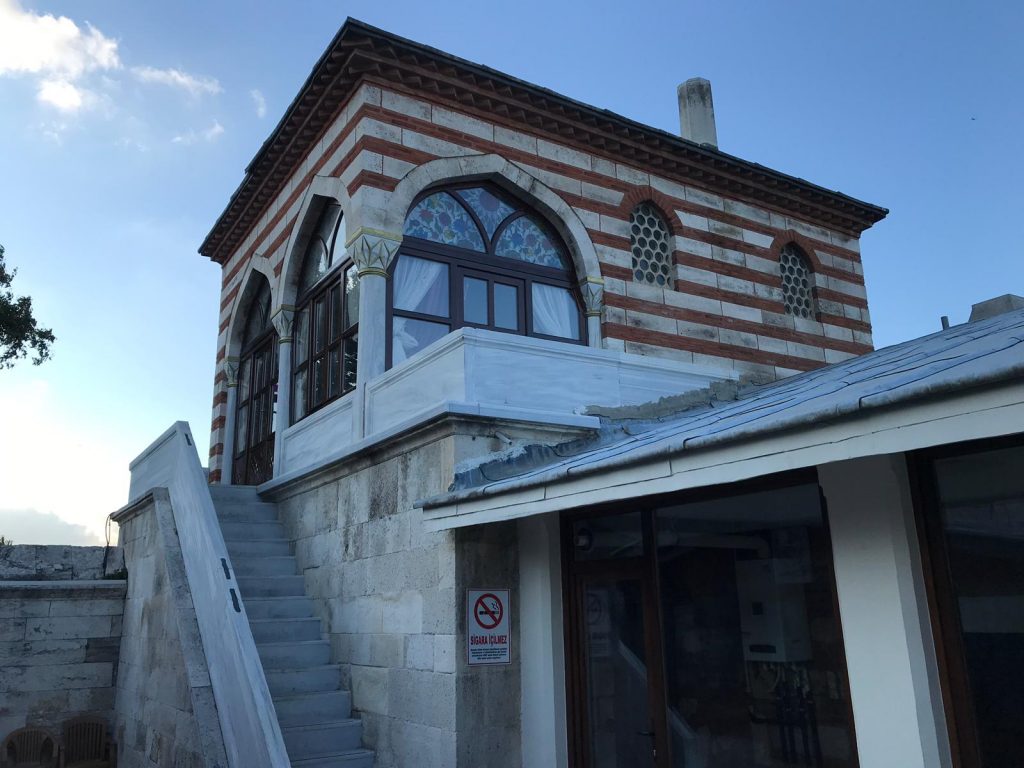
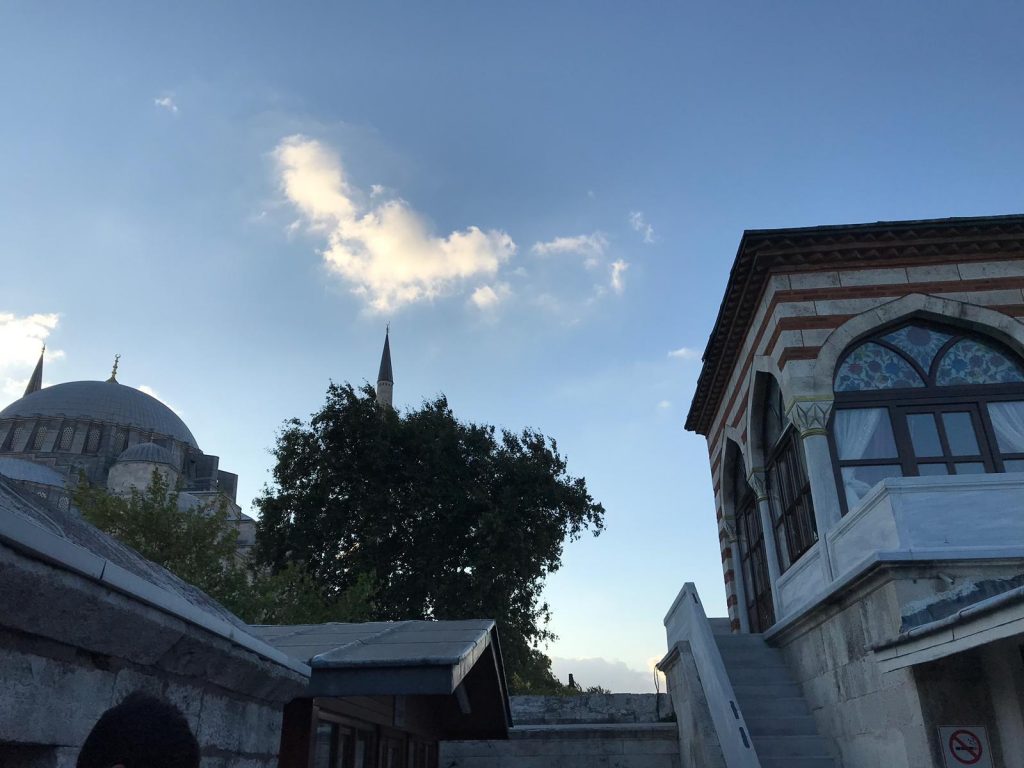
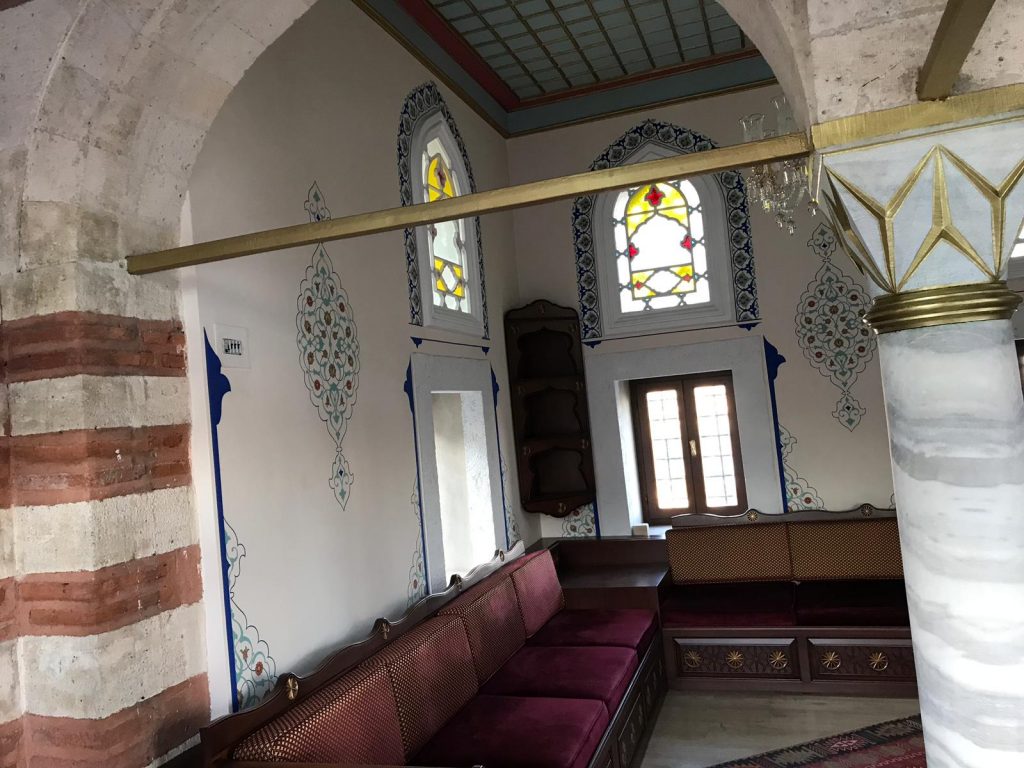
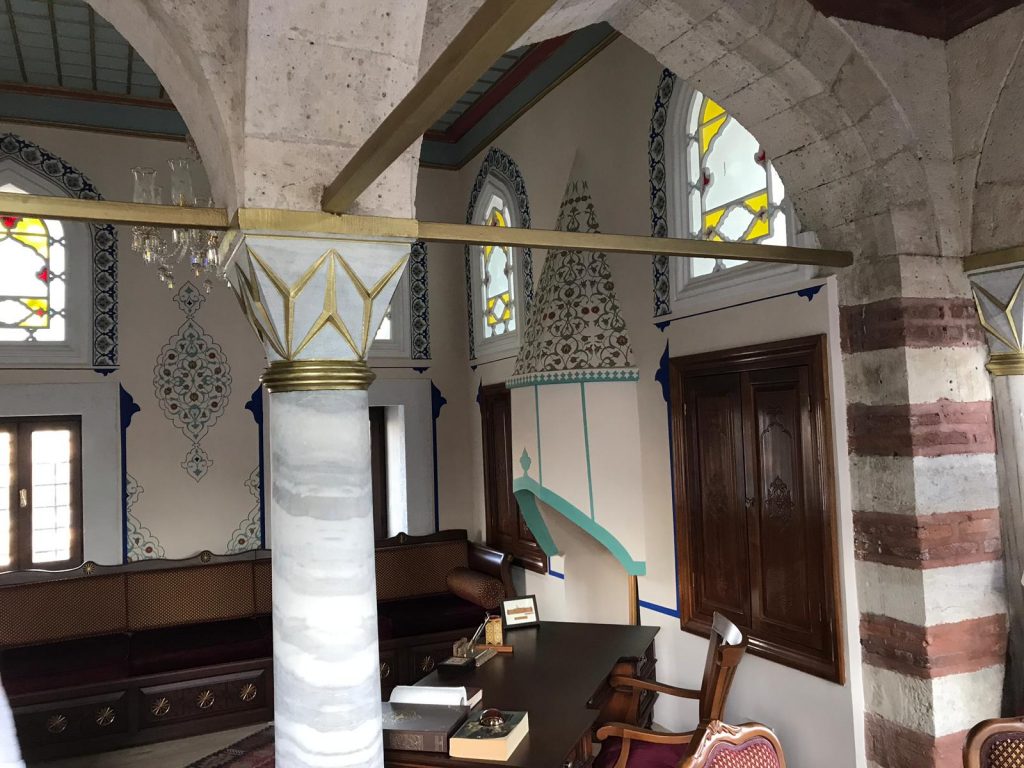
It should be noted that this Abū al-Saʿūd is different to ʿAllāmah Muḥammad Abū al-Suʿūd (d. 1172/1759), the author of the ḥanafī fiqh commentary, Fatḥ Allah al-Muʿīn.
Day 5 – Wednesday 19 August 2020
The Fatih Mosque and Ismail Agha Mosque
Grand Bazaar
In the morning, we visit the Grand Bazaar, which is one of the largest and oldest covered bazaars in the world. It is 30,700 square meters with over 60 streets and alleys and 4,000 shops. It normally attracts between 250,000 and 400,000 visitors daily. However, Covid-19 has had a substantial impact on tourism. Many shops are empty.
As a general rule in Turkey, tourists should bargain with prices. Prices will almost certainly drop, sometimes by up to 50%.
Professor Dr. Ahmet Turan Arslan
At 2pm, I meet Professor Dr. Ahmet Turan Arslan with my dear friend, Dr Mahmut Salihoglu, at Fatih Sultan Mehmet University in Fatih. Dr. Arslan is the Dean of the Faculty of Islamic Sciences at the university.
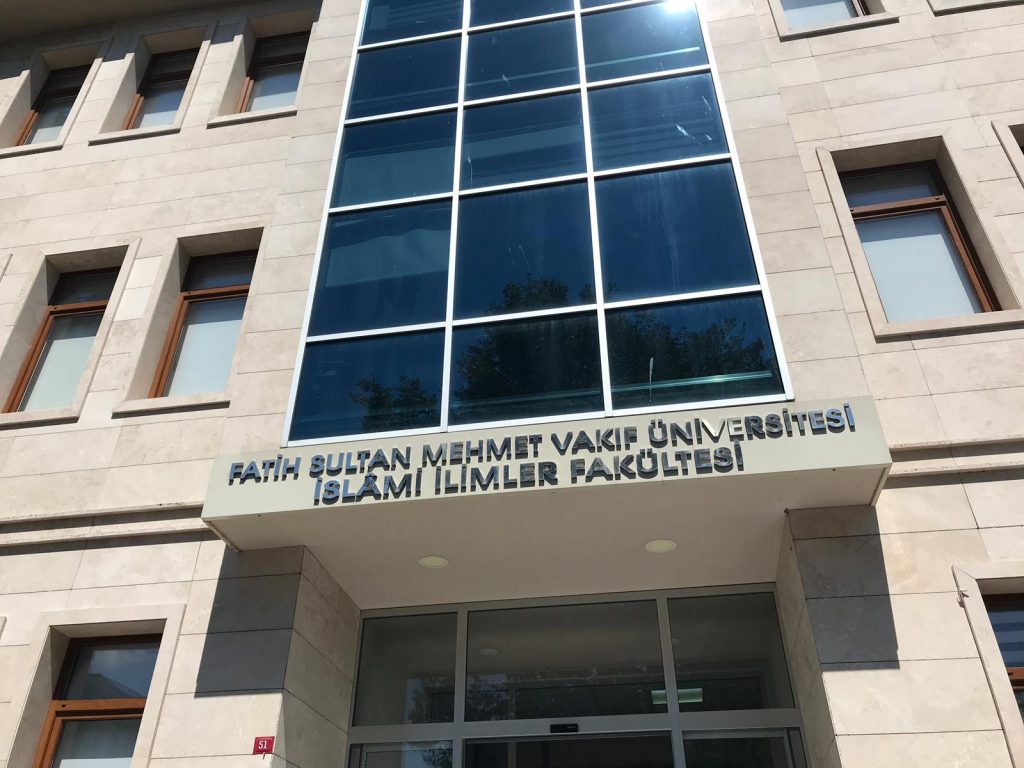
The meeting lasts for two hours with Turkish tea served. Many interesting discussions take place. Dr. Arslan visited Shaykh Abū al-Ḥasan ʿAlī al-Nadwī (d. 1420/1999) in Lucknow, India. When Shaykh visited Istanbul, Dr. Arslan asked him for some advice for future academic work. Shaykh advised him to follow in the footsteps of his father who authored Nuzhat al-Khawāṭir and collate the profiles of Turkish scholars throughout the centuries to date.
Dr. Arslan also mentions that he benefited from Mawlānā ʿAbd al-Rashīd Nuʿmānī (d. 1420/1999) when he visited Istanbul. The famous Turkish scholar, Shaykh Mahmud Effendi hosted Mawlānā and arranged a car to take him on a daily basis to the libraries to benefit from the manuscripts of Imam Muḥammad ibn al-Ḥasan’s books. This was one of the main purposes of Mawlānā’s visit to Istanbul.
Other discussions include:
- The importance of hygiene in the mosques of the UK and beyond, and the wider role of Muslims in representing Islam positively. In this context, the importance of melodious Adhān on the external loudspeaker is discussed. Dr. Arslan mentions that some mosques in London need to focus more on hygiene, whilst those that have permission to perform the Adhān on the loudspeaker should ensure that the Adhān is given by someone with a good voice so it attracts people closer to Islam. In one Masjid, he recalls, he did not understand a word of the Quranic recitation.
- Dr. Arslan mentions that Mufti Muḥammad Taqī ʿUsmānī has some good publications.
- The Arabic alphabet of Turkish was changed into the current Latin alphabet under a systemic agenda. When Dr. Arslan studied English in England, he suggested to his teachers that English words should be written according to how they are pronounced, so that it is easy for learners. His teachers explained that the language cannot be changed, otherwise, readers will be unable to access the works of Shakespeare and others. Dr. Arslan comments passionately that contrast this with the crime inflicted on the Turks, that we are unable to read our grandfather’s letters written in the Arabic script. External powers planned everything that occurred in Turkey, he stresses. Wilfred Scawen Blunt wrote a book which became the basis for what occurred thereafter.
- ʿAllāmah Ibn al-Humām’s (d. 861/1457) origins lie in Sivas, the birth place of Dr. Arslan, as evidenced from ‘Sīwāsī’ mentioned in his profile. Dr. Arslan provided the evidence of this to Dr. Saʿīd Bakdāsh who included it in his introduction to Zād al-Faqīr. This is similar to ʿAllāmah ʿAynī (d. 855/1451) whose origins lie in Gaziantep in Turkey. Many families in that era moved from Turkey to Egypt.
Fatih Market
Every Wednesday, the largest market takes place around the Fatih Mosque. The traffic disperses, the roads are closed, plastic canopies are strewn from building to building, and thousands of stalls are set up across several blocks. We walk from our hotel to this market and purchase some items. You can find almost anything from fruit, vegetables, and clothing, to all sorts of household materials and textiles. Prices are reasonable although one should not forget to bargain.
Ismail Agha Mosque
Our final stop for the day is the Ismail Agha Mosque where we perform Maghrib Ṣalāh. The mosque is a 10-15 minutes’ walk from the Fatih Mosque. Both floors of the Masjid are full. Most are wearing a turban. In this area, the women are modestly dressed and most wear the full Abaya. There are also many shops with Islamic books and merchandise. This Masjid, like all the Masjids in Turkey, has facilities for women.
This is a very religious area thanks to the efforts of the famous Turkish scholar Shaykh Mahmud Ustaosmanoglu, also known as Shaykh Mahmud Effendi. He is one of the most popular Islamic scholars in Turkey today. He is undoubtedly a mujaddid (reviver) of the Sunnah in the region. He was appointed imam of the Ismail Agha mosque in 1954 and continued in this role until he retired in 1996. He has millions of followers and has established various religious, social and charity organisations. Although he himself no longer resides in this area, his stronghold is still this area where his followers are easily recognised by their dress and turban. In the most recent list of the world’s most influential 500 Muslims, he was ranked number 35.
What is remarkable is that when we visited Istanbul in the 90s and also in the early 2000s, we would hardly come across men with a beard and women wearing the abaya. However, even at that time, this area was religious and the Abaya, turban and beard was common. This area is a must visit for anyone visiting Istanbul.
We return to our hotel via taxi which costs 13 Liras (£1.50) as there is no traffic.
Earlier in the day, Dr. Arslan had phoned Dr. Muḥyuddīn ʿAwwāmah insisting that I meet his father Shaykh Muḥammad ʿAwwāmah due to my ongoing work on the ḥadīths of Hidāyah. Dr. Muḥyuddīn kindly agreed despite Shaykh not generally meeting visitors due to the pandemic. However, the meeting did not materialise because of our return on Saturday which was Shaykh’s next availability.
Day 6 – Thursday 20 August 2020
Prince’s Islands
Today, we decide to travel to the Prince’s Islands via ferry. We take the tram from Askaray to the final stop, Kabatas. From here, we take the ferry to the Prince’s Islands. The contactless Istanbul Kart can be used, the charge is 10 Turkish Liras per adult.
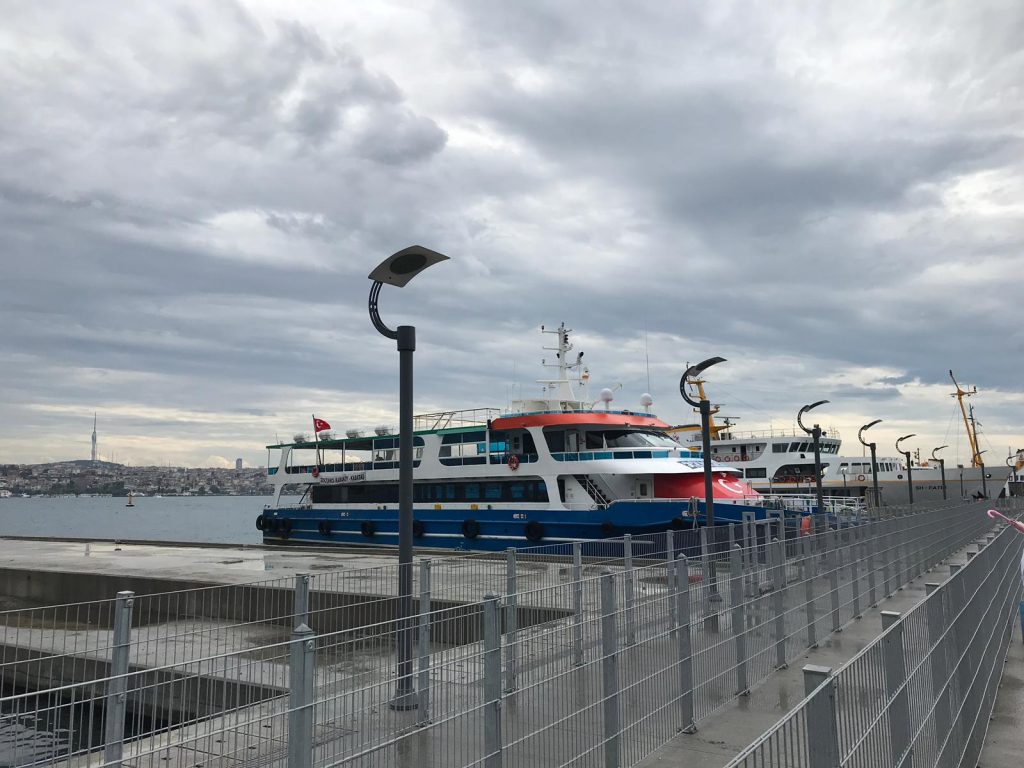
The Princes’ Islands are a chain of nine small islands in the Sea of Marmara. They evolved from a place of exile during the Byzantine era to a popular destination for locals and tourists to escape the hectic city life. Only four of the nine islands are open to the public: Buyukada, the biggest and most popular, Burgazada, Heybeliada and Kınaliada. The main feature of the islands is the silence. All motor vehicles are banned, making the islands an oasis of peace and quiet. Until last year, horse-drawn carriages and bicycles were the main transportation means on the islands. However, small electric rickshaws have now replaced the horse-drawn carriages following the killing of 81 horses due to an outbreak of glanders in December 2019 on the main island.
We decide to visit Buyukada. The ferry journey from Kabatas to Buyukada takes approximately 90 minutes. We spend several hours here enjoying the weather.
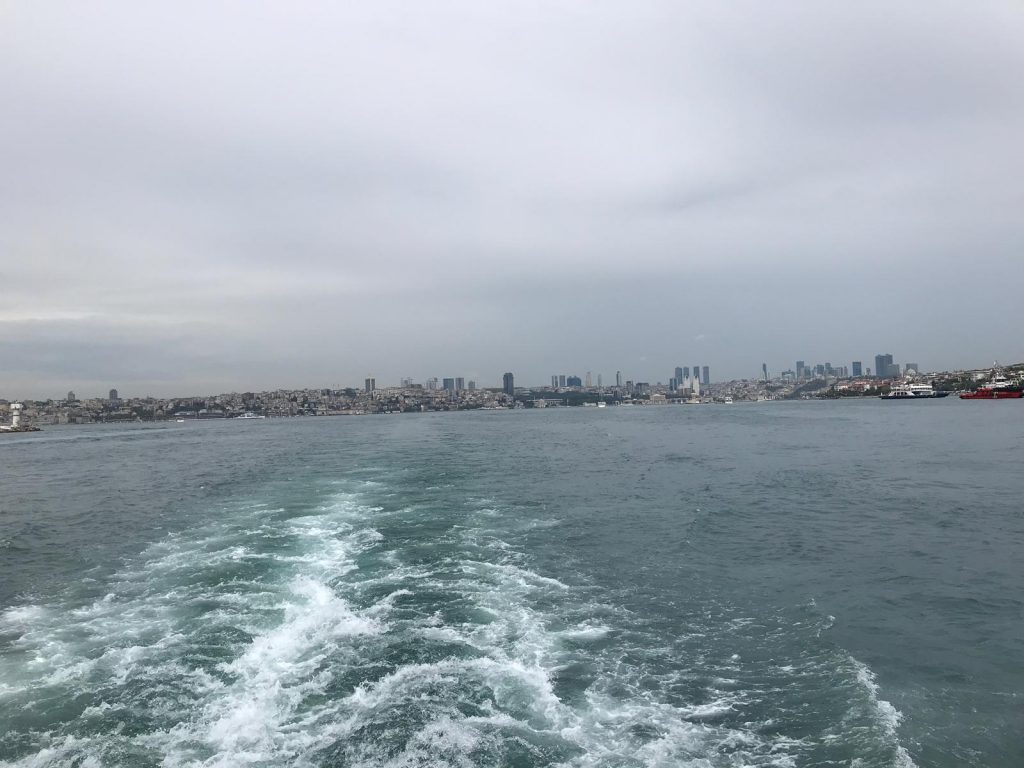
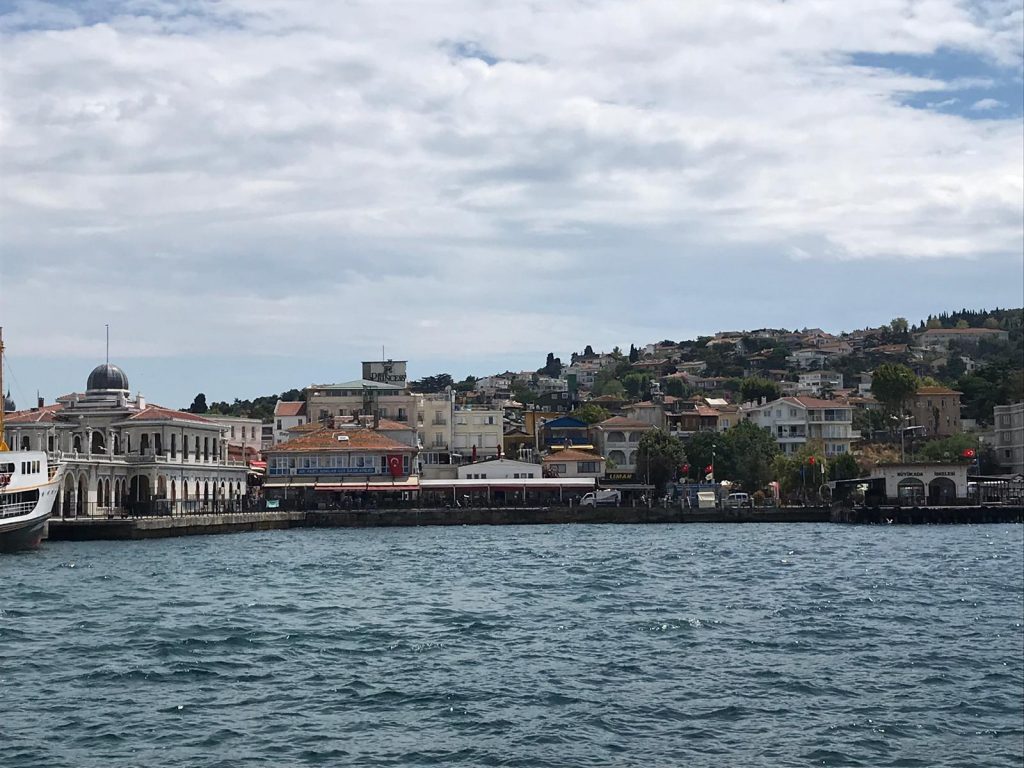
There is a mosque on the island, and there is also the famous Church of St. George at the top of the highest hill on the island. Depending how much time one has, the electric rickshaws can take you for a tour of the island up the hills. If the toilet needs to be used whilst on the island, the cost is 2 Turkish Liras per person, including for children.
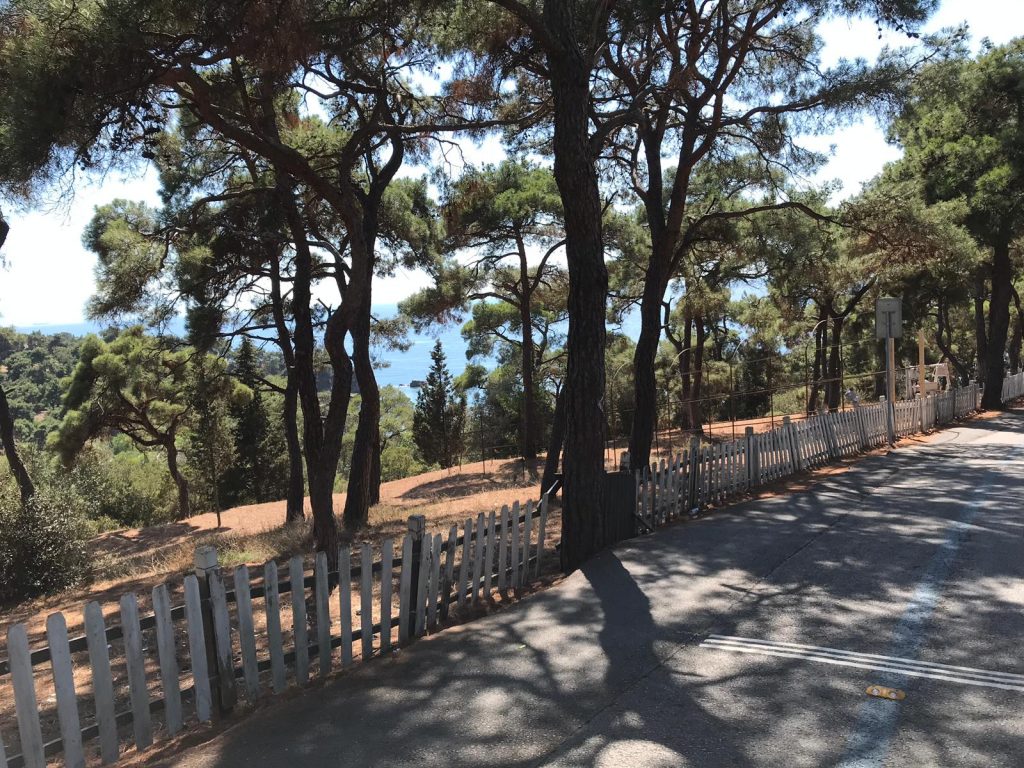
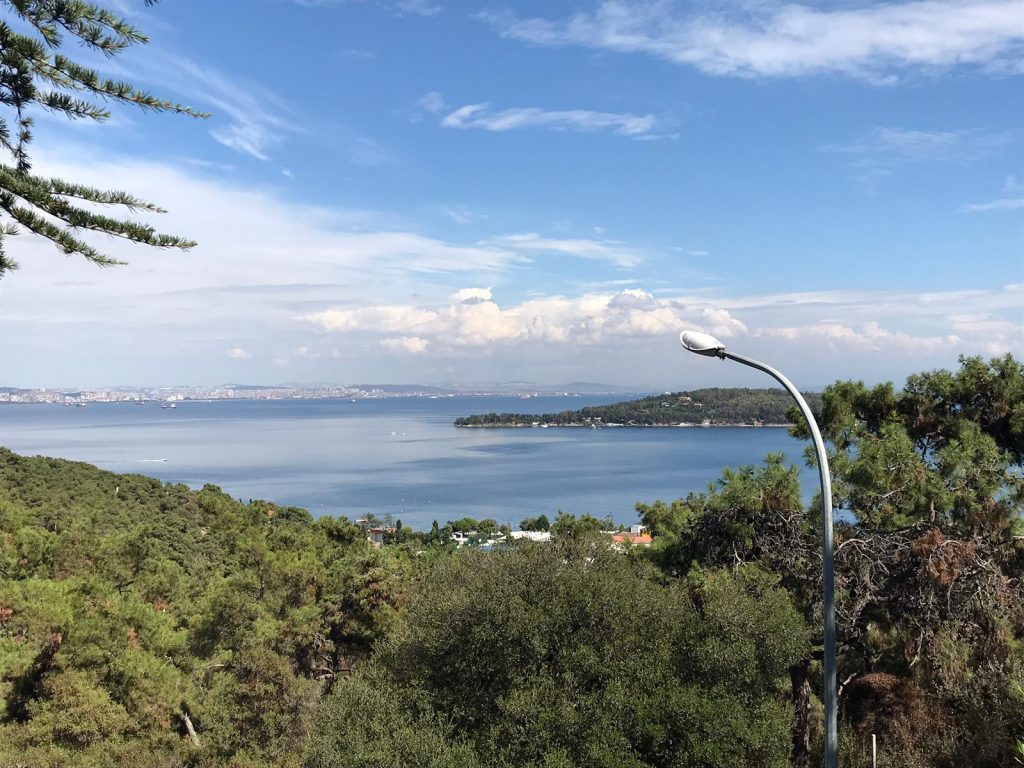
Whilst on the island, we meet with some people from the UK. This summer, many from the UK are visiting Turkey, although the overall number of tourists here are significantly low due to Covid-19. We also see some amulets being sold for a variety of purposes.
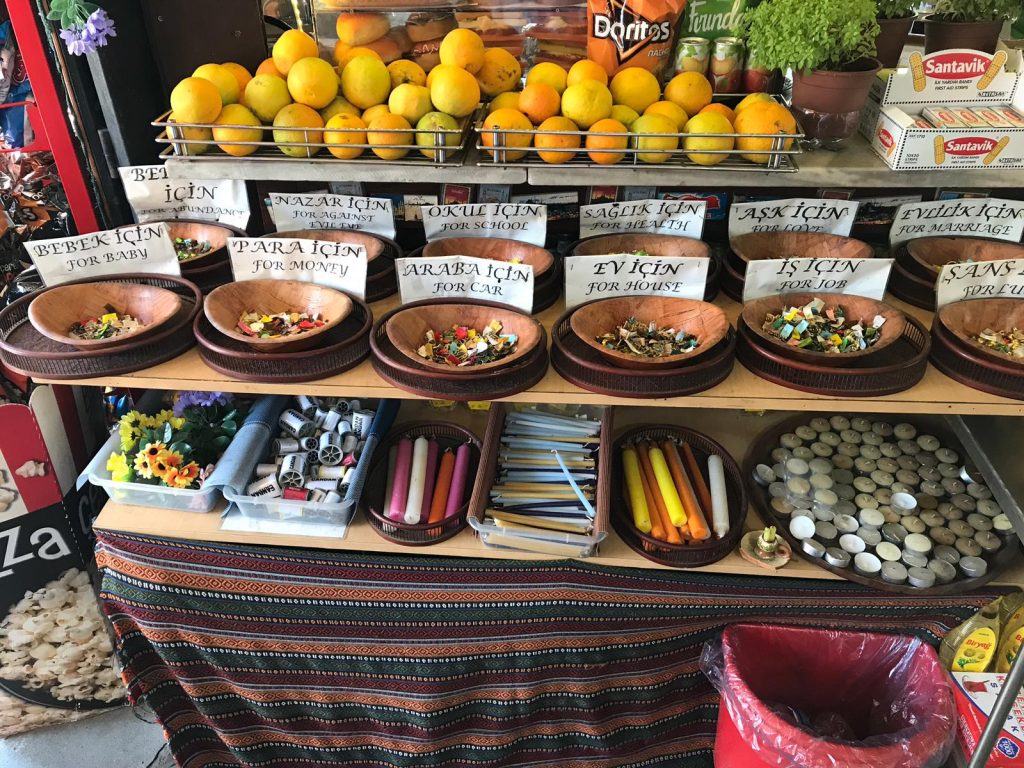
We return from the island this time to Eminonu. On this particular ferry, the Istanbul Kart cannot be used. The cost is the same, 10 Turkish Liras per adult, children travel free.
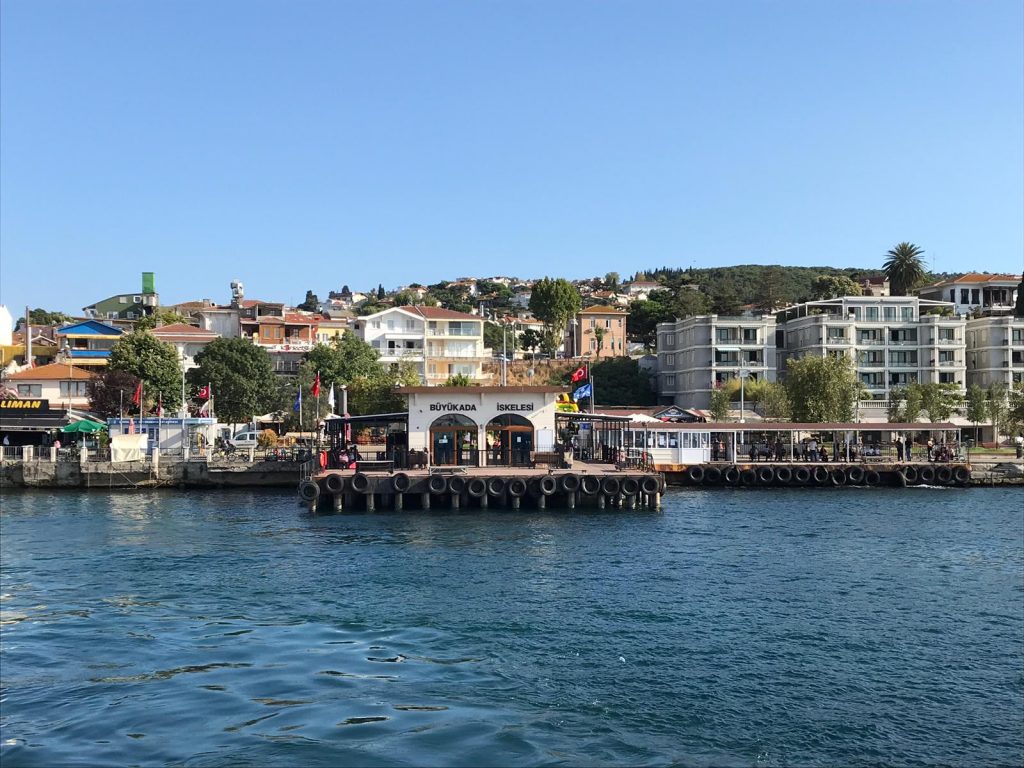
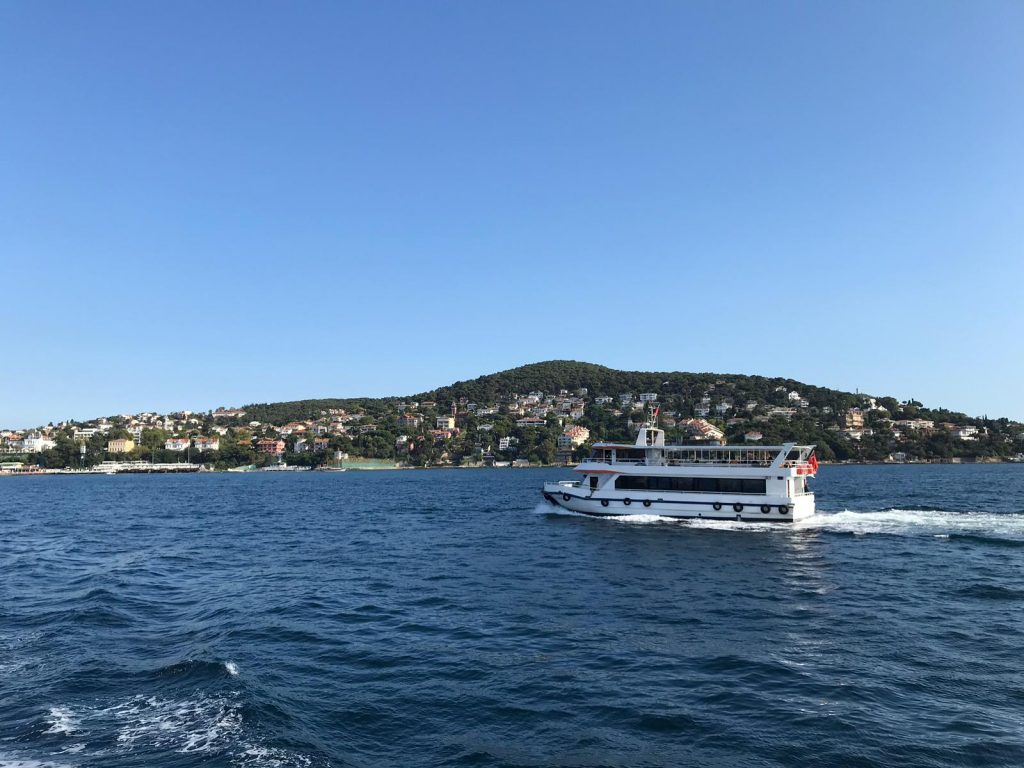
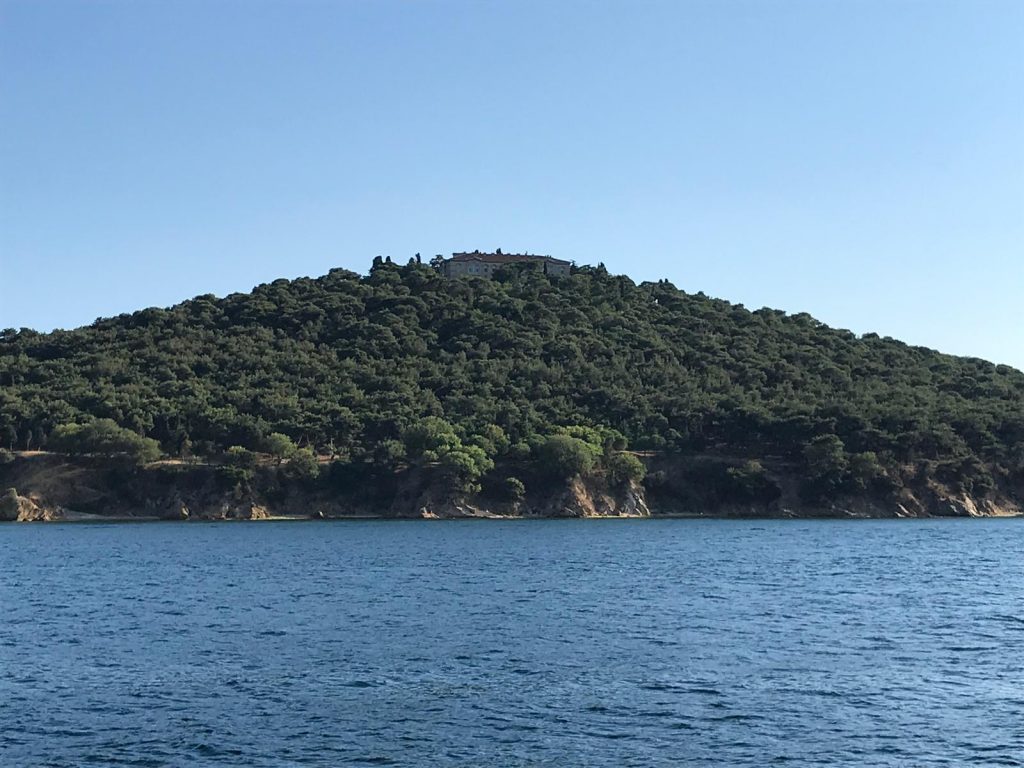
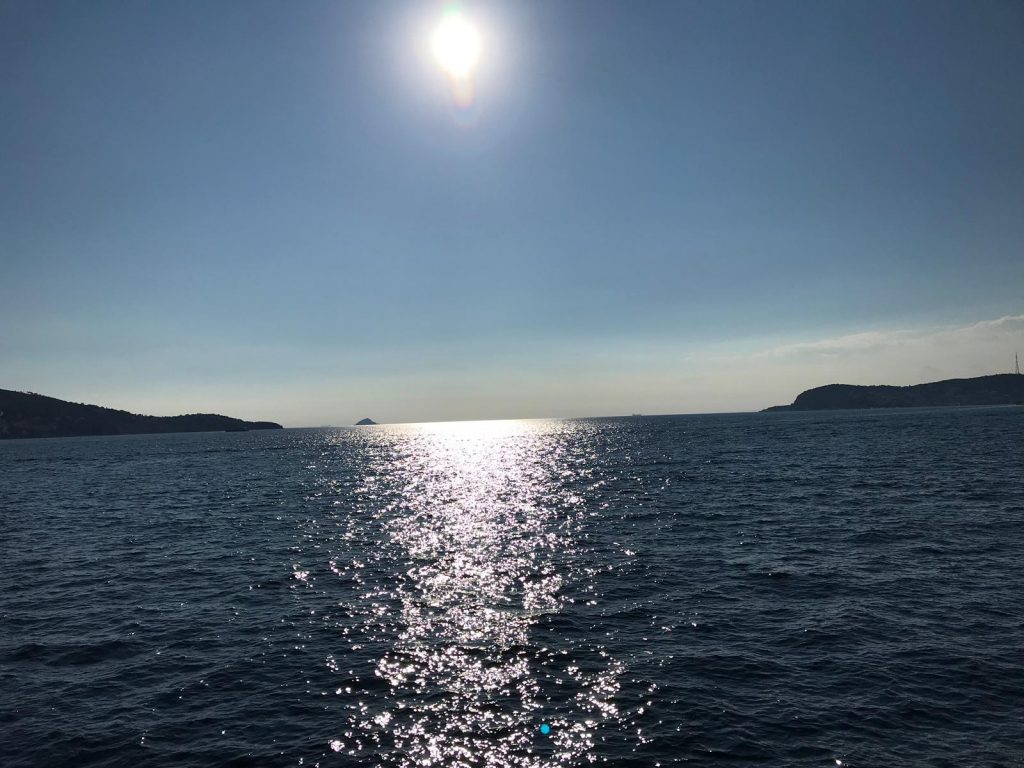
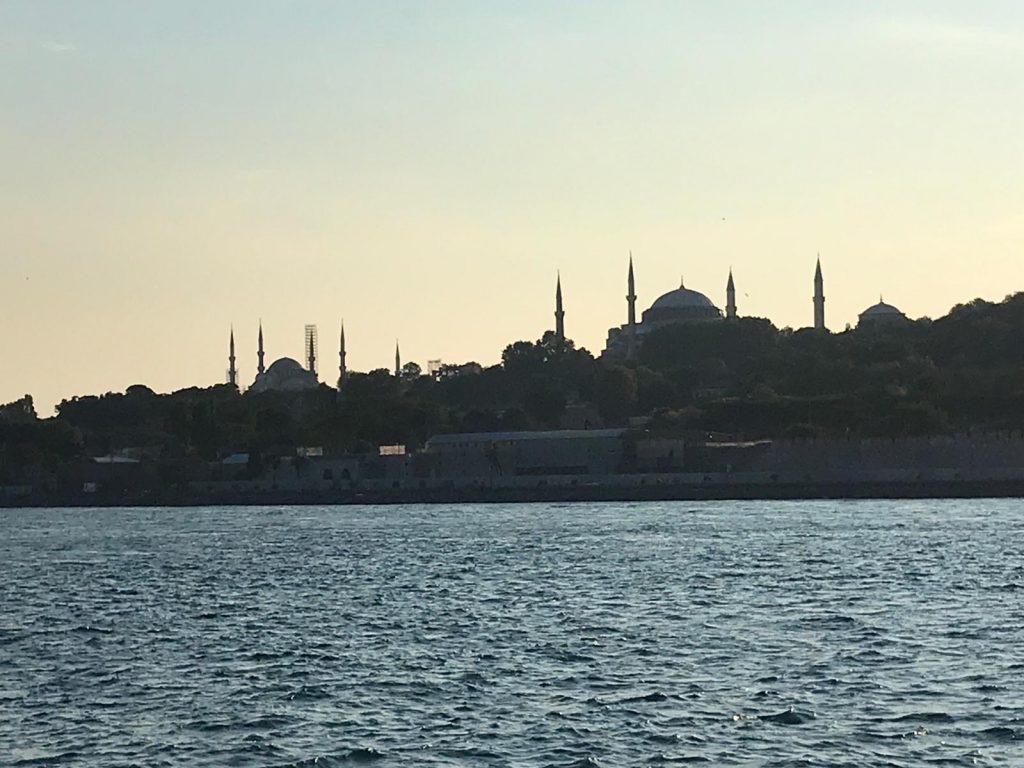
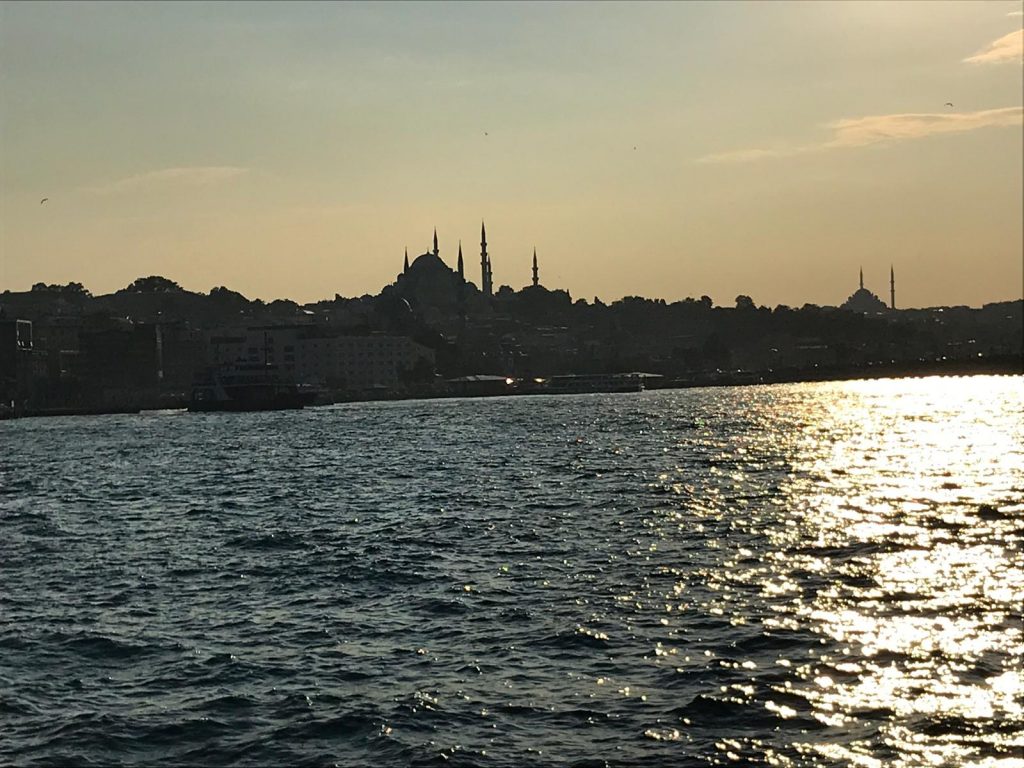
We arrive at Eminonu and perform Maghrib Ṣalāh at the local Masjid opposite the Sirkeci tram stop. The famous dessert shop, Hafiz Mustafa is also in this area. There are also other branches in the city. The milk cake and pomegranate flavour Turkish delight are not to be missed.
Istanbul is also home to many Syrian refugees. Many families have no choice but to beg and for some it may be a habit. Either way, it is useful to keep some money to hand to give to those who ask for assistance, and we should not be the ones to judge. Once the former Grand Mufti of Pakistan, Mufti Muḥammad Shafīʿ Ṣāḥib (d. 1396/1976) gave a beggar some money. His son who had just graduated, our respected Mufti Muḥammad Taqī Ṣāḥib (b. 1362/1943) commented that this has become a business and that they are not deserving. Mufti Muḥammad Shafīʿ Ṣāḥib said, “Taqī, if Allah Almighty thought about whether we are deserving before giving us anything, would we receive anything?”
As we return to the hotel via the tram, we can hear the beautiful readings of durūd (salutations) from across the city. It is Thursday night (Friday), and it is only befitting that the sounds of durūd on the best of creation reverberate throughout the city, may Allah’s peace and blessings be upon him forever.
Day 7 – Friday 21 August 2020
Jumuʿah Ṣalāh at Fatih Mosque
Fatih Mosque
Today is our final day in Istanbul. From the famous Ottoman Masjids, we have not yet performed Ṣalāh in the Fatih Mosque although we passed it on Wednesday. We therefore decide to perform Jumuʿah Ṣalāh there.
The original Fatih mosque was constructed between 1463 and 1470 on the site of the Church of the Holy Apostles. It was seriously damaged in the 1766 earthquake and was rebuilt in 1771 to a different design.
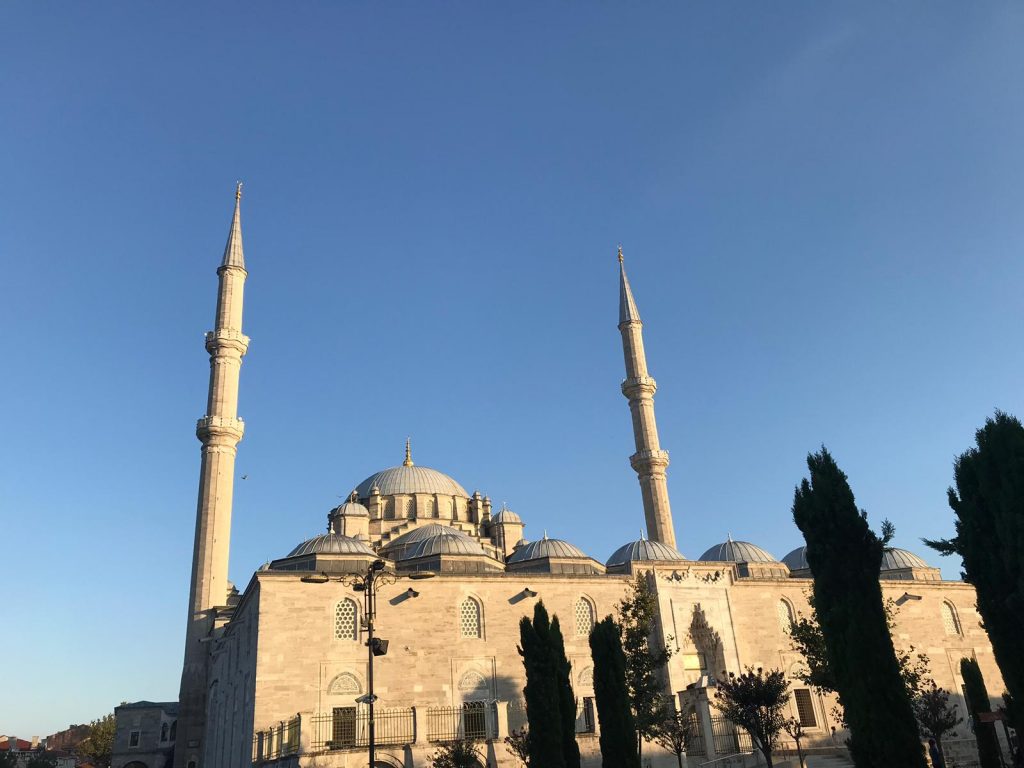
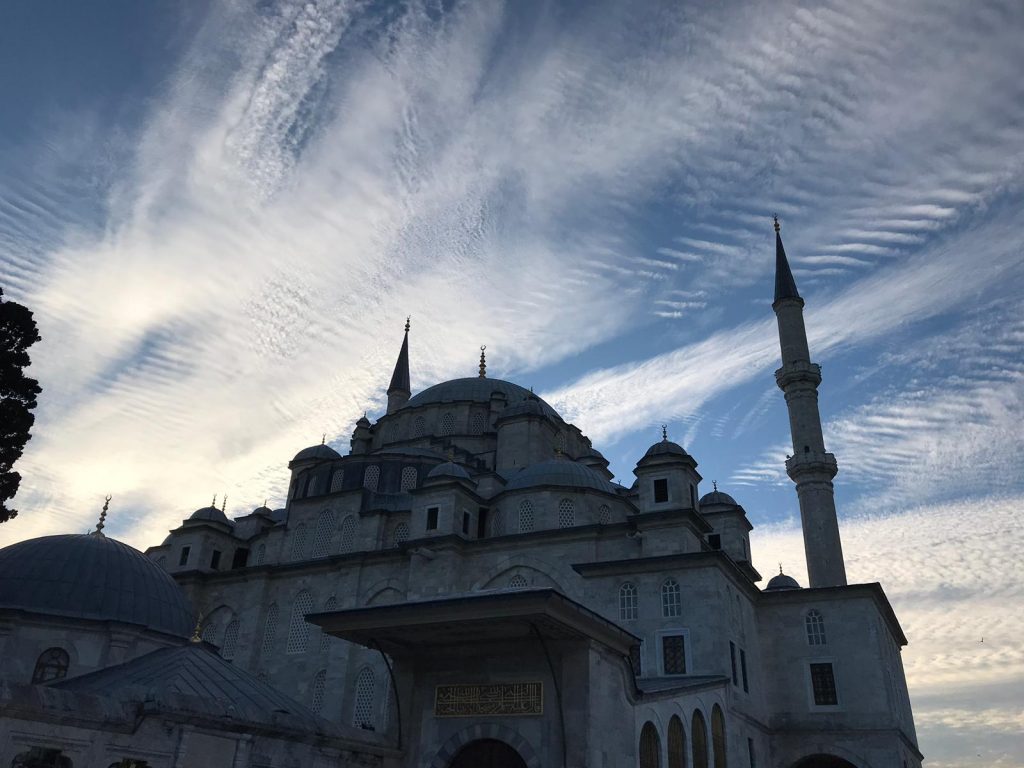

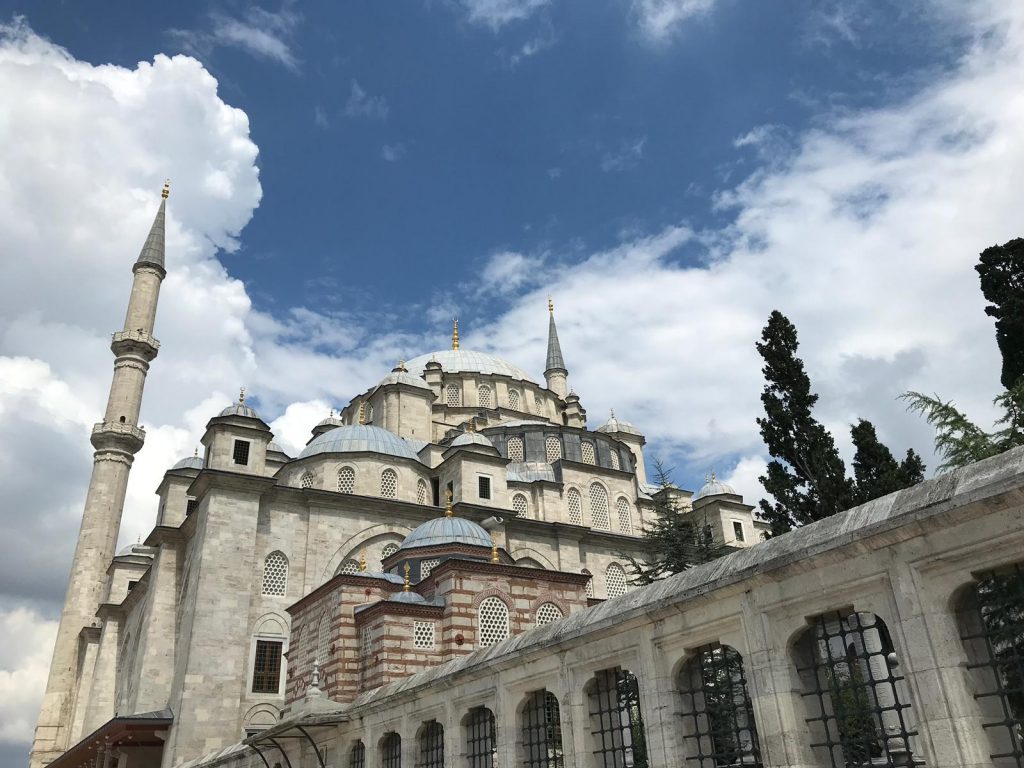
Sultan Muḥammad al-Fātiḥ
It is, like the entire district, named after the conqueror of Istanbul, Sultan Muḥammad al-Fātiḥ (d. 886/1481) who conquered Istanbul in 1453. He ruled from August 1444 to September 1446, after his father, Sultan Murad II renounced the throne, and again after his father died, from 1451 to 1481. Within two years of reclaiming the throne in 1451, he overthrew the Byzantine Empire by conquering Istanbul, thereby consolidating the Ottoman Empire and marking the end of the Middle Ages.
During the siege of Istanbul, his men numbered over 100,000 (including slaves conscripted from conquered states), and approximately 125 ships were at his disposal. Gunpowder was used to great advantage during the siege, and the new technological developments embraced by the Sultan tipped the scales in his favour. What is remarkable is that he was only 21 when Istanbul was conquered. It was during his reign that much of the Southeast of Europe was conquered as far west as Bosnia. He visited Bosnia and a mosque was built in Sarajevo in his honour. We visited this mosque in 2018, it is known as the Emperors Mosque and is the oldest mosque in Sarajevo (refer to our Balkans Travelogue).
Some scholars are of the view that the ḥadīth mentioned above regarding the conquest of Constantinople refers to him, as mentioned above.
Due to social distancing, we were advised to arrive early to get a space in the Masjid. Prior to Jumuʿah Salah, there is recitation of the Quran for 30 minutes, followed by the Khuṭbah and Ṣalāh. The Khuṭbah is predominantly in Turkish.
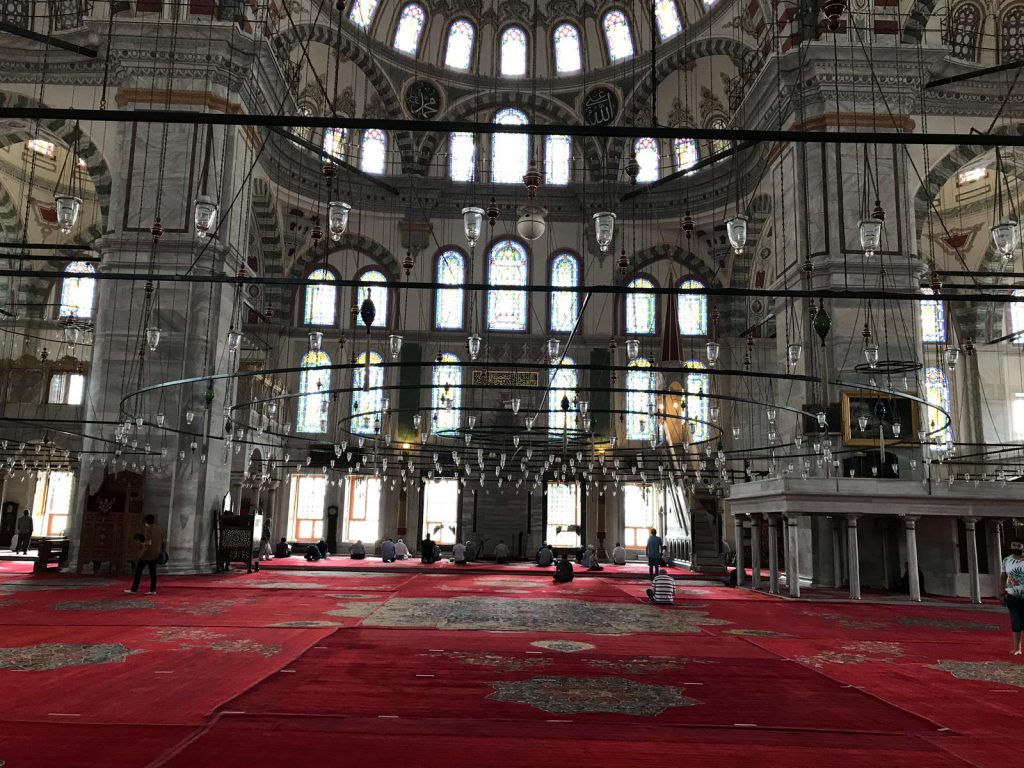
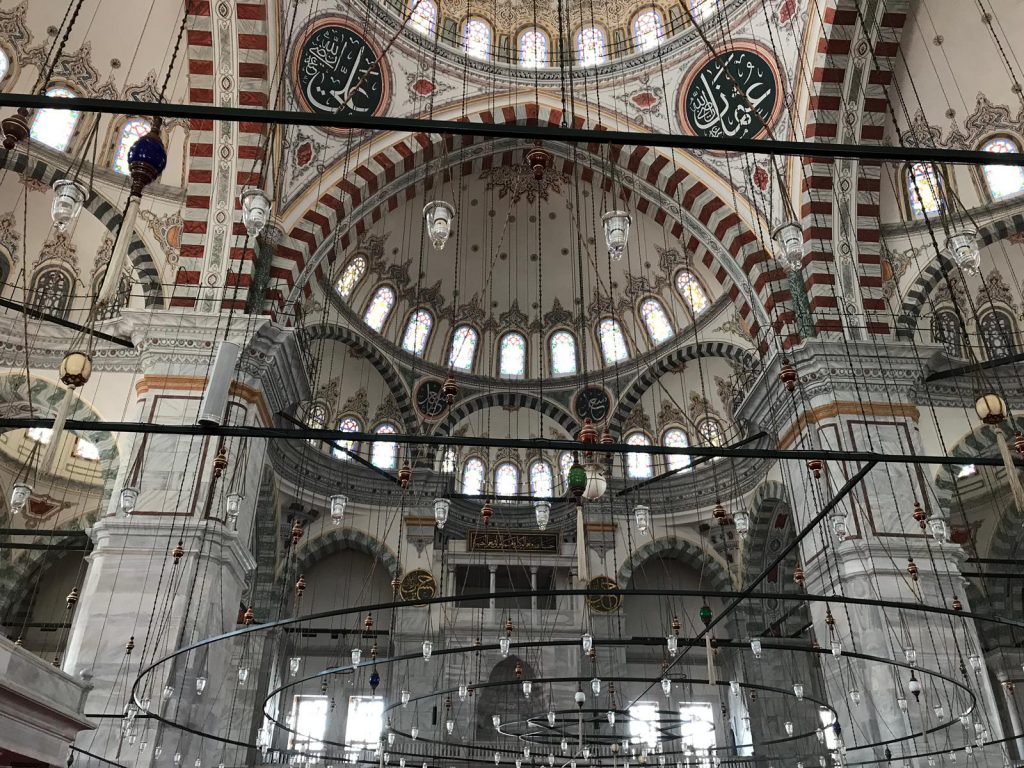
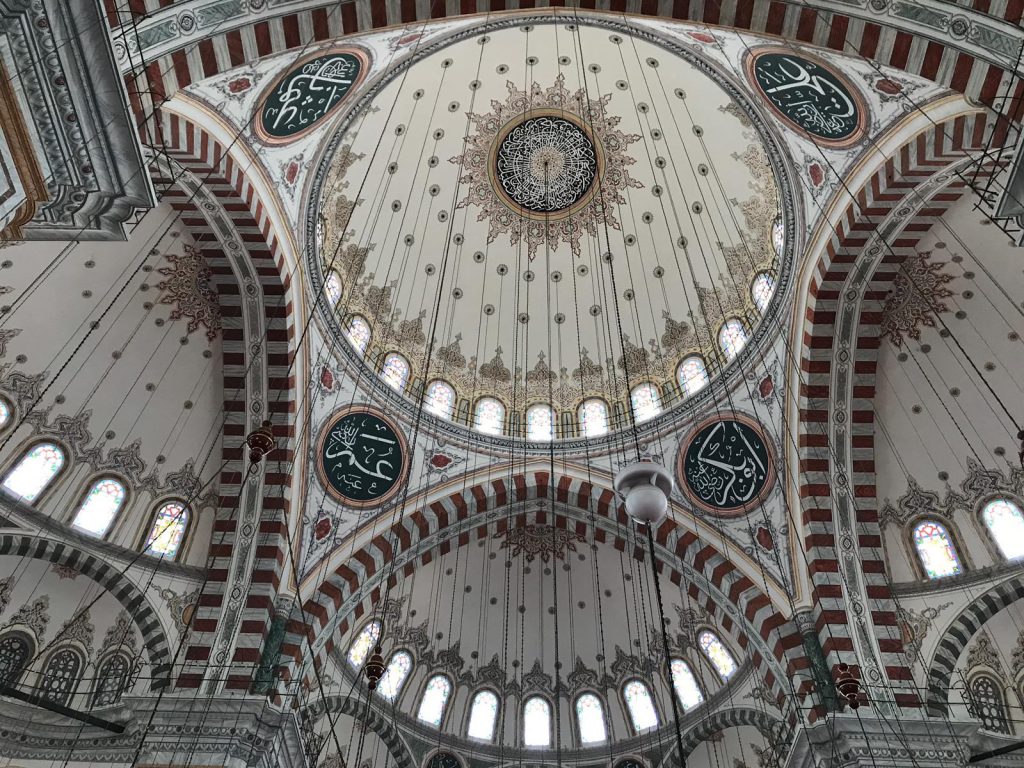
After Ṣalāh, we meet with my uncle Mawlana Muḥammad from Dewsbury who kindly takes us out, along with some other relatives, for a meal.
We return later in the evening to Fatih for some shopping and rest early.
The Turkish Lira has strengthened today following the announcement of the discovery of Gas in the Black Sea. The risk, however, is that the west increases its efforts to install their puppet in the country.
Day 8 – Saturday 22 August 2020
Return to Blackburn
At 5am, our dear friend Dr. Mahmut Salihoglu collects us from our hotel and drops us to Istanbul’s Sabiha Gokcen International Airport. We travel on the 7.45am flight to London Stanstead and arrive at 9.30am. We collect our car and travel home via Leicester where we spend a few hours.
Whilst in Leicester, I collect some copies of Mufti Mahmood Bardoli’s recently published volume five of the series of Urdu travelogues titled ‘Deykhī huwī Dunyā’. This volume comprises of 240 pages, featuring the travels to Malta and Cyprus. My English travelogues available online are also translated within this collection along with my Arabic treatise on the ḥadīths of Umm Ḥarām bint Milḥān (d. 28/648-9, may Allah be pleased with her) and its Urdu translation.
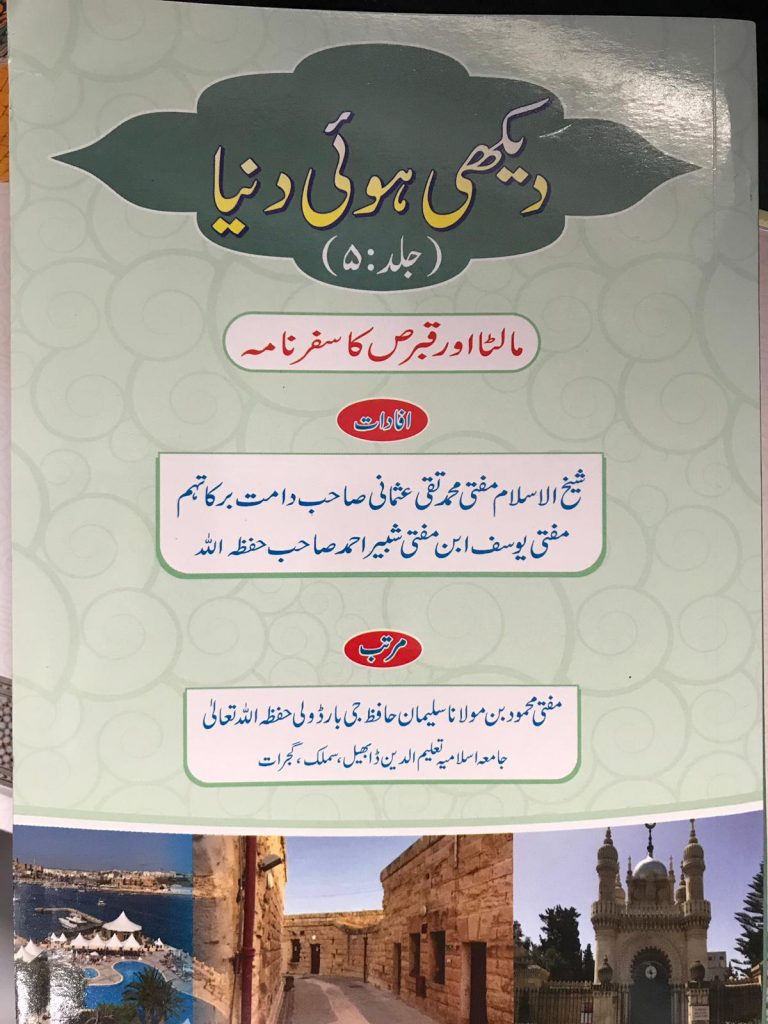
Concluding Thoughts
The following are some concluding thoughts in no particular order:
First, there is an Islamic revival in Turkey both at a grassroots and political level. There is an increased sense of pride in the Ottoman past. The decision to revert Aya Sofya into a Masjid was not opposed by any mainstream political party because of the widespread support. More youth are visible in the Masjids and there are many new centres for Islamic education.
Second, Istanbul is becoming an international hub for learning and research with many opportunities for private learning, university courses at undergraduate and postgraduate level. It is now possible for Arabic speakers to access university courses on Islamic studies without any knowledge of Turkish. There are also many Syrian scholars who can be benefited from.
Third, Istanbul is also a hub for many refugees from Syria, Libya, Iraq, China and elsewhere. Although we were unable to visit the Uighurs, colleagues from Ummah Welfare Trust (UK) have ongoing charitable programmes for the Uighurs who have migrated to Turkey. The Turkish authorities have welcomed these refugees and provided them a safe haven. The oppression they have endured and their families continue to endure is beyond human comprehension.
Fourth, Turkey in general and Istanbul in particular is full of history and heritage. A few days is not sufficient in Istanbul. Some of the other landmarks and places of interest which we did not visit include:
- ISAM – The Centre for Islamic Studies established and managed by the Diyanet.
- The various libraries containing manuscripts.
- The Sokollu Mehmet Pasha Mosque which is famed to displaying what are alleged to be four pieces of the black stone of the Kabah. For further details, refer to the following link: https://www.islamiclandmarks.com/turkey/sokollu-mehmet-pasha-mosque.
- The Çamlıca Mosque on the Asian side of the city, it is the largest Masjid in Turkey and was opened in 2019. The mosque can hold 63,000 people and includes a museum, art gallery, library, conference hall, and underground parking lot for 3,500 vehicles.
- The Panorama 1453 Museum. It has a great Panorama 360° view of Sultan Muhammad Fatih’s final battle to enter Istanbul.
- The Istanbul Archaeology Museum.
- The Bosphorus cruise.
- The Basilica Cistern, the largest of several hundred ancient cisterns that lie beneath the city.
- The Yeni Camii (New Mosque) and neighbouring Spice Bazaar.
- The Dolmabahçe Palace, which served as the main administrative centre of the Ottoman Empire from 1856 to 1887 and from 1909 to 1922.
May Allah Almighty unite the Muslims lands under a unified just rule and protect the faith, honour and dignity of Muslims worldwide. Āmīn.
Yusuf Shabbir
5 Muḥarram 1442 / 25 August 2020
Note: To read earlier travelogues, visit the following link: https://islamicportal.co.uk/category/articles/travelogues-articles/.

